Toshiba Information Systems CC4-E01 Mobile Phone with UMTS/GSM/DCS/PCS & Bluetooth User Manual 3 of 3
Toshiba Information Systems (UK) Ltd, Mobile Communications Division Mobile Phone with UMTS/GSM/DCS/PCS & Bluetooth Users Manual 3 of 3
Contents
- 1. Users Manual 2 of 3
- 2. Users Manual 3 of 3
- 3. Users Manual 1 of 3
Users Manual 3 of 3

Messaging
Messaging allows you to send and receive text messages, pictures, sounds, vObjects and other
data via the Vodafone live! Service Centre.
In This Chapter
❍Messaging Capabilities
❍MMS
❍SMS
❍MMS/SMS Common Operations
❍Email
❍Postcard
❍live! Studio

132
Messaging
Messaging Capabilities
Your phone is equipped with messaging functions for sending and receiving messages.
Via the Service Centre, you can exchange text messages, pictures, sounds, vObjects
and other data with other phones or PCs and other devices connected to the Internet.
For details on the messaging service, contact your service provider.
Message Menu
You can access the Message menu by pressing ( ) from standby mode.
◆Create Message: Allows you to create and send an MMS, SMS or postcard
message (pages 133, 144, 165).
◆Inbox: Allows you to check received messages (pages 138, 147).
◆Drafts: Allows you to save created messages (page 155).
◆Sent Messages: Allows you to check sent messages (pages 140, 149).
◆Unsent Messages: Stores messages that could not be sent (page 156).
◆Email: Allows you to use email (page 157).
◆live! Studio: Allows you to upload MMS messages, images and sounds to the
live! Studio album on the Web and organise uploaded data (page 169).
◆Templates: Allows you to create messages easily using preset templates (pages
136, 146).
◆Settings: Allows you to set various MMS, SMS and email settings (pages 141,
149, 150, 162).
Note
The network service is only available
while or is displayed on
the display.
Tip
Alternatively, you can press
from standby mode and select
Messaging to access the Message
menu.
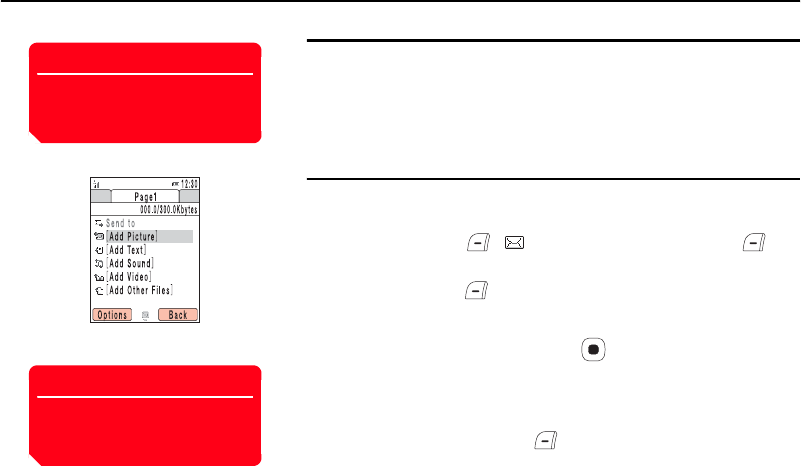
Messaging
133
MMS
About MMS
The Multimedia Messaging Service (MMS) allows you to exchange multimedia
messages containing data such as text, pictures, sounds, animations and video clips.
For details on MMS, contact your service provider.
Creating & Sending an MMS Message
You can send a message up to 300 KB including the address, subject, body text and
attachment files.
1. In standby mode, press ( ), select Create Message and press
(Select).
2. Select MMS and press (Select).
The Create MMS Message screen appears.
3. Select the item you want to enter and press .
◆Add Picture: Allows you to attach a picture in My Pictures. You can also activate
the camera and take a picture to attach.
◆Add Text: Allows you to enter a message. To set the text colour or font size,
select the text you entered, press (Options) and select Text Options.
◆Add Sound: Allows you to attach a sound in Sounds & Ringtones.
◆Add Video: Allows you to attach a video in My Videos. You can also activate the
camera and record a video to attach.
◆Add Other Files: Allows you to attach files such as vCard files in Other
Documents.
Note
Although the MMS functions vary by
country, the main functions are
basically the same.
Create MMS Message Screen
Note
Another file may not be able to be
added after attaching some types of
file.
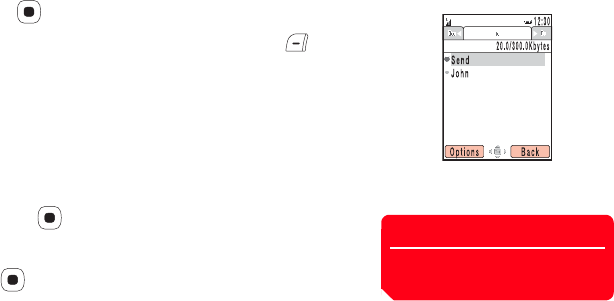
134
Messaging
4. Select Send to and press .
5. Select From Contacts, Enter Recipient or From Group List and press
(Select).
◆From Contacts: Allows you to specify an address from the Contacts list (page
74).
◆Enter Recipient: Allows you directly enter an address. You can enter up to 256
characters for the address.
◆From Group List: Allows you to specify a group as the address from the Group
list (page 70).
6. Specify an address and press .
The Recipient list appears.
7. Select Send and press .
The message is sent and then saved to Sent Messages.
Tip
Any message that could not be sent
is saved to Unsent Messages.
Recipient List Screen

Messaging
135
Recipient List Operations
You can perform the following operations if you press (Options) from the Recipient
list.
◆Send: Allows you to send the message.
◆Edit Recipient: Allows you to edit addresses.
◆Add Recipients: Allows you to add addresses. You can enter up to 30 addresses
for each of To, Cc and Bcc.
◆Delete Recipient: Allows you to delete addresses.
◆Edit Message: Allows you to edit the message.
◆Save to Contacts: Allows you to save an address to the Contacts list.
◆Set as To/Cc/Bcc: Allows you to switch To/Cc/Bcc for an address.
◆Save to Drafts: Saves the message as a draft message to Drafts.
◆Preview Message: Displays the message in the message preview screen.
◆Edit Subject: Allows you to enter a subject. You can enter up to 512 characters.
◆Sending Options: Allows you to set the following sending options: Delivery
Report, Read Report, Delivery Time, Expiry Time and MMS Priority. You
can preset these settings in “Sending Settings” (page 142) of the MMS settings.
Note
Some items do not appear depending
on the position of the cursor.
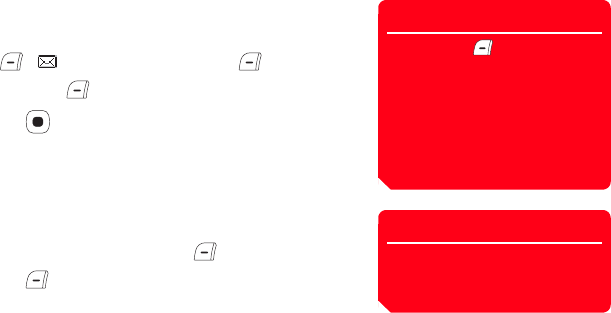
136
Messaging
Using an MMS Template to Create a Message
You can use MMS templates that have preset pictures and sounds to create messages.
You can also edit MMS templates.
1. In standby mode, press ( ), select Templates and press (Select).
2. Select MMS Templates and press (Select).
3. Select a template and press .
For details on the following procedure, see “Creating & Sending an MMS Message”
(page 133).
Managing Pages
You can add, delete and replace pages. You can set up to 20 pages for each message.
1. From the Create MMS Message screen (page 133), press (Options).
2. Select Add Page and press (Select).
A page is added.
When there is more than one page, you can perform the following operations if you
select Page Control in Step 2.
◆Add Page: Adds a page.
◆Delete Page: Deletes a page.
◆Previous/Next Page: Takes you to the previous or next page.
◆Move Page: Moves a page to a specified position.
Tip
• If you press (Options) in Step
3, you can edit or delete the
template or upload the template to
live! Studio, etc.
• If preset templates have been
deleted or edited, you can return
them to their initial state by
clearing the memory (page 253).
Tip
To set the page duration or
background colour of the page,
select Page Options in Step 2.

Messaging
137
Setting the File Playback Time
You can set the playback time for the text and attached files.
1. From the Create MMS Message screen (page 133), select text or an attached file
and press (Options).
2. Select Item Duration and press (Select).
3. Select Start Time and press (Select).
4. Enter the start time and press (OK).
5. Select Duration and press (Select).
6. Enter the display duration and press (OK).
Note
A start time and display duration that
exceeds the page duration (page
136) cannot be set.
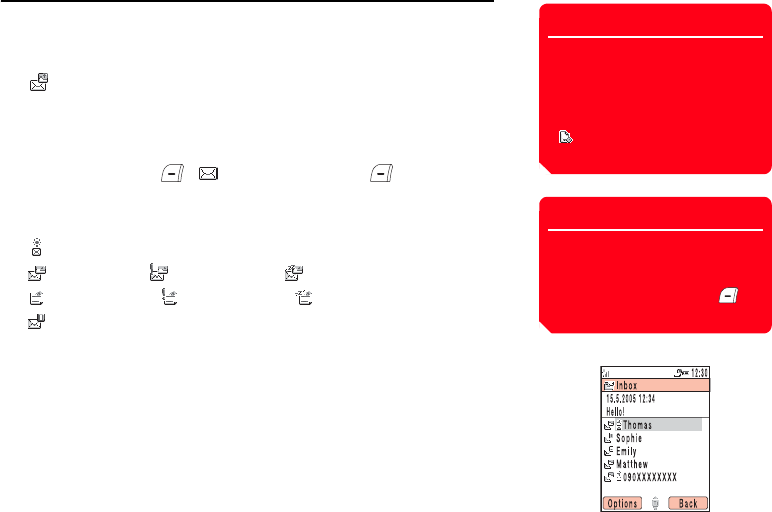
138
Messaging
Checking MMS Messages in Inbox
When a message is received in standby mode, an animation is displayed while the
ringtone is playing and your phone is vibrating. If your phone is closed, the animation is
displayed on the external display.
The indicator appears at the top of the display. Received messages are saved to
Inbox.
For details on the operations you can perform from the Inbox list or a message, see
page 151.
1. In standby mode, press ( ), select Inbox and press (Select).
The list appears.
The following indicators appear for MMS messages.
appears for unread messages.
MMS message ( high priority level, low priority level)
MMS notification ( high priority level, low priority level)
Delivery report message
List Screen
Tip
To display the Inbox list so as you can
check a message after it has been
received, select New MMS in the
information prompt and press
(Select).
Note
Some attached files cannot be
displayed/played unless the
corresponding content key (content
usage right) is downloaded. When a
content key is being downloaded, the
indicator appears at the top of
the display.
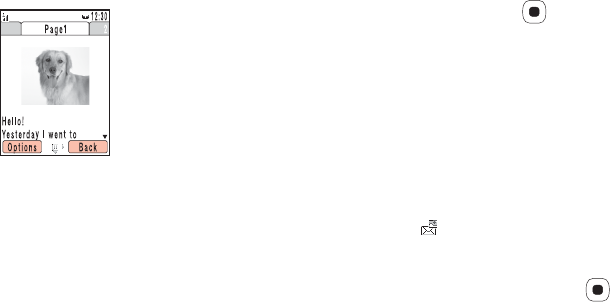
Messaging
139
2. Select the message you want to check and press .
The message appears.
If you receive an MMS message with multiple pages set, pictures, sounds and text
are presented in a slideshow-like format. Whether an attached file displays/plays
depends on the Auto-extract File setting of “Receiving Settings” (page 141). If
there is an attached video or other file, the file icon is displayed.
Receiving Complete MMS Messages
When Retrieve Mode of “Receiving Settings” (page 141) is set to Deferred or Always
Ask, messages are not received automatically. Notifications are received instead.
When a notification is received, the indicator appears at the top of the display. The
notification contains the first part of the message. The complete MMS message is
stored temporarily at the service centre.
In the notification message, select <Retrieve MMS> and press .
Message Screen
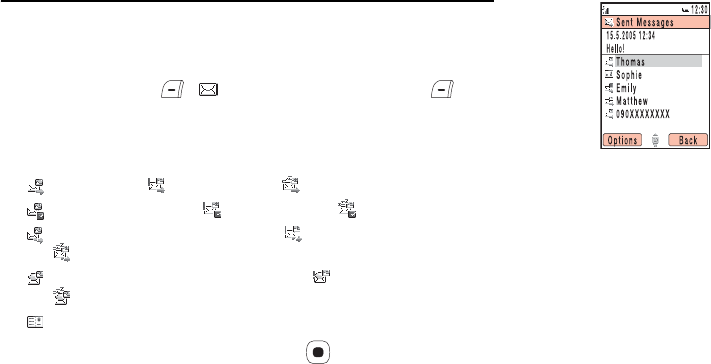
140
Messaging
Checking MMS Messages in Sent Messages
Sent messages are saved to Sent Messages of the mailbox.
For details on the operations you can perform from the Sent Messages list or a
message, see page 153.
1. In standby mode, press ( ), select Sent Messages and press
(Select).
The list appears.
The following indicators appear for MMS messages.
MMS message ( high priority level, low priority level)
Delivered MMS message ( high priority level, low priority level)
MMS message for which delivery failed ( high priority level,
low priority level)
MMS message for which opening confirmed ( high priority level,
low priority level)
Postcard
2. Select the message you want to check and press .
The message appears.
List Screen

Messaging
141
MMS Settings
You can set various MMS settings.
Receiving Settings
1. In standby mode, press ( ), select Settings and press (Select).
2. Select MMS Settings and press (Select).
3. Select Receiving Settings and press (Select).
4. Select the item you want to set and press (Select).
◆Retrieve Mode: Allows you to set whether to automatically retrieve messages
received by the mail server. There are two settings: Home Network and
Roaming Network. For each of the settings, you can select Immediate,
Deferred or Always Ask.
◆Auto-extract File: Allows you to set whether to automatically display/play
picture and sound files attached to messages.
◆Reply for Delivery: Allows you to set whether to reply to requests for delivery
confirmation.
◆Anonymous Msg.: Allows you to set whether to receive anonymous messages.

142
Messaging
Sending Settings
1. After Step 2 of “Receiving Settings” (page 141), select Sending Settings and
press (Select).
2. Select the item you want to set and press (Select).
◆Sender Visibility: Allows you to set whether to notify recipients of your address.
◆Delivery Report: Allows you to receive delivery reports to confirm whether sent
messages were delivered to recipients.
◆Delivery Time: Allows you to specify a time up to seven days in the future for
delivering messages from the service centre to recipients.
◆Read Report: Allows you to receive read reports to confirm whether sent
messages were read by recipients.
◆Expiry Time: Allows you to set the length of time a sent message is stored on the
mail server.
◆MMS Priority: Allows you to set the message priority level to High, Normal or
Low.
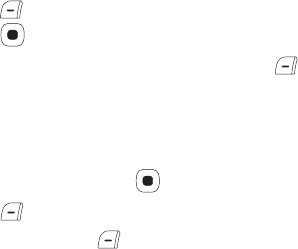
Messaging
143
Setting the Default Recipient
You can set the default recipient you want to send a picture to when your phone is in the
turnover style.
1. After Step 2 of “Receiving Settings” (page 141), select Default Recipient and
press (Select).
2. Press .
3. Select From Contacts or Enter Recipient and press (Select).
◆From Contacts: Allows you to specify an address from the Contacts list (page
74).
◆Enter Recipient: Allows you directly enter an address. You can enter up to 256
characters for the address.
4. Specify an address and press .
5. Press (Options).
6. Select Save and press (Select).
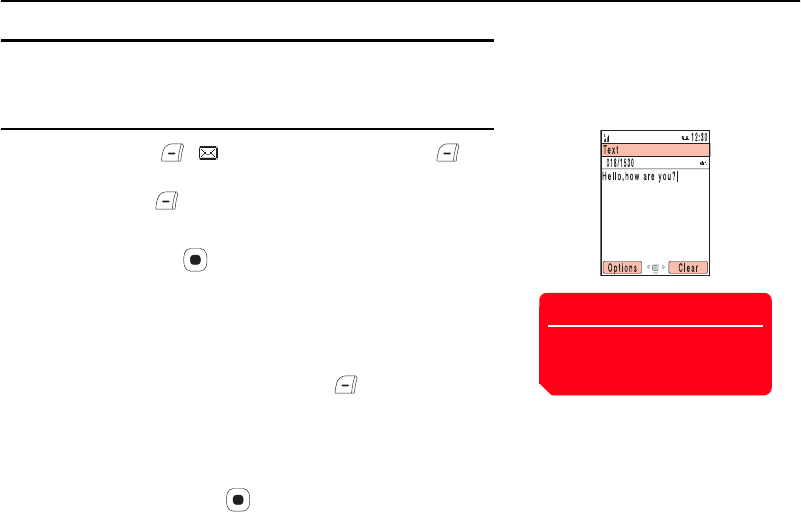
144
Messaging
SMS
About SMS
The Short Message Service (SMS) allows you to exchange text message with other
phones. For details on SMS, contact your service provider.
Creating & Sending an SMS Message
1. In standby mode, press ( ), select Create Message and press
(Select).
2. Select SMS and press (Select).
The Create Message screen appears.
3. Enter a message and press .
The maximum number of characters for one SMS message is 160. If you enter
more than 160 characters, the message is split into linking SMS messages when it
is sent. Up to ten linking SMS messages can be sent at one time (equivalent to
1530 characters).
4. Select From Contacts or Enter Recipient and press (Select).
◆From Contacts: Allows you to specify a phone number from the Contacts list
(page 74).
◆Enter Recipient: Allows you directly enter a phone number. You can enter up to
20 digits.
5. Specify a phone number and press .
The Recipient list appears.
Tip
Any message that could not be sent
is saved to Unsent Messages (page
156).

Messaging
145
6. Select Send and press .
The message is sent and then saved to Sent Messages.
Recipient List Operations
You can perform the following operations if you press (Options) from the Recipient
list.
◆Send: Allows you to send the message.
◆Edit Recipient: Allows you to edit the address.
◆Delete Recipient: Allows you to delete the address.
◆Add Recipient: Allows you to add an address. You can enter up to ten
addresses.
◆Edit Message: Allows you to edit the message.
◆Save to Contacts: Allows you to save an address to the Contacts list.
◆Save to Drafts: Saves the message as a draft message to Drafts.
◆Sending Options: Allows you to set the following sending options: Delivery
Report and Expiry Time. You can preset these settings in “SMS Settings” (page
149).
Note
Some items do not appear depending
on the position of the cursor.

146
Messaging
Using an SMS Template to Create a Message
Templates allow you to enter messages easily. You can also save frequently used
messages as templates.
1. In standby mode, press ( ), select Templates and press (Select).
2. Select SMS Templates and press (Select).
3. Select a template and press .
For details on the following procedure, see “Creating & Sending an SMS Message”
(page 144).
Tip
To perform an operation such as
editing and deleting a template
(except for a preset SMS template),
press (Options) in Step 3.
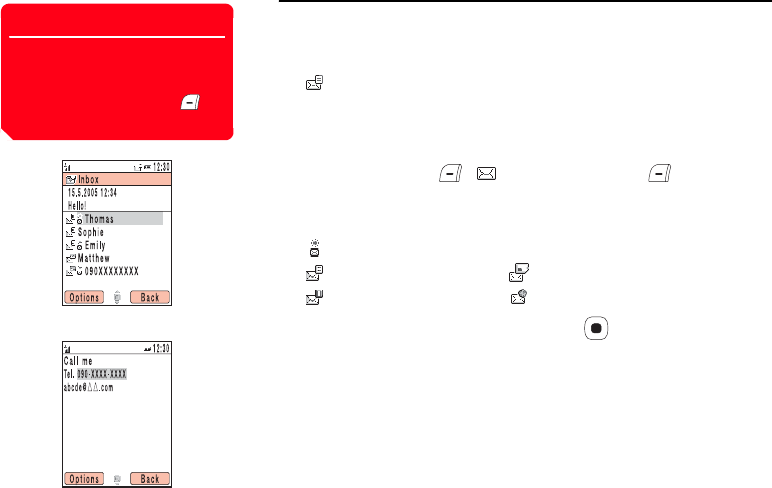
Messaging
147
Checking SMS Messages in Inbox
When a message is received in standby mode, an animation is displayed while the
ringtone is playing and your phone is vibrating. If your phone is closed, the animation is
displayed on the external display.
The indicator appears at the top of the display. Received messages are saved to
Inbox.
For details on the operations you can perform from the Inbox list or a message, see
page 151.
1. In standby mode, press ( ), select Inbox and press (Select).
The list appears.
The following indicators appear for SMS messages.
appears for unread messages.
SMS Message SMS message in the SIM card
Delivery report message WAP Push message
2. Select the message you want to check and press .
The message appears.
List Screen
Message Screen
Tip
To display the Inbox list so as you can
check a message after it has been
received, select New SMS in the
information prompt and press
(Select).

148
Messaging
Checking WAP Push Messages
WAP Push is an information delivery service that allows you to receive notifications in
real time from the Web server. When you receive a message, the indicator appears
at the top of the display. If Auto Launch (page 180) of the browser settings is set to On,
your phone accesses the specified URL as soon as the message is received. Some push
messages are just saved to the Inbox.
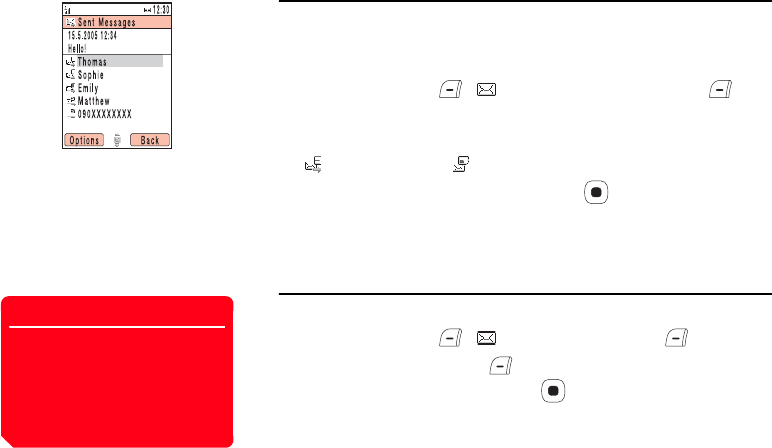
Messaging
149
Checking SMS Messages in Sent Messages
Sent messages are saved to Sent Messages of the mailbox.
For details on the operations you can perform from the Sent Messages list or a
message, see page 153.
1. In standby mode, press ( ), select Sent Messages and press
(Select).
The following indicators appear for SMS messages.
SMS message SMS message in the SIM card
2. Select the message you want to check and press .
The message appears.
SMS Settings
You can set various SMS settings.
1. In standby mode, press ( ), select Settings and press (Select).
2. Select SMS Settings and press (Select).
3. Select the item you want to set and press .
◆Delivery Report: Allows you to receive delivery reports to confirm whether sent
messages were delivered to recipients.
◆Expiry Time: Allows you to set an expiry time for messages.
◆Message Centre: Allows you to edit the centre number for SMS. The centre
number is saved to the SIM card.
◆SMS Type: Allows you to set the SMS type for outgoing messages to Text,
Email, Fax Group 3, Fax Group 4 or Pager.
Note
Do not change the centre number for
the Message Centre unless your
service provider informs you that it
has been changed. Otherwise, you
will no longer be able to use the
service.

150
Messaging
MMS/SMS Common Operations
Common Settings
You can set various settings common to MMS and SMS.
1. In standby mode, press ( ), select Settings and press (Select).
2. Select Common Settings and press (Select).
3. Select the item you want to set and press (Select).
◆Reply Settings: Allows you to set whether to quote received messages when
replying to them.
◆Font Size: Allows you to select a message font size from Large, Standard and
Small.
◆Page Scroll: Allows you to select the scroll unit of the message display screen
from 1 Line, Half Screen and Full Screen.

Messaging
151
Inbox Operations
You can perform the following operations if you press (Options) from the Inbox list
or a message.
◆View: Allows you to check the contents of the message.
◆Play: Plays the MMS message from the first page.
◆Reply: Allows you to reply to the message.
◆Delete: Deletes one message.
◆Save Sender: Allows you to save the phone number of the sender to the
Contacts list.
◆Select Multi: Allows you to specify multiple messages and then retrieve or delete
them.
◆Forward: Allows you to forward the message.
◆Call Sender: Makes a call to the sender of the message.
◆Send to live! Studio: Allows you to upload the MMS message to a media album
on the Web (page 169).
◆Sort by: Changes the order that messages appear. You can select a sort option
from Date from Latest, Date from Oldest, Sender, Unread to Read and
Message Type.
◆Delete All: Deletes all messages in Inbox.
◆Extract: Allows you to use a phone number, email address, URL or file (MMS
message only) in the message.
◆View Item: Allows you to view all files attached to the MMS message. You can
also play, display and save files.
Note
Some items do not appear depending
on the message type or screen.
152
Messaging
◆Save as Template: Allows you to save the message as a template.
◆Copy Text: Allows you specify a range of text in any part of the message and
then copy the text.
◆Move to SIM/Phone: Allows you to move the SMS message to your SIM card or
phone.
◆Details: Displays the message details (time stamp, priority, address, size, etc.).

Messaging
153
Sent Messages Operations
You can perform the following operations if you press (Options) from the Sent
Messages list or a message.
◆View: Allows you to check the contents of the message.
◆Play: Plays the MMS message from the first page.
◆Resend: Allows you to edit the message and then resend it.
◆Delete: Deletes one message.
◆Select Multi: Allows you to specify multiple messages and then delete them.
◆Forward: Allows you to forward the message.
◆Extract: Allows you to use a phone number, email address, URL or file (MMS
message only) in the message.
◆Call Recipient: Makes a call to the recipient of the message.
◆Send to live! Studio: Allows you to upload the MMS message to a media album
on the Web (page 169).
◆Sort by: Changes the order that messages appear. You can select a sort option
from Date from Latest, Date from Oldest, Recipient and Message Type.
◆Delete All: Deletes all messages in Sent Messages.
◆View Item: Allows you to view all files attached to the MMS message. You can
also play, display and save files.
Note
Some items do not appear depending
on the message type or screen.
154
Messaging
◆Save as Template: Allows you to save the message as a template.
◆Copy Text: Allows you specify a range of text in any part of the message and
then copy the text.
◆Move to SIM/Phone: Allows you to move the SMS message to your SIM card or
phone.
◆Details: Displays the message details (time stamp, priority, address, size, etc.).

Messaging
155
Using Drafts
You can save the messages you create to Drafts.
1. In standby mode, press ( ), select Drafts and press (Select).
2. Select a message and press (Options).
3. Select the item you want to use and press (Select).
◆Edit: Allows you to edit the message.
◆Delete: Allows you to select from One, All or Select Multi for deleting
messages.
◆Send: Allows you to send the message.
◆Call Recipient: Makes a call to the recipient of the message.
◆Send to live! Studio: Allows you to upload the MMS message to a media album
on the Web (page 169).
◆Sort by: Changes the order that messages appear. You can select a sort option
from Date from Latest, Date from Oldest, Recipient and Message Type.

156
Messaging
Using Unsent Messages
Messages that could not be sent are saved to Unsent Messages.
1. In standby mode, press ( ), select Unsent Messages and press
(Select).
2. Select a message and press (Options).
3. Select the item you want to use and press (Select).
◆Edit: Allows you to edit the message.
◆Send: Allows you to send the message.
◆Delete: Deletes the message.
◆Select Multi: Allows you to specify multiple messages and then send or delete
them.
◆Call Recipient: Makes a call to the recipient of the message.
◆Send to live! Studio: Allows you to upload the MMS message to a media album
on the Web (page 169).
◆Sort by: Changes the order that messages appear. You can select a sort option
from Date from Latest, Date from Oldest, Recipient and Message Type.
◆Delete All: Deletes all messages.
Note
Some items do not appear depending
on the message type.
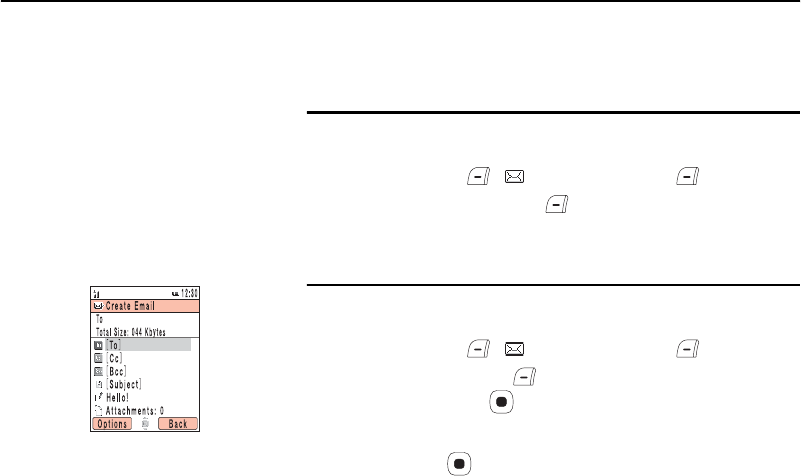
Messaging
157
Email
You can exchange long text messages and picture, video and melody attachments with
email compatible devices. A separate subscription is required to use email. For details,
contact your service provider.
Receiving Email
Unlike MMS and SMS, you need to check whether you have any new messages on the
email server and then download them. Received messages are saved to Inbox of Email.
1. In standby mode, press ( ), select Email and press (Select).
2. Select Sync. New Emails and press (Select).
Your phone connects to the email server and receives your email messages.
Creating & Sending an Email Message
You can send an email message up to 300 KB including the recipient address, subject,
body text and attachment files.
1. In standby mode, press ( ), select Email and press (Select).
2. Select Create Email and press (Select).
3. Enter a message and press .
You can enter up to 15,000 characters.
4. Select To and press .
You can also set an address for Cc or Bcc.
Create Email Screen
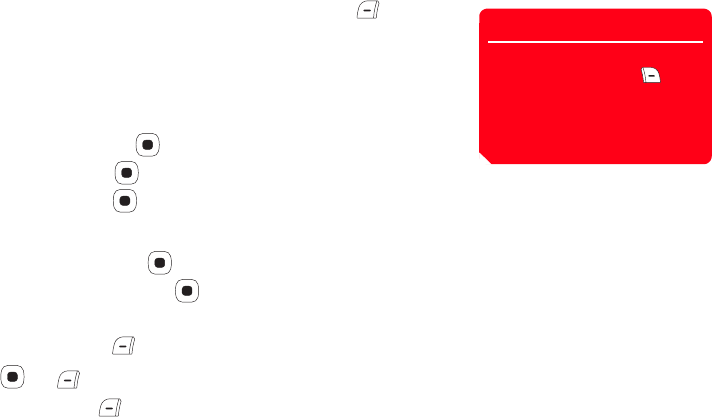
158
Messaging
5. Select From Contacts, Enter Recipient or From Group and press (Select).
◆From Contacts: Allows you to specify an address from the Contacts list (page
74).
◆Enter Recipient: Allows you to directly enter an address.
◆From Group: Allows you to specify a group as the address from the Group list
(page 70).
6. Specify an address and press twice.
7. Select Subject and press .
8. Enter a subject and press .
You can enter up to 512 characters.
9. Select Attachments and press .
10. Specify an attachment file and press .
The Attachment File list appears.
To add another file, press (Options) and select Add File.
11. Press and (Options).
12. Select Send and press (Select).
The message is sent and then saved to Sent Messages.
Tip
• To save the email message you are
creating to Drafts, press
(Back) in the Create Email screen.
• Any email message that could not
be sent is saved to Unsent
Messages.
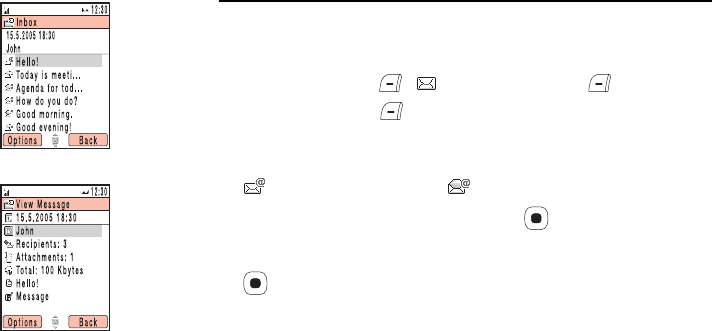
Messaging
159
Checking Email Messages in Inbox
Checking Received Messages
Received messages are saved to Inbox.
1. In standby mode, press ( ), select Email and press (Select).
2. Select Inbox and press (Select).
The list appears.
The following indicators appear in the list.
Unread Read
3. Select the message you want to check and press . The View Message screen
appears. If Headers Only is set for Sync. Option (page 163) of the email settings,
only the header is received. To download the message, select Message and press
. After the message is downloaded, it appears.
List Screen
View Message Screen

160
Messaging
Inbox Options
You can perform the following operations if you press (Options) from the Inbox list,
the View Message screen or a message.
◆View: Allows you to check the contents of the email message.
◆Reply: Allows you to reply to the email message.
◆Reply All: Allows you to reply to all senders of the email message.
◆Forward: Allows you to forward the email message.
◆Save to Contacts: Allows you to save the email address of the sender to the
Contacts list.
◆Delete: Deletes the email message.
◆Sort by: Changes the order that email messages appear. You can select a sort
option from Date from Latest, Date from Oldest and Sender.
◆Move: Allows you to move the email message to a my folder.
◆Extract URL: Allows you display a URL of a link included in the email message.
To connect to the URL, select the link and press .
◆Extract Numbers: Allows you display a phone number included in the email
message. To make a call to the phone number or add it to the Contacts list, select
it and press .
Note
Some items do not appear depending
on the screen type.
Tip
To display the Attachment File list
while the View Message screen is
displayed, select Attachments and
press . To save an attachment
file to the phone or memory card,
press (Options) and select
Save.
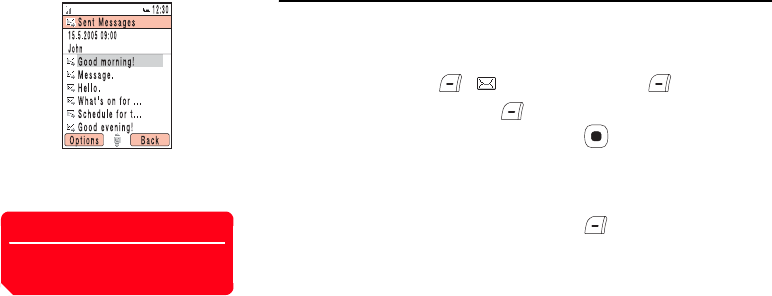
Messaging
161
Checking Email Messages in Sent Messages
Checking Sent Messages
Successfully sent messages are saved to Sent Messages.
1. In standby mode, press ( ), select Email and press (Select).
2. Select Sent Messages and press (Select).
3. Select the message you want to check and press .
The message appears.
Sent Messages Options
You can perform the following operations if you press (Options) from the Sent
Messages list or the Email Confirmation screen.
◆View: Allows you to check the contents of the email message.
◆Reply: Allows you to reply to the email message.
◆Reply All: Allows you to reply to all senders of the email message.
◆Forward: Allows you to forward the email message.
◆Save to Contacts: Allows you to save the email address of the recipient to the
Contacts list.
◆Delete: Deletes the email message.
◆Sort by: Changes the order that email messages appear. You can select a sort
option from Date from Latest, Date from Oldest and Recipient.
Note
Some items do not appear depending
on the screen type.

162
Messaging
Email Settings
You can set various email settings.
1. In standby mode, press ( ), select Settings and press (Select).
2. Select Email Settings and press (Select).
3. Select the item you want to set and press (Select).
◆Email Accounts: Allows you to add and edit an email account (page 163).
◆Vodafone Mail: Allows you to connect to the Web to set Vodafone Mail settings.
You can also change your email address. Follow the on-screen instructions.
Note
Some email settings are saved on the
SIM card. Replacing the SIM card
may change your email settings.

Messaging
163
Email Accounts
You can add and edit email accounts or switch the active email account.
1. After Step 3 of “Email Settings” (page 162), select Email Accounts and press
(Select).
2. Select Add Account and press .
To switch email accounts, select an account and press .
3. Enter an account name and press .
4. Select the item you want to set and press (Select).
◆General Settings: Allows you to set and edit general settings. To edit the
account name, select (Account Name). To edit the delete settings for
messages on the server, select Delete on Server.
◆Receiving Emails: Allows you to set and edit settings for receiving email
messages. To set the protocol type, select (Protocol) and then select POP3
or IMAP4. To edit the server address, port, user name or password, select
Server Address, (Port), Username or Password. To set limits for receiving
messages, select (Sync. Option).
◆Sending Options: Allows you to set and edit sending options. To edit the server
address, port, sender name or sender address, select Server Address,
(Port), Sender Name or Sender Address.
Note
• You can add up to three email
accounts. However, after you
switch email accounts, the
messages received for the previous
account are no longer displayed in
Inbox.
• If you delete an email account, the
messages received for the account
are also deleted. To retain
messages, move them to My
Folder1/2/3 before switching email
accounts.
Tip
To delete an email account, select the
email account you want to delete in
Step 2, press (Options) and
select Delete.

164
Messaging
To set whether to use authentication when connected to the server, select
(Authentication). To set whether to add a signature automatically or edit the
signature, select Signature. You can enter up to 256 characters for the signature.
To set sent messages to be saved automatically to Sent Messages, select Auto
Save.

Messaging
165
Postcard
Postcard is a service that allows you to create an actual postcard by adding a message
to a picture taken with the camera or a picture saved to My Items, and then send it to
the postal address of a specified recipient. For details on the Postcard service, contact
your service provider.
Postcard and MMS/SMS share the same Sent Messages, Unsent Messages and Drafts
folders.
Note
This function is dependent on the
network.
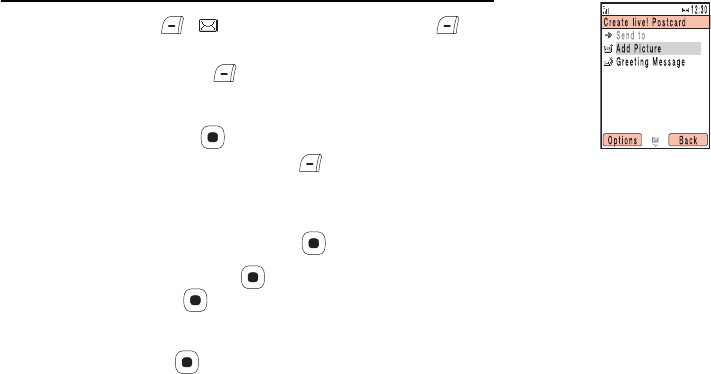
166
Messaging
Creating & Sending a Postcard
1. In standby mode, press ( ), select Create Message and press
(Select).
2. Select live! Postcard and press (Select).
The Create Postcard screen appears.
3. Select Add Picture and press .
4. Select My Pictures or Take Picture and press (Select).
◆My Pictures: Allows you to select a picture from My Items.
◆Take Picture: Activates the camera so as you can to take a new picture.
After you select a picture for the postcard, press .
5. Select Greeting Message and press .
6. Enter a message and press .
You can enter up to 200 characters.
7. Select Send to and press .
Create Postcard Screen
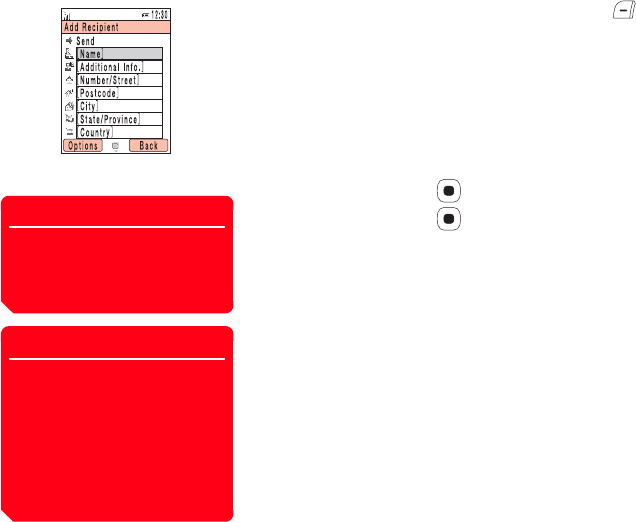
Messaging
167
8. Select Enter Recipient or From Contacts and press (Select).
◆Enter Recipient: Allows you directly enter an address.
◆From Contacts: Allows you to specify an address from the Contacts list (page
74).
The Add Recipient screen appears.
9. Specify an address.
You can specify up to three addresses.
10. Select Send and press .
11. Select Send and press .
The postcard is sent and then saved to Sent Messages.
Add Recipient Screen
Note
The postcard cannot be sent if a
picture was not selected or the
necessary recipient information was
not entered.
Tip
• You can also create a postcard if
you select live! Postcard from the
following functions.
• Camera (page 103)
• Pictures folder (page 196)
• Contacts list (page 75)
• You can send the postcard without
entering a greeting message.

168
Messaging
Create Postcard Screen Operations
You can perform the following operations if you press (Options) while the Create
Postcard screen is displayed.
◆Edit: Allows you to edit the message.
◆View Picture: Displays the picture.
◆Edit Picture: Allows you to specify a picture from My Items. You can also activate
the camera to take a picture.
◆Delete Picture: Deletes the picture.
◆Send to: Confirms an address and displays the address list. If no address was
entered, the Add Recipient screen appears.
◆Preview: Displays the postcard preview screen.
◆Save to Drafts: Saves the postcard to Drafts.
Add Recipient Screen Operations
You can perform the following operations if you press (Options) while the Add
Recipient screen is displayed.
◆Edit: Allows you to edit the address.
◆Send: Confirms the address and displays the Recipient list.
◆Clear: Clears the selected input item.
◆Clear All Fields: Clears all address input items.
◆Add Recipient: Allows you to add another address. Select Enter Recipient or
From Contacts.
◆Import Contact: Allows you add an address from the Contacts list.
◆Export Contact: Allows you to save an address to the Contacts list.
Note
Some items do not appear depending
on the position of the cursor.
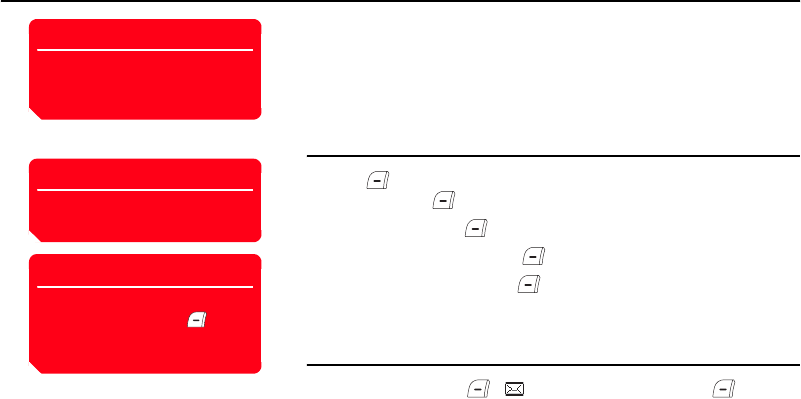
Messaging
169
live! Studio
live! Studio allows you to upload MMS messages, picture and other files in My Items
and pictures taken with the camera to Web pages. Some Web pages allow you to share
the pictures you have taken and exchange files. For details on live! Studio, contact your
service provider.
Uploading a File to live! Studio
1. Press (Options) after taking a picture with the camera or selecting a file to
upload and press (Options).
2. Select Send and press (Select).
3. Select To live! Studio and press (Select).
4. Select Move or Copy and press (Select).
Uploading begins.
Checking live! Studio Files
1. In standby mode, press ( ), select live! Studio and press (Select).
The browser starts and the live! Studio page appears.
Follow the on-screen instructions.
Note
A name other than live! Studio may
appear depending on the type of SIM
card.
Note
Copyright protected images and
sounds cannot be selected.
Tip
To upload an MMS message, select
the MMS message, press
(Options) and select Send to live!
Studio.
170
Messaging

Vodafone live!
Vodafone live! is an online service that allows you to use the Internet to access various genres of
content. You can browse information or download pictures, melodies and applications.
In This Chapter
❍Accessing Vodafone live!
❍Bookmarks
❍Operations for Web Pages
❍Browser Settings
❍Games & More
❍Media Player

172
Vodafone live!
Accessing Vodafone live!
You can access Vodafone live! to search for and obtain information.
A separate subscription is required to use the Vodafone live! service. For details,
contact your service provider.
1. In standby mode, press , select Vodafone live! and press (Select).
The Vodafone live! menu appears.
2. Select the item you want to use and press (Select).
The indicator appears at the top of the display during communication.
3. Press to end Vodafone live!.
Note
The network service is only available
while or is displayed on
the display.
Tip
To display the Vodafone live! home
page, press ( ) from
standby mode.

Vodafone live!
173
Vodafone live! Menu
You can perform the following operations via the Vodafone live! menu.
◆Vodafone live!: Displays the Vodafone live! home page.
◆Enter URL: Allows you to access a Web page by directly entering the address.
◆Bookmarks: Allows you to bookmark your favourite Web pages and access
bookmarked Web pages (page 175).
◆What's New: Allows you to obtain the latest information.
◆Games: Allows you to download games and other applications.
◆Ringtones: Allows you to download melodies and ringtones.
◆Pictures: Allows you to download images, animations and wallpaper.
◆News: Allows you to obtain the latest news, weather reports and other
information.
◆Sport: Allows you to obtain sports news, results, latest scores and other
information.
◆History: Displays the addresses of accessed Web pages in the order of newest to
oldest.
◆Browser Settings: Allows you to set various browser settings (page 180).
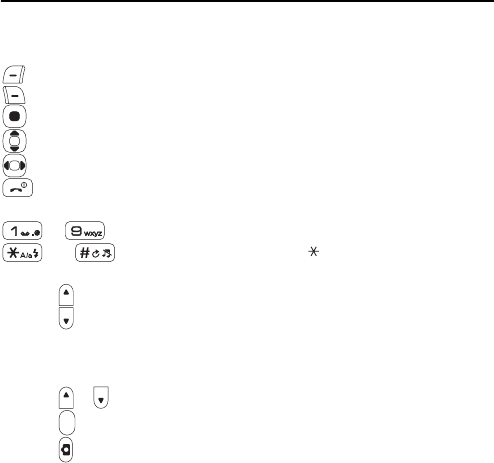
174
Vodafone live!
Key Assignments for Browsing the Web
The following shows the key assignments for browsing the Web.
In Open Style
: Selects an item or displays the Option menu.
: Takes you back to the previous screen.
: Selects an item.
: Scrolls up or down.
: Scrolls left or right.
: Ends communication. If your phone is not connected, takes you back to standby
mode.
to : Acts as a shortcut to a link with a number.
and : Acts as a shortcut to a link with or #. You can also use these
keys to perform supported operations.
Side Key ( ): Increases the volume level.
Side Key ( ): Decreases the volume level. To set the volume to mute, press and hold
the key.
In Turnover Style
Side Key ( ), ( ): Scrolls up or down.
Side Key ( ): Takes you back to the previous screen.
Side Key ( ): Selects an item.

Vodafone live!
175
Bookmarks
If you bookmark frequently accessed pages, you can access them quickly and easily.
Adding a Bookmark
1. Display the page you want to bookmark and press (Options).
2. Select Bookmarks and press (Select).
3. Select Add Bookmark and press (Select).
4. Select the title field and press .
5. Edit the title and press .
6. Press (OK).
7. Select Root Folder and press (OK).

176
Vodafone live!
Accessing a Page from a Bookmark
1. In standby mode, press , select Vodafone live! and press (Select).
2. Select Bookmarks and press (Select).
3. Select the title of the page you want to access and press (Options).
To access the page of the selected title, press .
4. Select the item you want to use and press (Select).
◆Go to URL: Allows you to enter a URL and display the Web page for the URL.
◆Send: Allows you to send the URL as an SMS, MMS or email message.
◆New Entry: Allows you to enter a new URL to add as a bookmark. You can also
create a new folder.
◆Delete: Deletes one or all bookmarks.
◆Move: Moves a bookmark to another folder.
◆Select Multi: Allows you to select multiple bookmarks and then delete or move
them.
◆Edit: Allows you to edit a bookmark title, URL or folder name.
◆Create Folder: Allows you to create a folder.

Vodafone live!
177
Operations for Web Pages
While a Web page is displayed, you can perform operations such as saving the page,
registering it to the Contacts list and copying text.
You can perform the following operations if you press (Options) while a Web page
is displayed.
◆Select: Confirms the item at the cursor position.
◆Bookmarks: Adds a bookmark for the displayed Web page or references existing
bookmarks. You can also create a folder.
◆My Saved Pages: Saves the displayed page to My Saved Pages.
◆Previous Page: Takes you back to the previous page.
◆Next Page: Takes you to the next page (if one exists in cache).
◆Go to URL: Allows you to enter a URL or select information to display from access
history.
◆Send Page: Allows you to send the displayed page as an SMS, MMS or email
message.
◆Reload Page: Updates the information.
◆Object Select Mode: Selects a file in the information.
◆Page Details: Allows you to confirm details such as the title, file size and transfer
permission of the displayed information.
◆Other Settings: Allows you to clear the cache, copy text in the information or
display details on the server certificates.
◆Do Actions: Allows you to perform the action specified in the displayed Web
page.

178
Vodafone live!
Using Files in Web Pages
You can perform various operations such as saving and displaying/playing picture and
animation files in Web pages.
1. Display a Web page containing a file and press (Options).
2. Select Object Select Mode and press (Select).
3. Select a file and press (Options).
4. Select the item you want to use and press (Select).
◆Object Details: Allows you to confirm details such as the file name, file size,
save permission and transfer permission.
◆Save Object: Saves the file to My Items.
◆Play/View: Plays or displays the file data.
◆Paging Mode: Takes you back to paging mode.
◆Exit Browser: Ends the browser.
Note
• Copy restrictions may prevent
some files from being saved.
• Some downloaded files may not be
able to be displayed/played
properly.

Vodafone live!
179
Downloading Files from Links
You can download files from links set for character strings and other objects in some
Web pages.
1. Display a Web page, select a character string for which a link is set and press .
2. Press (Yes).
Downloading begins.
3. Select the item you want to use and press (Select).
◆Play: Plays the file.
◆Save: Saves the file to My Items.
◆Object Details: Allows you to confirm details such as the file name, file size and
file type.
Note
• Copy restrictions may prevent
some files from being saved.
• Some downloaded files may not be
able to be displayed/played
properly.

180
Vodafone live!
Browser Settings
You can set various browser settings.
1. In standby mode, press , select Vodafone live! and press (Select).
2. Select Browser Settings and press (Select).
3. Select the item you want to set and press (Select).
◆Memory Manager: Clears the access history, Cookies, Web cache and DNS
(Domain Name Server) cache. You can also enable or disable the storing of
cookies.
◆Certification: Allows you to confirm details on a certificate issued from a
certificate authority.
◆Auto Launch: Allows you to set whether to start the browser automatically when
WAP push message is received.

Vodafone live!
181
Games & More
From Web pages, you can download a variety of Java™ compatible applications such
as games and applications that obtain information in real time.
Applications
In addition to ordinary applications that run solely on your phone, some applications
need to connect to the network (Web).
Note
• When you use a network Java™
application, a communication fee is
charged each time the application
connects to the network. The
communication fee is the same as
that for using the Web.
• When offline mode is set (page
236), some network Java™
applications may not run properly.

182
Vodafone live!
Games&More Menu
1. In standby mode, press , select Games&More and press (Select).
2. Select the item you want to use and press (Select).
◆Applications: Stores Java™ applications downloaded from the Web and
preinstalled Java™ application.
◆Screensavers: Stores standby mode Java™ applications downloaded from the
Web. You can also set which Java™ application runs in standby mode or switch
the standby setting on or off (page 184). To set the Java™ application start time
or length of time the application runs before pausing, select Set Time.
◆Settings: Allows you to set various Java™ application settings (page 185).
◆Java Information: Displays an explanation on the Java™ licence.
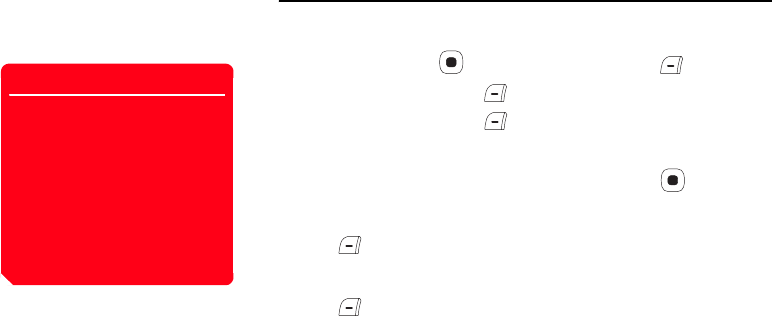
Vodafone live!
183
Downloading Java™ Applications
You can download Java™ applications. Before downloading a Java™ application, you
can confirm details such as the download size and storage size.
1. In standby mode, press , select Games&More and press (Select).
2. Select Applications and press (Select).
3. Select More Games and press (Select).
An application download site appears.
4. Select the Java™ application you want to download and press .
The application details screen appears.
5. Press (Downld.).
Downloading begins.
6. Press (Yes).
The Java™ application list appears.
Note
• If the battery level is low at the start
of downloading, the application
may not be completely
downloaded. Charging the battery
beforehand is recommended.
• If you replace the SIM card,
downloaded Java™ applications
will no longer be available. This
does not apply to preinstalled
Java™ applications.
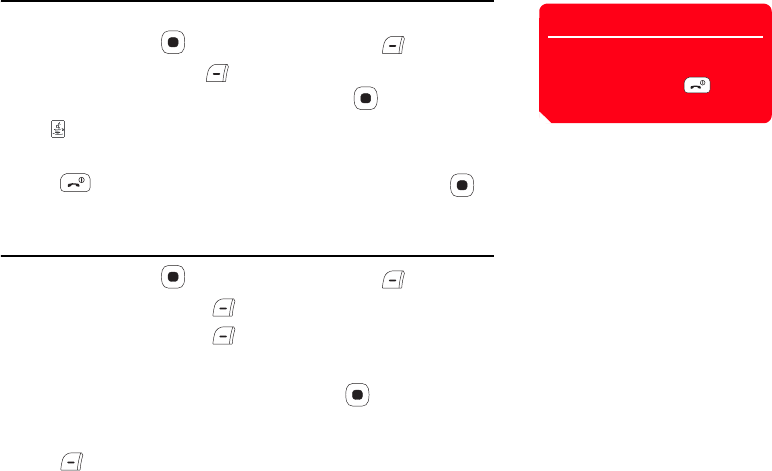
184
Vodafone live!
Starting a Java™ Application
You can run one Java™ application in standby mode.
1. In standby mode, press , select Games&More and press (Select).
2. Select Applications and press (Select).
3. Select the Java™ application you want to start and press .
The indicator appears at the top of the display and the Java™ application
starts. If you close your phone, the Java™ application stops.
4. Press , select Quit in the confirmation screen that appears and press to
end the Java™ application.
Setting the Screensaver
1. In standby mode, press , select Games&More and press (Select).
2. Select Screensavers and press (Select).
3. Select Screensavers and press (Select).
To cancel the screensaver, select Off.
4. Select the Java™ application you want to set and press .
To download a screensaver, select More Screensavers. Follow the on-screen
instructions.
5. Press (Yes).
Tip
To pause or return to the Java™
application, select Pause or
Resume after pressing in Step
4.

Vodafone live!
185
Java™ Application Settings
1. In standby mode, press , select Games&More and press (Select).
2. Select Settings and press (Select).
3. Select the item you want to set and press (Select).
◆Priority Settings: Allows you to set the priority for when there is an incoming
call, incoming message or alarm while a Java™ application is running. To give
priority to a voice calls, video calls, messages or alarm and pause the Java™
application, select Voice Calls, Video Calls, Messages or Alarms. To display a
notification at the top of the display without pausing the Java™ application,
select Notification.
◆Backlight: If you select Backlight, you can set the display lighting setting for
when a Java™ application is running. If you select Blinking, you can set
whether to enable the preset backlight blinking operation of a Java™ application.
◆Volume: Allows you to adjust the volume for when a Java™ application is
running. You can also set the volume to mute.
◆Vibration: Allows you to set whether to enable the preset vibration operation of a
Java™ application.
◆Reset Settings: If you select Master Reset, you can reset all Java™
application function settings. If you select Clear Memory, you can reset all
Java™ application function settings and delete all downloaded Java™
applications.
Tip
• You can also change the volume
level while a Java™ application is
running. Press the side key ( ) to
increase the volume level and
press the side key ( ) to
decrease the volume level.
• If the memory is cleared, any
preinstalled Java™ applications
that were deleted are reinstalled
and returned to their initial state.

186
Vodafone live!
Managing Java™ Applications
1. In standby mode, press , select Games&More and press (Select).
2. Select Applications and press (Select).
3. Select a Java™ application and press (Options).
4. Select the item you want to use and press (Select).
◆Start: Runs the Java™ application.
◆Delete: Deletes the Java™ application.
◆Select Multi: Allows you to select multiple Java™ applications and then delete
them.
◆Details: Allows you to confirm details on the Java™ application.
◆Security Settings: Allows you to set the display method for the confirmation
screen that appears when you attempt to use certain functions while a Java™
application is activated.

Vodafone live!
187
Media Player
Media Player allows you to play video and audio files attached to MMS messages,
connect to a streaming server to stream files and add files to Favourites. You can also
play video and audio files downloaded from the Web or videos recorded with the
camera.
Media Player supports the following file formats: MP3, MP4, Real Video and Real Audio.
Media Player Menu
1. In standby mode, press , select Media Player and press (Select).
2. Select the item you want to use and press (Select).
◆My Sounds: Displays a list of audio files in My Items.
◆My Videos: Displays a list of video files in My Items.
◆Playlist: Allows you to create a playlist and play files (page 190).
◆Favourites: Allows you to add up to ten files and streaming URLs to Favourites.
◆History: Displays the history for file and streaming playback.
◆Enter URL: Allows you to enter a URL for streaming playback or starting the
browser.
◆Settings: If you select Backlight, you can set the display lighting for playback to
Always On, Always Off or Same as Phone. If you select Visualisations, you
can set a graphic to appear for the playback of audio files. You can also select the
picture or animation file to display.
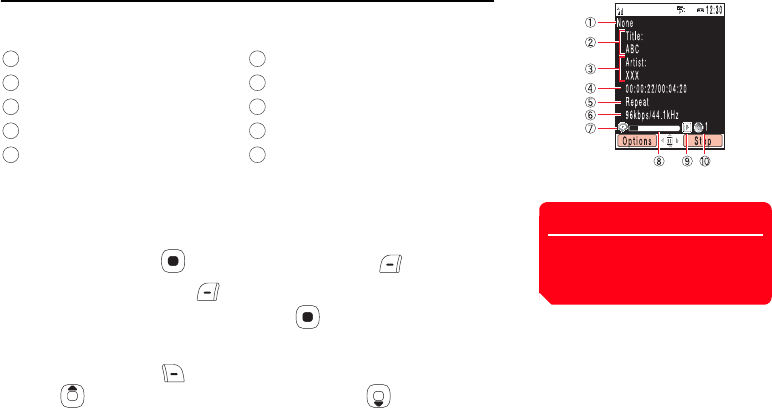
188
Vodafone live!
Playing Audio Files
Display Indications
Playback
You can play files attached to MMS messages and downloaded audio files, or connect
to a streaming server to stream audio files.
1. In standby mode, press , select Media Player and press (Select).
2. Select My Sounds and press (Select).
3. Select the audio file you want to play and press .
The playback screen of Media Player appears and playback begins.
To stop playback, press (Stop).
Press to increase the playback volume level and press to decrease the
playback volume level.
List name Bit rate
Title Real logo (Real Audio file playing)
Artist Progress bar
Elapsed play time/total play time Play status (icon)
Play mode Volume level
1 6
2 7
3 8
4 9
5 10
Tip
To start the browser and connect to
an audio file download site, select
More Sounds in Step 3.
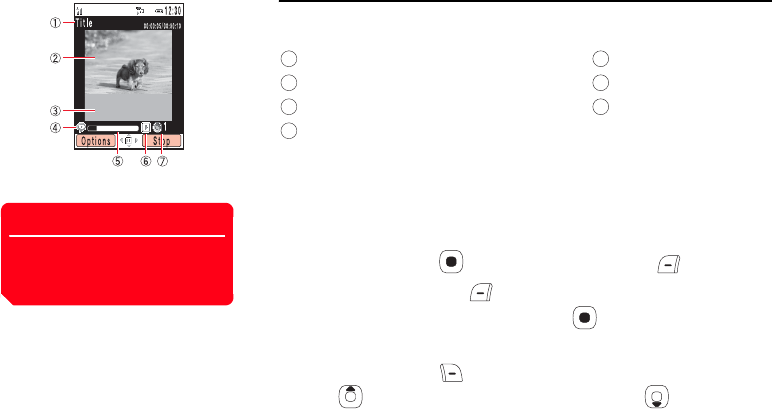
Vodafone live!
189
Playing Video Files
Display Indications
Playback
You can play files attached to MMS messages, videos recorded with the camera and
downloaded video files, or connect to a streaming server to stream video files.
1. In standby mode, press , select Media Player and press (Select).
2. Select My Videos and press (Select).
3. Select the video file you want to play and press .
The playback screen of Media Player appears and playback begins.
To stop playback, press (Stop).
Press to increase the playback volume level and press to decrease the
playback volume level.
Title and elapsed play time/total play time Progress bar
Video display Play status (icon)
Subtitles area Volume level
Real logo (Real Video file playing)
1 5
2 6
3 7
4
Tip
To start the browser and connect to a
video file download site, select More
Videos in Step 3.
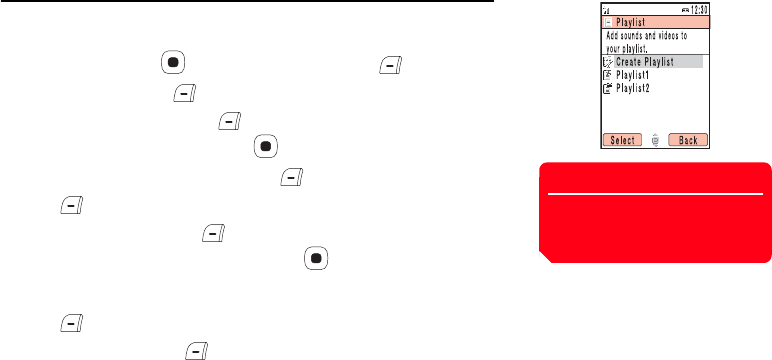
190
Vodafone live!
Creating a Playlist
This feature allows you to create a list of files that you want to play as a set. You can
also change the playback order of files in a playlist.
1. In standby mode, press , select Media Player and press (Select).
2. Select Playlist and press (Select).
3. Select Create Playlist and press (Select).
4. Enter the name of the playlist and press .
5. Select My Sounds or My Videos and press (Select).
6. Press (Options).
7. Select Select Multi and press (Select).
8. Select a file you want to add to the list and press .
To add another file, repeat Step 8.
9. Press (Options).
10. Select Add Files and press (Select).
Note
A combination of audio and video
files cannot be added to the same
playlist.

Vodafone live!
191
Playing a Playlist
1. In standby mode, press , select Media Player and press (Select).
2. Select Playlist and press (Select).
3. Select the playlist you want to play and press .
Media Player Operations
You can perform the following operations if you press (Options) while a file list,
history, favourites or playlist is displayed or a file is playing.
◆Pause/Play: Pauses or plays a file.
◆View List: Displays a list of files in the playlist.
◆Send: Allows you to send a file attached to an MMS message or send a file by
infrared.
◆Delete: Deletes a file or playlist.
◆Delete All: Deletes all files.
◆Rename: Allows you to change the name of a file or playlist.
◆Select Multi: Allows you to select multiple files and then delete or play them or
copy or move them to the memory card or phone.
◆Manage File: Allows you to add a file to a playlist or Favourites. You can also
confirm details.
Note
Some items do not appear depending
on the screen type.
192
Vodafone live!
◆Play Mode: Plays files repeatedly or in random order.
◆Mute/Unmute: Allows you to set or cancel mute.
◆Search Time: Allows you to specify a file playback start time.
◆Full Screen/Normal Screen: Allows you to change the size of the playback
screen.
◆Hide Controller/Show Controller: Hides or shows the controller.
◆Memory Card/Phone Memory: Switches the file list display between your
phone and memory card.
◆Thumbnail View/List View: Switches between thumbnails view and list view.
◆Sort by: Changes the order that files appear. You can select a sort option from
Filename, Size, Date from Latest and Date from Oldest.
◆Add: Allows you to add a file to Favourites or a playlist.
◆Add to Favourites: Allows you to add a file to Favourites.
◆Change Order: Allows you to change the order of files in the playlist.
◆Details: Displays file details.
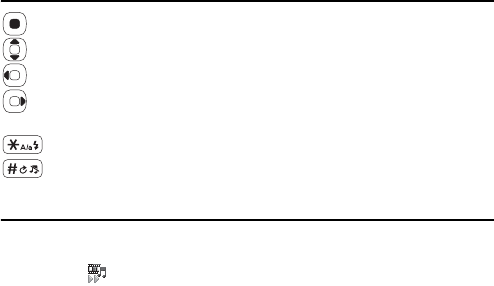
Vodafone live!
193
Key Assignment while a File is Playing/Paused
: Pauses/plays the file.
: Increases/decreases the volume.
: Rewinds frame-by-frame a paused file (MP4 file (.3g2) only).
: Forwards frame-by-frame a paused file. You can also slow forward a paused file
by pressing and holding the key (MP4 file (.3g2) only).
: Jumps to the next file.
: Jumps to the previous file.
Streaming Playback of Audio/Video
If you select a streaming URL from a Web page or body text of a message, Media Player
automatically starts and streams playback so as you can listen to the music or watch
the video. The indicator appears at the top of the display during streaming. For
details on the display indications that appear during playback, see pages 188 and 189.
194
Vodafone live!

My Items
The data you save in your phone is stored in My Items. You can move the data stored in the folders
of My Items and edit it for use with other functions.
In This Chapter
❍My Items
❍Using Files & Folders
❍Displaying Files on a TV
❍Using vObjects
❍Using the Memory Card
❍Using the SIM Card
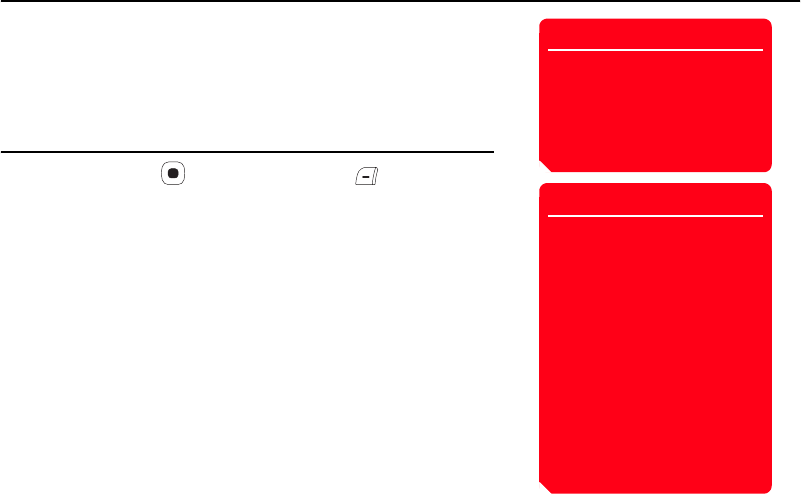
196
My Items
My Items
My Items of your phone contains ten preinstalled folders for storing files. In addition to
these, you can create your own folders (personal folders). My Items can store up to a
total of a combination of approximately 500 files and personal folders. You can also use
My Items of the memory card (page 30). The ability to store the maximum amount of
files will depend on available space in the memory card.
Structure of My Items
1. In standby mode, press , select My Items and press (Select).
The following folders are preinstalled in your phone.
◆Pictures: Contains pictures and the Digital Camera folder. Pictures you take in
Landscape mode are saved in DCF format to the Digital Camera folder.
◆Videos: Contains videos.
◆Sounds&Ringtones: Contains sound files and the Recordings folder. Recordings
you record with the voice recorder are saved to the Recordings folder.
◆Games&More: Contains Java™ applications.
◆My Saved Pages: Contains URLs and Web pages.
◆Templates: Contains the SMS Templates folder to store templates for use with
SMS messages and the MMS Templates folder to store templates for use with
MMS messages.
◆Other Documents: Contains vCard, vCalendar, SVG and text files, as well as files
of unknown types.
Note
• There are no My Saved Pages and
Templates folders in My Items of
the memory card.
• There are no Java™ applications
in Games&More of the memory
card.
Tip
• If you select live! Studio, you can
upload MMS messages, pictures
and sounds to the live! Studio
album on the Web. A name other
than live! Studio may appear
depending on the type of SIM card.
• To display the memory usage
status, select Memory Status.
• DCF format files comply with the
“Design Rule for Camera File
System.” This standard was
developed for the purpose of
facilitating the exchange of digital
camera pictures with various
devices.
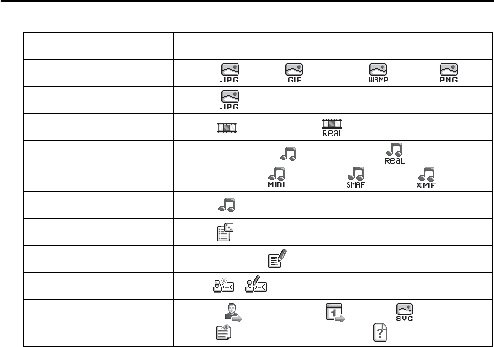
My Items
197
Files Storable in My Items
Folder File Format (Icon)
Pictures JPEG ( ), GIF ( ), WBMP ( ), PNG ( )
Digital Camera JPEG ( )
Videos MP4 ( ), Real Video ( )
Sounds&Ringtones AMR/MP3/MP4 ( ), Real Audio ( ),
SMF/SP-MIDI ( ), SMAF ( ), XMF ( )
Recordings AMR ( )
Games&More Java ( )
My Saved Pages HTML/XHTML ( )
SMS/MMS Templates Text ( / )
Other Documents vCard ( ), vCalendar ( ), SVG ( ),
Text ( ), Unknown File Types ( )
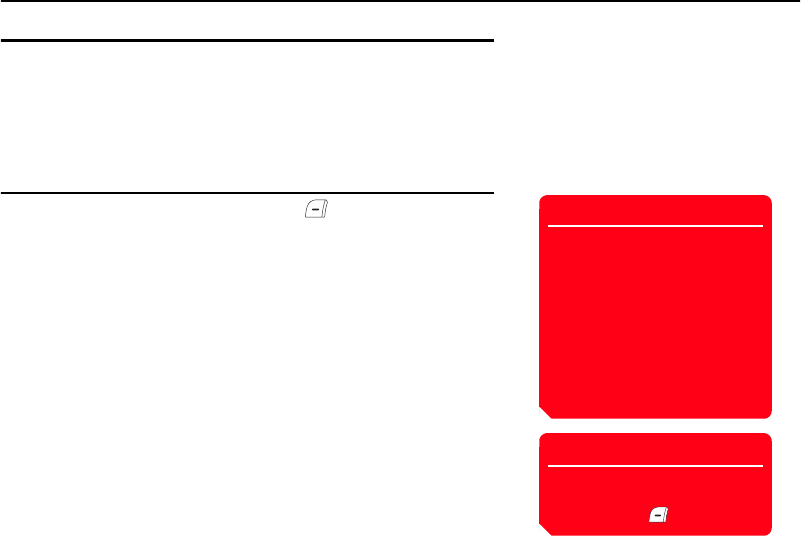
198
My Items
Using Files & Folders
Connecting to the Web from Folders
You can connect to the Web from within preinstalled folders in My Items.
◆More Pictures: Allows you to download picture files.
◆More Videos: Allows you to download video files.
◆More Sounds: Allows you to download sound files.
◆More Games: Allows you to download Java™ applications.
Editing Files & Folders
You can perform the following operations if you press (Options) while viewing files
or folders in My Items.
◆View: Displays the selected file.
◆Open: Opens the selected folder.
◆Connect: Connects to the preset Web page.
◆Play/Pause: Plays or pauses a file.
◆Start: Runs the Java™ application.
◆Send: Allows you to send the selected file as an MMS attachment or postcard.
You can also upload the file to a media album, or send it by infrared or
Bluetooth™. Some send functions are unavailable depending on the SIM card
inserted.
Note
• Some items do not appear
depending on the selected file or
folder.
• Some files may not be able to be
displayed, played or sent
depending on their file size,
contents and type.
• Some files saved to the memory
card from a PC or other device may
not be able to be displayed/played.
Tip
To copy characters selected in a
displayed text file to the clipboard
(page 60), press (Copy).
My Items
199
◆Delete: Allows you to delete just the selected file or all files within the folder.
Select One to delete the selected file and select All to delete all files. However, if
the folder contains a personal folder, the files within the personal folder are not
deleted even if you select All.
◆Select Multi: Allows you to select multiple files and then simultaneously delete,
copy or move them.
◆Memory Card/Phone Memory: Switches the display between My Items in your
phone and My Items in your memory card.
◆Details: Displays the properties of the selected file.
◆Thumbnail View/List View: Switches the display of files and folders between
thumbnails view (icons and images) and list view (text and guide).
◆Slideshow: Displays the pictures within the folder in sequence automatically.
◆Manage Folder: Allows you to create a new folder or edit the selected folder. You
can select from Create Folder, Rename Folder and Delete Folder.
◆Sort by: Changes the order that files within the selected folder appear. You can
select a sort option from Filename, Size, Date from Latest and Date from
Oldest.
◆Take Picture: Activates the camera for you to take a picture. The pictures you
take are saved to the Pictures folder.
200
My Items
◆Record Video: Activates the camera for you to record a video. The videos you
record are saved to the Videos folder.
◆Record Voice: Activates the voice recorder. The recordings you record are saved
to the Recordings folder.
◆Create Folder: Allows you to create a new folder.
◆Create Message: Displays the Create Message screen for MMS or SMS.
◆Create Template: Allows you to create a new template.
◆Edit Template: Allows you to edit the selected template.
◆Rename: Allows you to change the name of the selected file.
◆Mute/Unmute: Mutes the playback sound.
◆Search Time: Allows you to specify a file playback start time and start playback.
◆Full Screen/Normal Screen: Switches the screen display.
◆Hide Controller/Show Controller: Hides or shows the controller.
◆Zoom: Enlarges or reduces the selected picture.
◆Advanced: Allows you to edit the selected picture.
◆Save to Contacts/Save to Calendar: Allows you to save vObjects to the
Contacts list or Calendar.
◆Rewind: Returns the play position of the video being played to the beginning.
◆Reset: Returns a file to the state directly after it was read.
◆Save: Allows you to save a file to your phone or memory card.
◆Show Guidance/Hide Guidance: Shows or hides the key guidance.
◆Security Settings: Allows you to set the display method for the confirmation
screen that appears when you attempt to use certain functions while a Java™
application is activated.
◆Send to live! Studio: Allows you to upload the MMS message to a media album
on the Web.
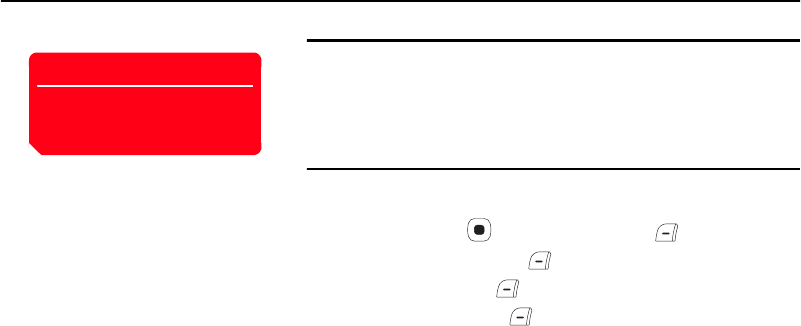
My Items
201
Displaying Files on a TV
TV Display Compatible Functions
You can display pictures and videos saved to My Items, screens while the camera is
activated and TV display compatible Java™ applications (page 183) on a TV. Also, the
camera allows you to use a TV as the display when you take pictures and record videos
(page 101).
Switching TV Systems
The TV systems supported by your phone are the NTSC and PAL systems. The SECAM
system is not supported.
1. In standby mode, press , select Settings and press (Select).
2. Select Phone Settings and press (Select).
3. Select AV Output and press (Select).
4. Select NTSC or PAL and press (Select).
Tip
The use of a TV as a display for the
camera is only possible while you are
using the external camera.
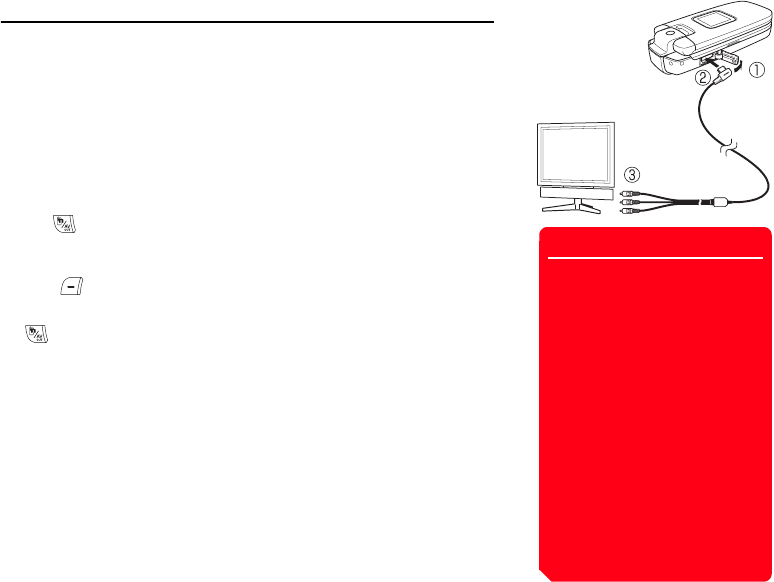
202
My Items
TV Display
You can display the screens of TV display compatible functions on a TV if you use the
supplied video output cable to connect your phone to the video input jacks of the TV.
1. Follow the procedure below to connect your phone to a TV.
1) Open the AV OUT/earphone microphone jack cover of your phone.
2) Insert the plug of the video output cable into the AV OUT/earphone microphone
jack.
3) Connect the video output cable to the video input jacks of the TV.
2. In the main display, open the screen you want to display on the TV, then press and
hold .
A confirmation screen appears.
3. Press (Yes). The screen display switches from the main display to the TV.
To switch the screen display from the TV back to the main display, press and hold
.
Note
• The screen display cannot be
switched while you are recording a
video or when the delay timer is
activated.
• Any of the following may
automatically end TV display.
• Closing your phone
• Pressing the shutter
• Ending recording of a video
• Displaying a submenu or dialog
box
• Displaying the Multi Task screen
(page 276)
• Receiving a voice/video call
• Receiving a message/Web
information or reaching an alarm
time up

My Items
203
Using vObjects
About vObjects
vObject is a collective name for file formats that enable your phone and other vObject
compatible phones, PCs and other devices to exchange and mutually use data such as
Contacts list entries and Calendar data.
You can send and receive vObjects as mail attachments (page 157) or transfer them by
Bluetooth™, infrared or via a USB cable. Received files can be used on your phone. If
you save vObjects to the memory card, you can use them directly from other memory
card compatible phones, PCs and other devices. Similarly, vObjects saved to the
memory card from other phones, PCs and other devices can be used on your phone.
◆vObject compatible software is required to use the data of vObjects on a PC or
other device.
◆Depending on the software used, vObjects may not be able to be displayed
properly.
◆Depending on the contents of vObjects, the exchange of vObjects between a
vObject compatible phone and PC or other device may not be possible.
◆When vObjects include many characters, all vObject may not be able to be sent or
received.

204
My Items
Creating a vObject
1. Display the data for which you want to create a vObject.
For details on displaying the Contacts list, see page 79.
For details on displaying Calendar, see page 266.
2. Press (Options).
3. Select Send vCard or Send vCalendar and press (Select).
4. Select a storage place and press (Select).
◆To My Items: Saves the data in vCard/vCalendar format to the Other Documents
folder in My Items of your phone.
◆To Memory Card: Saves the data in vCard/vCalendar format to the Other
Documents folder in My Items of your memory card.
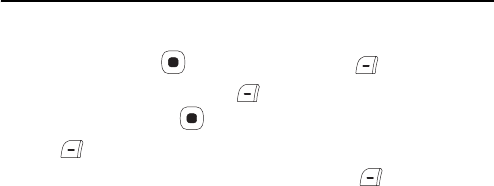
My Items
205
Importing a vObject into a Function
You can add data imported in vObject format from another phone or PC to the Contacts
list or Calendar of your phone.
1. In standby mode, press , select My Items and press (Select).
2. Select Other Documents and press (Select).
3. Select a vObject and press .
4. Press (Options).
5. Select Save to Contacts or Save to Calendar and press (Select).
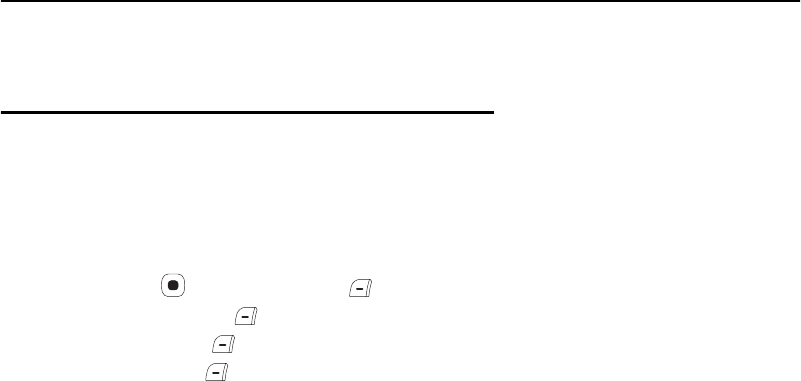
206
My Items
Using the Memory Card
You can check and edit pictures and other data saved to the memory card. You can also
save a backup of My Items, Contacts list and other data in your phone to the memory
card.
Formatting the Memory Card
You can use your phone to format the memory card.
◆If the memory card is removed while reading or writing data, the data may be lost
or the memory card may be damaged.
◆If the memory card is formatted by another device, it may not work properly with
your phone. Be sure to use your phone to format the memory card.
◆Formatting the memory card deletes all data in the memory card.
1. Insert the memory card in the slot of your phone.
2. In standby mode, press , select Settings and press (Select).
3. Select Memory Settings and press (Select).
4. Select Memory Card and press (Select).
5. Select Format Card and press (Select).
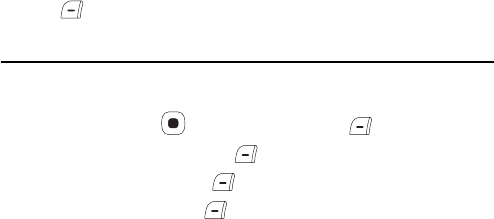
My Items
207
6. Enter your security code (page 38).
A confirmation screen appears.
7. Press (Yes).
Confirming the Memory Card Usage Status
You can confirm the volume label, total memory size, used memory size and available
memory size.
1. In standby mode, press , select Settings and press (Select).
2. Select Memory Settings and press (Select).
3. Select Memory Card and press (Select).
4. Select Card Details and press (Select).
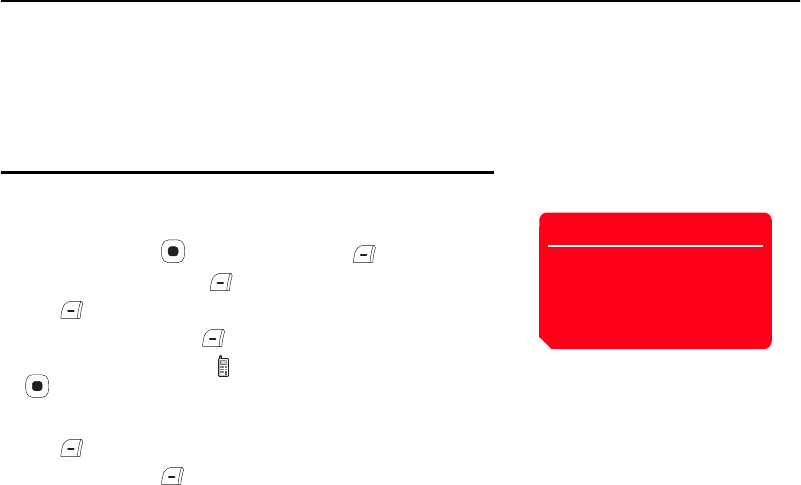
208
My Items
Using the SIM Card
You can move or copy Contacts list entries from your phone or memory card to the SIM
card, as well as move SMS messages from your phone to the SIM card. An indicator at
the top of the Contacts list screen (page 74) indicates the storage place of the Contacts
list entry. Although the number of Contacts list entries you can save to the SIM card
depends on the amount of available memory space, the maximum number of entries is
250.
Moving Contacts List Entries
Moving Entries to the SIM Card
You can move the name and default phone number (page 78) of an entry.
1. In standby mode, press , select Contacts and press (Select).
2. Select Contacts List and press (Select).
3. Press (Options).
4. Select Select Multi and press (Select).
5. Select the Contacts list entry with you want to move from your phone and press
.
To select another Contacts list entry, repeat Step 5.
6. Press (Options).
7. Select Move and press (Select).
Tip
To move Contacts list entries in the
memory card to the SIM card, select
Memory Card after Step 3. After the
Contacts list in the memory card
appears, proceed from Step 3.

My Items
209
8. Select To SIM and press (Select).
◆To Phone Memory: Moves Contacts list entries with a check mark to the
Contacts list of your phone.
◆To Memory Card: Moves Contacts list entries with a check mark to the Contacts
list of your memory card.
Moving Entries from the SIM Card
1. After Step 4 of “Moving Entries to the SIM Card” (page 208), select the Contacts list
entries with you want to move from the SIM card and then perform the rest of
the Steps.
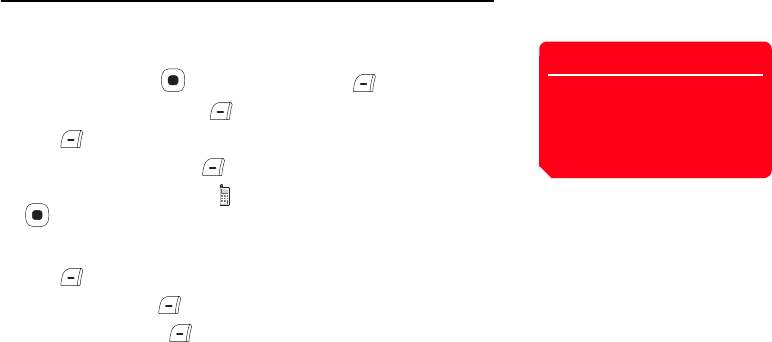
210
My Items
Copying Contacts List Entries
Copying Entries to the SIM Card
You can copy the name and default phone number (page 78) of an entry.
1. In standby mode, press , select Contacts and press (Select).
2. Select Contacts List and press (Select).
3. Press (Options).
4. Select Select Multi and press (Select).
5. Select the Contacts list entry with you want to copy from your phone and press
.
To select another Contacts list entry, repeat Step 5.
6. Press (Options).
7. Select Copy and press (Select).
8. Select To SIM and press (Select).
◆To Phone Memory: Copies Contacts list entries with a check mark to the
Contacts list of your phone.
◆To Memory Card: Copies Contacts list entries with a check mark to the Contacts
list of your memory card.
Tip
To copy Contacts list entries in the
memory card to the SIM card, select
Memory Card after Step 3. After the
Contacts list in the memory card
appears, proceed from Step 3.
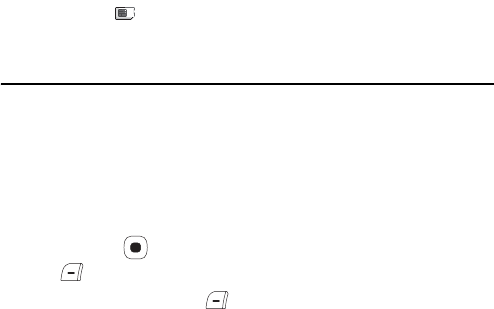
My Items
211
Copying Entries from the SIM Card
1. After Step 4 of “Copying Entries to the SIM Card” (page 210), select the Contacts
list entries with you want to copy from the SIM card and then perform the rest
of the Steps.
Moving SMS Messages
You can move messages in the Inbox (page 147) and Sent Messages (page 149) of your
phone and messages in your SIM card. Although the number of messages you can save
to the SIM card depends on the amount of available memory space, the maximum
number of sent and received messages is 50.
Moving Messages to the SIM Card
1. In the Inbox or Sent Message, select the message you want to move from your
phone and press .
2. Press (Options).
3. Select Move to SIM and press (Select).
◆Move to Phone: Moves messages in the SIM card to your phone.

212
My Items
Moving Messages from the SIM Card
1. In Step 1 of “Moving Messages to the SIM Card” (page 211), select the messages
with you want to move from the SIM card and then perform the rest of the
Steps.

Settings
You can make various settings to personalise your phone.
In This Chapter
❍Display Settings
❍Phone Profiles
❍Language Setting
❍Shortcut Menu
❍Shortcut Keys
❍External Light Settings
❍Flight Mode Setting
❍Call Settings
❍Using the Stereo Handsfree Headset
❍Security Settings
❍Network & Internet
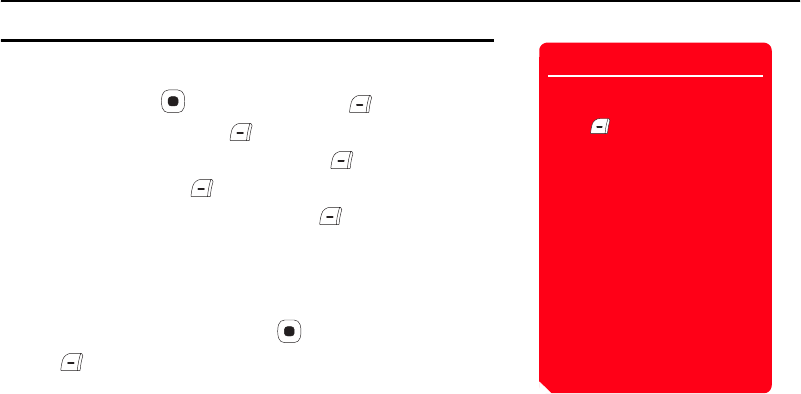
214
Settings
Display Settings
Setting the Wallpaper
You can set a picture preinstalled in your phone or taken with the camera as the
wallpaper for standby mode.
1. In standby mode, press , select Settings and press (Select).
2. Select Display Settings and press (Select).
3. Select Main Display or External Display and press (Select).
4. Select Wallpaper and press (Select).
5. Select the type of picture you want to set and press (Select).
◆Wallpaper List: Allows you to select from pictures preinstalled in your phone.
◆My Pictures: Allows you to select from pictures stored in the Pictures folder of
My Items.
◆Off: Sets no picture.
6. Select the picture you want to set and press .
7. Press (Set).
Tip
If the picture you want to set as the
wallpaper does not fit the screen,
press (Options) after Step 6 and
perform one of the following
operations.
•Cut: Allows you to trim the picture
to fit the screen.
•Zoom: Enlarges or reduces the
picture and then allows you to
position and trim the picture.
•Fit to Width: Reduces the picture
to fit the width of the screen.
•Fit to Length: Reduces the picture
to fit the height of the screen.
•Rotate Image: Rotates the picture
90° anticlockwise and then allows
you to trim the picture.

Settings
215
Setting the Incoming Display
You can set a picture to appear on the main display for incoming calls. You can also set
whether the other party’s name and phone number appear on the external display for
incoming calls.
1. In standby mode, press , select Settings and press (Select).
2. Select Call Settings and press (Select).
3. Select Voice Call or Video Call and press (Select).
4. Select Caller Details and press (Select).
5. Select the item you want to set and press (Select).
◆Incoming Picture: Allows you to set the incoming picture. Set Preset Picture
(default picture) or select the picture you want to set from My Pictures (pictures
saved to the Pictures folder in My Items).
◆Caller Picture: Allows you to display a picture associated with a caller in the
Contacts list when a call is received from that caller. Select On or Off and press
(Select). If you want to also display the picture on the external display, set
Caller Info to On.
◆Caller Info: Allows you to set the display of the name and phone number set for
a caller in the Contacts list on the external display when a call is received from
that caller. Select On or Off and press (Select).
Note
• You can set a picture of QVGA
(W240 × H320) size or smaller for
the incoming picture.
• The display area for the incoming
picture is W240 × H112.
Tip
For details on the editing (changing
the size, etc.) of a picture saved to
My Items, see “Editing a Picture”
(page 110).
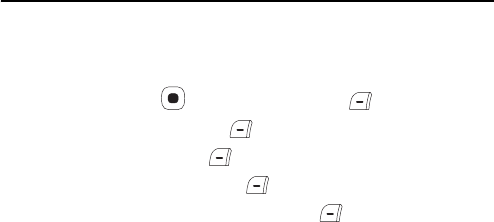
216
Settings
Setting the Clock Display
You can select the clock display for the main display from six types. You can also set
whether to display the time on the external display.
Setting the Clock Display for the Main Display
1. In standby mode, press , select Settings and press (Select).
2. Select Display Settings and press (Select).
3. Select Main Display and press (Select).
4. Select Clock Type Display and press (Select).
5. Select the type of display you want to set and press (Select).
◆1-line Digital: Displays the time and date in one-line digital view.
◆2-line Digital: Displays the time and date in two-line digital view.
◆Analog Clock: Displays an analog clock.
◆Digital + Calendar: Displays the calendar and time in digital view.
◆World Clock: Displays the city name and the time and date in one-line digital
view for both the home city and alternate city if the Alternate City setting is set for
the world clock (page 35).
◆Off: Displays no time and date.

Settings
217
Setting the Clock Display for the External Display
1. In standby mode, press , select Settings and press (Select).
2. Select Display Settings and press (Select).
3. Select External Display and press (Select).
4. Select Time Display and press (Select).
5. Select On or Off and press (Select).
Switching between the 12-hour and 24-hour Clock
1. In standby mode, press , select Settings and press (Select).
2. Select Phone Settings and press (Select).
3. Select Date&Time and press (Select).
4. Select 12 hour/24 hour and press (Select).
5. Select 12 hour or 24 hour and press (Select).
Note
You cannot switch the clock that
appears in the upper right of the
display to the 12-hour clock.
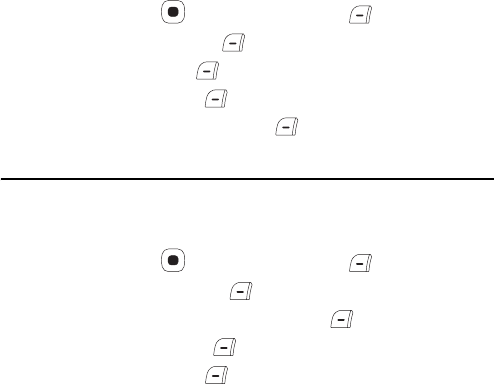
218
Settings
Setting the Date Format
1. In standby mode, press , select Settings and press (Select).
2. Select Phone Settings and press (Select).
3. Select Date&Time and press (Select).
4. Select Date Format and press (Select).
5. Select the format you want to set and press (Select).
Setting the Display Power Saving
You can save battery power by setting the phone to turn off the display after a specified
time of inactivity elapses. You can set the display time to 30 seconds, 1 minute or 3
minutes.
1. In standby mode, press , select Settings and press (Select).
2. Select Display Settings and press (Select).
3. Select Main Display or External Display and press (Select).
4. Select Power Saving and press (Select).
5. Select a display time and press (Select).
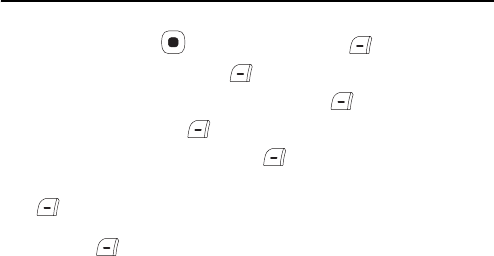
Settings
219
Setting the Backlights
You can adjust the brightness and lighting time of the display backlights.
1. In standby mode, press , select Settings and press (Select).
2. Select Display Settings and press (Select).
3. Select Main Display or External Display and press (Select).
4. Select Backlight and press (Select).
5. Select the item you want to set and press (Select).
◆Brightness: Allows you to set the brightness. Select Dark or Bright and press
(Select).
◆Lighting Time: Allows you to set the lighting time. Enter a time (0 to 60 seconds)
and press (OK).
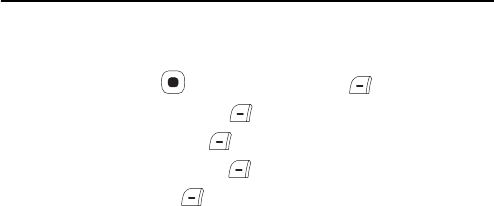
220
Settings
Setting the Display of Cell Information
You can set whether the cell information sent from a base station is displayed in
standby mode when you use your phone on a mobile phone network based on Micro
Cellular Network (MCN) technology.
1. In standby mode, press , select Settings and press (Select).
2. Select Display Settings and press (Select).
3. Select Main Display and press (Select).
4. Select Cell Information and press (Select).
5. Select On or Off and press (Select).
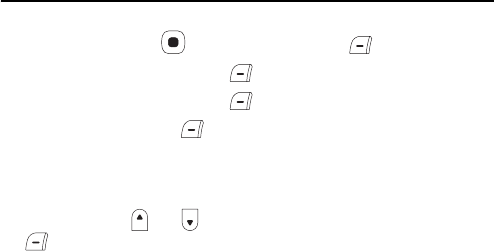
Settings
221
Adjusting the Contrast of the External Display
You can adjust the contrast of the external display to one of nine levels.
1. In standby mode, press , select Settings and press (Select).
2. Select Display Settings and press (Select).
3. Select External Display and press (Select).
4. Select Contrast and press (Select).
5. Close your phone.
A screen for adjusting the contrast appears on the external display.
6. Use the side keys ( and ) to adjust the contrast, open your phone and press
(OK).
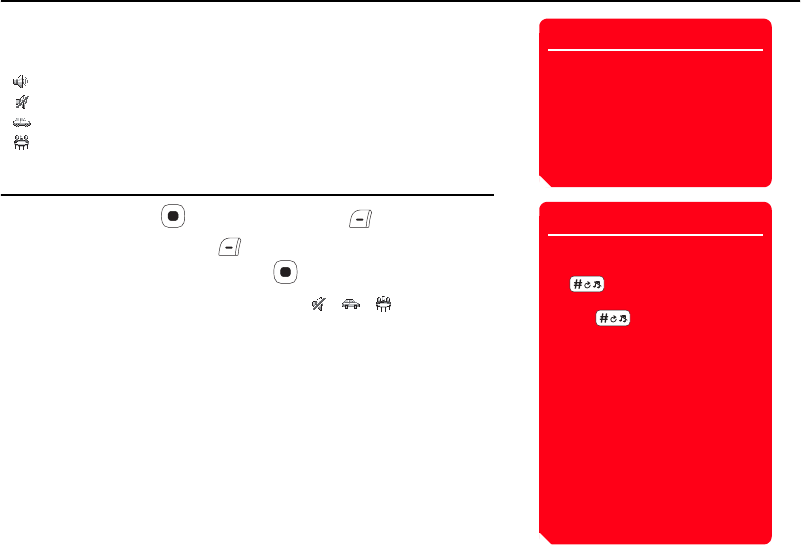
222
Settings
Phone Profiles
This feature allows you to change the sound and vibration to match your surrounding
conditions. Your phone has four preset profiles. You can change the sound and vibration
settings of each profile.
Normal: Profile for ordinary use.
Silent: Profile for when you do not want your phone to emit any sound.
Car: Profile for using handsfree while you are driving.
Meeting: Profile for meetings, etc.
Switching Profiles
1. In standby mode, press , select Settings and press (Select).
2. Select Phone Profiles and press (Select).
3. Select the profile you want to set and press .
If a profile other than Normal is set, the indicator ( / / ) for the profile
appears at the top of the display.
Note
When your phone is connected to an
in-car device or a wireless headset
via Bluetooth™, the incoming
ringtone for Bluetooth™ plays and
your phone does not vibrate for
incoming calls regardless of the
phone profile settings.
Tip
• To temporarily switch the phone
profile to Silent, press and hold
in standby mode. To switch
back to previous profile, press and
hold in standby mode.
• You can also set the ringtone and
vibration individually for each
Contacts list entry (page 67) and
each Contacts list category (page
69). When the ringtone and
vibration are set for both individual
entries and categories, the settings
for individual entries take priority
over the settings for individual
categories. However, when the
phone profile is set to Silent, the
ringtone does not play.
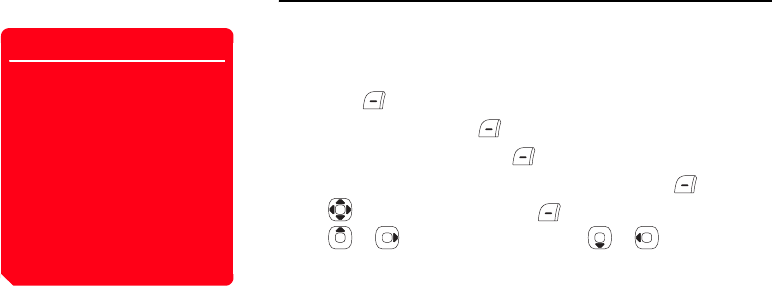
Settings
223
Personalising Profiles
Personalising the Ringtone Volume
For any profile except Silent, you can set the ringtone volume.
1. After Step 2 of “Switching Profiles” (page 222), select Normal, Car or Meeting
and press (Options).
2. Select Personalise and press (Select).
3. Select Ringtone Volume and press (Select).
4. Select Voice Call, Video Call or Received Message and press (Select).
5. Use to adjust the volume and press (OK).
Use or to increase the volume and use or to decrease the
volume.
Tip
• Only the vibration and alarm
settings can be changed for Silent
profile.
• When the ringtone and vibration
are set for both individual Contacts
list entries and Contacts list
categories, the settings for
individual entries take priority over
the settings for individual
categories. However, when the
phone profile is set to Silent, the
ringtone does not play.

224
Settings
Personalising the Ringtone
For any profile except Silent, you can set a preinstalled sound in your phone or a sound
or video in My Items as the ringtone.
1. After Step 2 of “Switching Profiles” (page 222), select Normal, Car or Meeting
and press (Options).
2. Select Personalise and press (Select).
3. Select Assign Ringtone and press (Select).
4. Select Voice Call, Video Call or Received Message and press (Select/
Options).
If you selected Received Message, select Ringtone and press (Select).
5. Select the type of tone you want to set and press (Select).
◆Preset Patterns: Allows you to select from patterns preinstalled in your phone.
◆Preset Sounds: Allows you to select from melodies and sound effects
preinstalled in your phone.
◆My Sounds: Allows you to select from sound and video files stored in My Items.
6. Select the tone you want to set and press .
7. Press (Assign).
Note
• A video file or a sound file including
pictures cannot be set as the
ringtone for incoming messages.
• If a video file is set as the ringtone,
the video is displayed for incoming
calls and the picture set as the
incoming picture (page 215) is not
displayed.
Tip
To set the ringtone duration for
incoming messages, select
Received Message in Step 4, press
(Options) and select Ringtone
Duration.

Settings
225
Personalising the Vibration
1. After Step 2 of “Switching Profiles” (page 222), select the profile you want to set
and press (Options).
2. Select Personalise and press (Select).
3. Select Vibration and press (Select).
4. Select Voice Call, Video Call or Received Message and press (Select).
If you selected Silent in Step 1, select On or Off and press (Select).
5. Select the vibration pattern you want to set and press .
Personalising the Keypad Tone Volume
For any profile except Silent, you can set the keypad tone volume.
1. After Step 2 of “Switching Profiles” (page 222), select Normal, Car or Meeting
and press (Options).
2. Select Personalise and press (Select).
3. Select Keypad Volume and press (Select).
4. Use to adjust the volume and press (OK).
Use or to increase the volume and use or to decrease the
volume.

226
Settings
Personalising the Keypad Tone
For any profile except Silent, you can set the keypad tone.
1. After Step 2 of “Switching Profiles” (page 222), select Normal, Car or Meeting
and press (Options).
2. Select Personalise and press (Select).
3. Select Keypad Tones and press (Select).
4. Select Original 1 or Original 2 and press (Select).
Personalising the Sound Effects Volume
For any profile except Silent, you can set the volume level of each of the sound effects
for turning on/off the power, opening/closing your phone and errors.
1. After Step 2 of “Switching Profiles” (page 222), select Normal, Car or Meeting
and press (Options).
2. Select Personalise and press (Select).
3. Select Sound Effects Vol. and press (Select).
4. Select the item you want to set and press (Select).
5. Use to adjust the volume and press (OK).
Use or to increase the volume and use or to decrease the
volume.
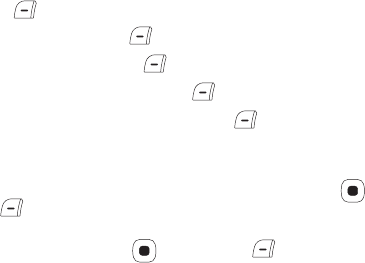
Settings
227
Personalising the Sound Effects Tones
For any profile except Silent, you can set each of the sound effects for turning on/off the
power and opening/closing your phone.
1. After Step 2 of “Switching Profiles” (page 222), select Normal, Car or Meeting
and press (Options).
2. Select Personalise and press (Select).
3. Select Sound Effects and press (Select).
4. Select the item you want to set and press (Select).
5. Select the type of tone you want to set and press (Select).
◆Preset Pattern: Allows you to set the default sound effect.
◆Preset Sounds: Allows you to select from melodies and sound effects
preinstalled in your phone. Select the sound you want to set, press and then
press (Assign).
◆My Sounds: Allows you to select from sound files stored in My Items. Select the
sound you want to set, press and then press (Assign).
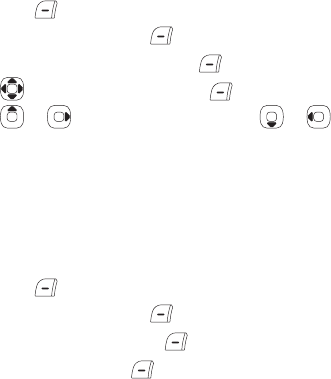
228
Settings
Personalising the Multimedia Volume
For any profile except Silent, you can set the volume level for games, messaging,
Vodafone live! and playing sound data in My Items.
1. After Step 2 of “Switching Profiles” (page 222), select Normal, Car or Meeting
and press (Options).
2. Select Personalise and press (Select).
3. Select Multimedia Volume and press (Select).
4. Use to adjust the volume and press (OK).
Use or to increase the volume and use or to decrease the
volume.
Personalising the Battery Alarm Tone
When the battery level is very low and your phone is about to run out of power, the
battery alarm tone plays. For any profile except Silent, you can set whether to play the
battery alarm tone.
1. After Step 2 of “Switching Profiles” (page 222), select Normal, Car or Meeting
and press (Options).
2. Select Personalise and press (Select).
3. Select Battery Alarm and press (Select).
4. Select On or Off and press (Select).

Settings
229
Personalising the Alarm Tone
You can set whether the alarm tone plays for Silent profile and Meeting profile.
1. After Step 2 of “Switching Profiles” (page 222), select Silent or Meeting and press
(Options).
2. Select Personalise and press (Select).
3. Select Alarm and press (Select).
4. Select On or Off and press (Select).
Resetting Profiles
You can reset the settings of each profile.
1. After Step 2 of “Switching Profiles” (page 222), select the profile you want to reset
and press (Options).
2. Select Set to Default and press (Select).
3. Enter your security code (page 38).
A confirmation screen appears.
4. Press (Yes).
Note
Whether an alarm tone plays in
Normal profile and Car profile
depends on the alarm (page 267) and
Calendar (page 263) settings.

230
Settings
Language Setting
You can change the display language.
1. In standby mode, press , select Settings and press (Select).
2. Select Phone Settings and press (Select).
3. Select Language and press (Select).
4. Select the language you want to set or Automatic and press (Select).
Tip
If the language is set to Automatic,
the language is set automatically in
accordance with the language priority
setting of the SIM card. If your phone
does not support the language set for
the SIM card, the default language of
your phone is selected.
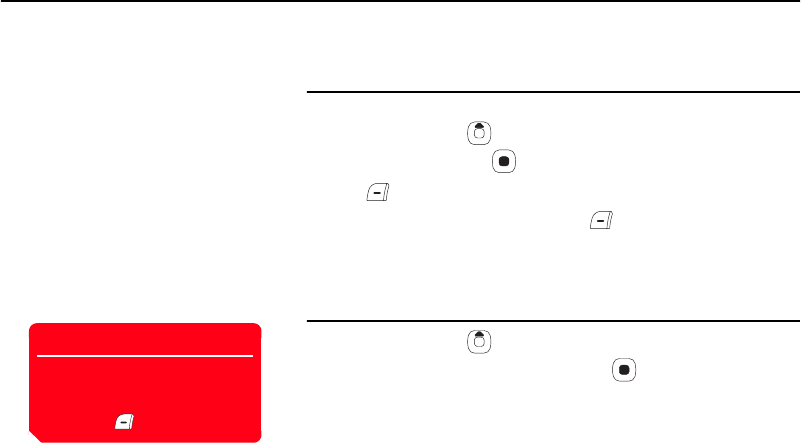
Settings
231
Shortcut Menu
If you register frequently used functions in the Shortcut menu, you can access them
quickly and easily.
Setting the Shortcut Menu
You can set up to nine frequently used functions.
1. In standby mode, press .
2. Select <Empty> and press .
3. Press (Yes).
4. Select the function you want to set and press (Select).
If you selected My Items or Contacts List, you can set a shortcut for a file, folder
or Contacts list entry. Select the item you want to set.
Accessing a Function from the Shortcut Menu
1. In standby mode, press .
2. Select the function you want to access and press .
Tip
To edit a name, cancel a setting or
switch the view (Thumbnail View/
List View), select a function in Step
2 and press (Options).
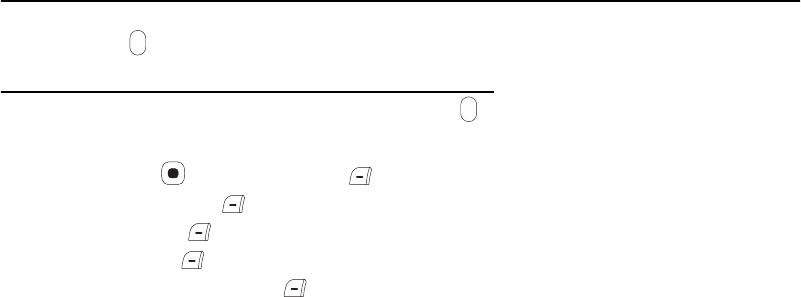
232
Settings
Shortcut Keys
This feature allows you to access a function from standby mode easily and quickly by
pressing the side key ( ) or navigation key. You can change the functions accessed.
Setting the Side Shortcut Key Function
You can change the function accessed if you simply press and hold the side key ( )
from standby mode. The functions you can set are Main menu (page 37), Calendar
(page 263), Profile switch (page 222) and Torch (page 281).
1. In standby mode, press , select Settings and press (Select).
2. Select Phone Settings and press (Select).
3. Select Shortcuts and press (Select).
4. Select Side Key and press (Select).
5. Select the function you want to set and press (Select).
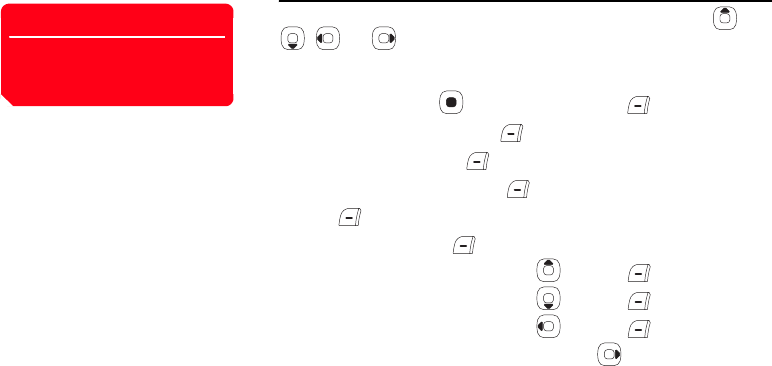
Settings
233
Setting the Navigation Key Shortcuts
You can change the functions accessed when you press the navigation keys ,
, and from standby mode. The functions you can set are Shortcut menu
(page 231), Contacts list (page 63), Create Message (page 133) and Calendar (page
263).
1. In standby mode, press , select Settings and press (Select).
2. Select Phone Settings and press (Select).
3. Select Shortcuts and press (Select).
4. Select Navigation Keys and press (Select).
5. Press (Options).
6. Select Change and press (Select).
7. Select the function you want to assign to and press (Select).
8. Select the function you want to assign to and press (Select).
9. Select the function you want to assign to and press (Select).
The remaining function is assigned automatically to .
Tip
To reset which functions are assigned
to the navigation keys, select Set to
Default after Step 5.
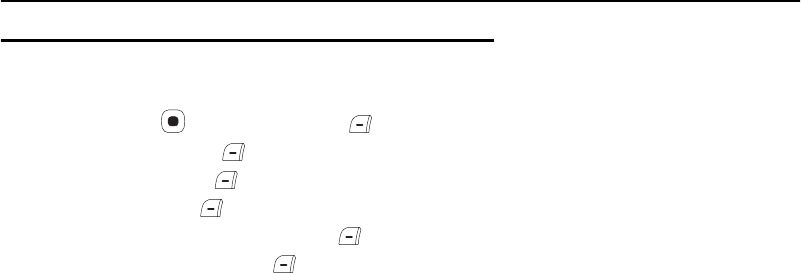
234
Settings
External Light Settings
Setting the Notification External Light
If you have unchecked information (missed calls and unread messages), the external
light flashes when your phone is closed. You can select from three colours for the
flashing of the external light or set the external light not to flash.
1. In standby mode, press , select Settings and press (Select).
2. Select Phone Settings and press (Select).
3. Select External Light and press (Select).
4. Select Notification and press (Select).
5. Select Missed Calls or Unread Messages and press (Select).
6. Select the colour you want to set and press (Select).

Settings
235
Setting the Incoming External Light
You can select from five colours for the external light that flashes when you have an
incoming voice call, video call or message. You can also set the external light not to
flash.
1. In standby mode, press , select Settings and press (Select).
2. Select Phone Settings and press (Select).
3. Select External Light and press (Select).
4. Select Incoming and press (Select).
5. Select Voice Calls, Video Calls or Messages and press (Select).
6. Select the colour you want to set and press (Select).
Tip
When the incoming external light is
set for both individual Contacts list
entries and Contacts list categories,
the settings for individual entries
takes priority over the settings for
individual categories.

236
Settings
Flight Mode Setting
You can use flight mode to block signal reception and transmission without turning off
the power. Flight mode disables the use of network services for making and receiving
calls, sending and receiving messages, etc.
1. In standby mode, press , select Settings and press (Select).
2. Select Phone Settings and press (Select).
3. Select Flight Mode and press (Select).
4. Select On and press (Select).
The indicator appears at the top of the display.
Note
You can cancel flight mode and make
an emergency call if you dial the
phone number of an emergency
service (page 27) while flight mode is
set.

Settings
237
Call Settings
Setting the Auto Answer
You can answer a call without having to press a key while the stereo handsfree headset
is connected. You can also change the length of time before a call is answered.
1. In standby mode, press , select Settings and press (Select).
2. Select Call Settings and press (Select).
3. Select Voice Call and press (Select).
4. Select Auto Answer and press (Select).
5. Select On and press (Select).
6. Enter the answer time (1 to 29 seconds) and press (OK).
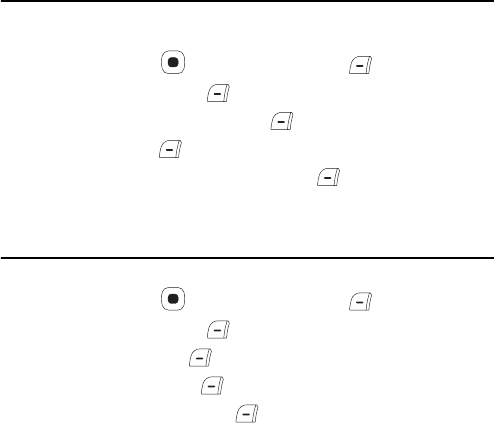
238
Settings
Setting Mute
You can mute the outgoing voice or both the outgoing voice and incoming voice for
calls.
1. In standby mode, press , select Settings and press (Select).
2. Select Call Settings and press (Select).
3. Select Voice Call or Video Call and press (Select).
4. Select Mute and press (Select).
5. Select Mute My Voice, Mute All or Off and press (Select).
Enabling/Disabling Incoming Voice Calls during
Data Communication
You can set whether to receive incoming voice calls during data communication.
1. In standby mode, press , select Settings and press (Select).
2. Select Call Settings and press (Select).
3. Select Voice Call and press (Select).
4. Select Call Priority and press (Select).
5. Select Enable or Disable and press (Select).
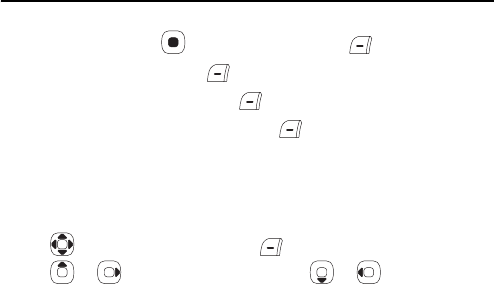
Settings
239
Setting the Earpiece/Speaker Volume
You can set the earpiece/speaker volume for voice calls and video calls.
1. In standby mode, press , select Settings and press (Select).
2. Select Call Settings and press (Select).
3. Select Common Settings and press (Select).
4. Select the volume you want to set and press (Select).
◆Earpiece Volume: Allows you to set the volume for sound heard from the
earpiece.
◆Speaker Volume: Allows you to set the volume for sound heard from the
speaker.
5. Use to adjust the volume and press (OK).
Use or to increase the volume and use or to decrease the
volume.
While you are adjusting the volume, a confirmation tone is played to enable you to
hear the volume level.
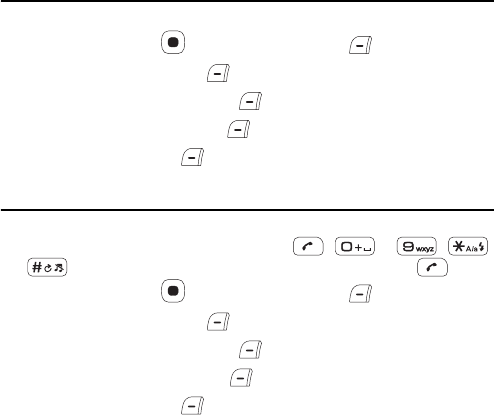
240
Settings
Setting the Open to Answer
This feature allows you to answer an incoming call by simply opening your phone.
1. In standby mode, press , select Settings and press (Select).
2. Select Call Settings and press (Select).
3. Select Common Settings and press (Select).
4. Select Open to Answer and press (Select).
5. Select On or Off and press (Select).
Setting the Any Key Answer
This feature allows you to answer incoming calls with any key. If Any Key Answer is set
to On, you can answer an incoming call with any of , to ,
and . If it is set to Off, you can only answer an incoming call with .
1. In standby mode, press , select Settings and press (Select).
2. Select Call Settings and press (Select).
3. Select Common Settings and press (Select).
4. Select Any Key Answer and press (Select).
5. Select On or Off and press (Select).
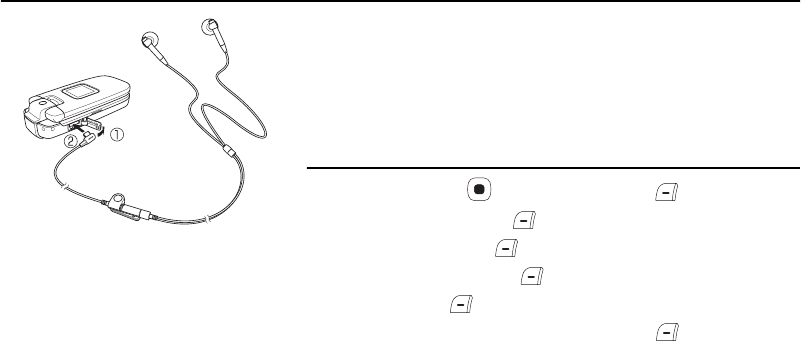
Settings
241
Using the Stereo Handsfree Headset
If you use the stereo handsfree headset with switch, simply pressing the switch of the
stereo handsfree headset allows you to dial a preset phone number or answer a call
without even opening your phone.
1. Open the earphone microphone jack cover.
2. Insert the plug of the stereo handsfree headset into the earphone microphone jack.
Setting the Phone Number
1. In standby mode, press , select Settings and press (Select).
2. Select Call Settings and press (Select).
3. Select Voice Call and press (Select).
4. Select Earphone Call and press (Select).
5. Select On and press (Select).
6. Select the input method for the phone number and press (Select).
◆Set Number: Allows you to directly enter a phone number.
◆From Contacts: Allows you to select a phone number from the Contacts list
(page 74).

242
Settings
One-touch Calling
1. Press and hold the switch of the stereo handsfree headset.
Short beeps are heard from the earphone and a call is made to the preset phone
number.
If you press the switch again during dialling, a beep is heard and the call is
cancelled.
2. Press and hold the switch of the stereo handsfree headset to end the call.
A beep is heard from the earphone and the call ends.
Alternatively, you can press to end the call.
One-touch Answering
1. A call is received.
2. Press and hold the switch of the stereo handsfree headset.
Short beeps are heard from the earphone and a connection is established.
If the caller made a video call, the video call begins.
3. Press and hold the switch of the stereo handsfree headset to end the call.
A beep is heard from the earphone and the call ends.
Alternatively, you can press to end the call.
Note
Making a call with the stereo
handsfree headset is only possible
from standby mode.
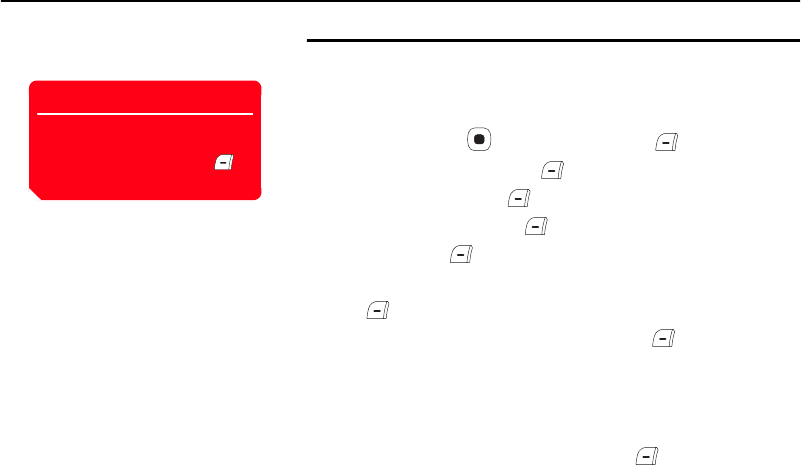
Settings
243
Security Settings
Rejecting Incoming Calls
Adding Phone Numbers to the Rejection List
You can save up to 20 phone numbers to the Rejection list to reject calls from those
phone numbers.
1. In standby mode, press , select Settings and press (Select).
2. Select Security Settings and press (Select).
3. Select Reject Calls and press (Select).
4. Select Select Contact and press (Select).
5. Select On and press (Select).
6. Enter your security code (page 38).
7. Press (Add).
8. Select an input method for the phone number and press (Select).
◆From Contacts: Allows you to select the phone number you want to add from
the Contacts list (page 74).
◆Set Number: Allows you to directly enter a phone number.
◆From Call Log: Allows you to select a phone number from the call log (page 43).
To add a second or subsequent phone number, press (Options) after Step 6,
select Add and proceed from Step 8.
Tip
To check details or edit/delete a
phone number, select a phone
number after Step 6 and press
(Options).
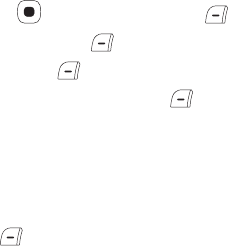
244
Settings
Rejecting Specific Incoming Calls
You can set your phone to reject calls with no Caller ID or calls from phone numbers not
in the Contacts list.
1. In standby mode, press , select Settings and press (Select).
2. Select Security Settings and press (Select).
3. Select Reject Calls and press (Select).
4. Select the type of call you want to reject and press (Select).
◆Withheld: Rejects calls with no caller ID, calls for which the phone number
cannot be displayed and calls from pay phones.
◆Unknown: Rejects calls from phone numbers not in the Contacts list.
◆Select Contact: Rejects calls from phone numbers in the Rejection list (page
243).
5. Select On and press (Select).
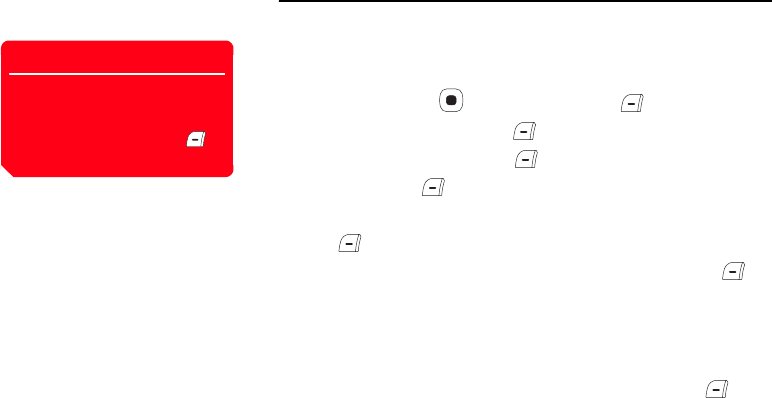
Settings
245
Reception Restriction
Adding an Email Address or Phone Number to the Rejection List
You can add up to 50 email addresses or phone numbers to the Rejection list to reject
the reception of messages from those email addresses and phone numbers.
1. In standby mode, press , select Settings and press (Select).
2. Select Security Settings and press (Select).
3. Select Reject Addresses and press (Select).
4. Select On and press (Select).
5. Enter your security code (page 38).
6. Press (Add).
7. Select an input method for the email address or phone number and press
(Select).
◆From Contacts: Allows you to select the email address or phone number you
want to add from the Contacts list (page 74).
◆Enter Address: Allows you to directly enter an email address or phone number.
To add a second or subsequent email address or phone number, press
(Options) after Step 5, select Add and proceed from Step 7.
Tip
To check details or edit/delete an
email address or phone number,
select the email address or phone
number after Step 5 and press
(Options).

246
Settings
PIN Codes
You can set the PIN code (page 26) used for SIM card security.
Setting PIN Code Request
You can set whether to request the entering of your PIN code to perform verification
each time a SIM card is inserted into the phone and the power is turned on.
1. In standby mode, press , select Settings and press (Select).
2. Select Security Settings and press (Select).
3. Select PIN Code Request and press (Select).
4. Select On and press (Select).
5. Enter your PIN code and press (OK).
Note
This setting may not be able to be set
for some types of SIM card.
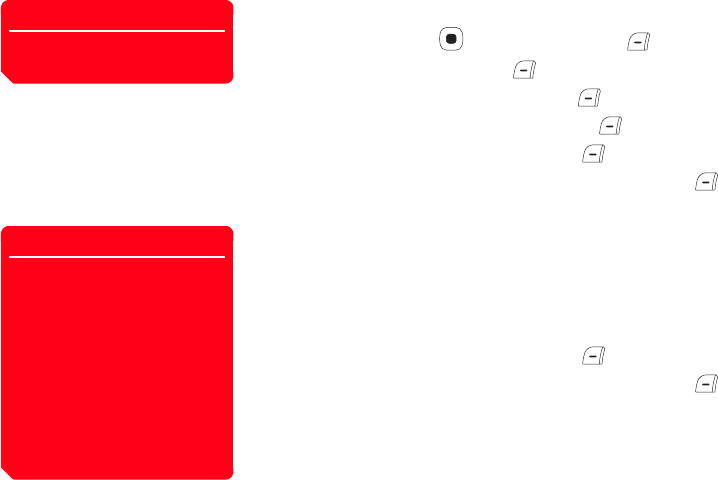
Settings
247
Changing PIN Codes
You can change the PIN code and PIN2 code (page 26).
1. In standby mode, press , select Settings and press (Select).
2. Select Security Settings and press (Select).
3. Select Change PIN or Change PIN2 and press (Select).
4. Enter your current PIN code or PIN2 code and press (OK).
5. Enter your new PIN code or PIN2 code and press (OK).
6. Re-enter your new PIN code or PIN2 code for confirmation and press (OK).
Cancelling the PIN Lock
If the PIN code or PIN2 code is incorrectly entered three times in a row, the PIN/PIN2
lock is set. You can cancel the PIN/PIN2 lock by entering a personal unblocking key
code (PUK/PUK2 code). For details on the personal unblocking key codes, contact your
service provider.
1. Enter the PUK/PUK2 code in the PUK/PUK2 code input screen.
2. Enter your new PIN code or PIN2 code and press (OK).
3. Re-enter your new PIN code or PIN2 code for confirmation and press (OK).
Note
Set PIN Code Request to On before
you change a PIN code (page 246).
Note
If the PUK/PUK2 code is incorrectly
entered ten times in a row, the PUK/
PUK2 code lock is set. If the PUK
code lock is set, calls other than
emergency calls cannot be made. If
the PUK2 code lock is set, data saved
to the SIM card cannot be modified. If
the PUK/PUK2 code lock is set, the
lock cannot be cancelled without
assistance. For details on how to
cancel the lock, contact your service
provider.

248
Settings
Changing the Security Code
You can change the security code (page 38) required to use some functions and modify
the settings of your phone. The initial security code is “0000” or the four-digit number
you selected when you concluded your contract.
1. In standby mode, press , select Settings and press (Select).
2. Select Security Settings and press (Select).
3. Select Change Password and press (Select).
4. Enter your current security code (page 38).
5. Enter your new security code.
6. Re-enter your new security code for confirmation.
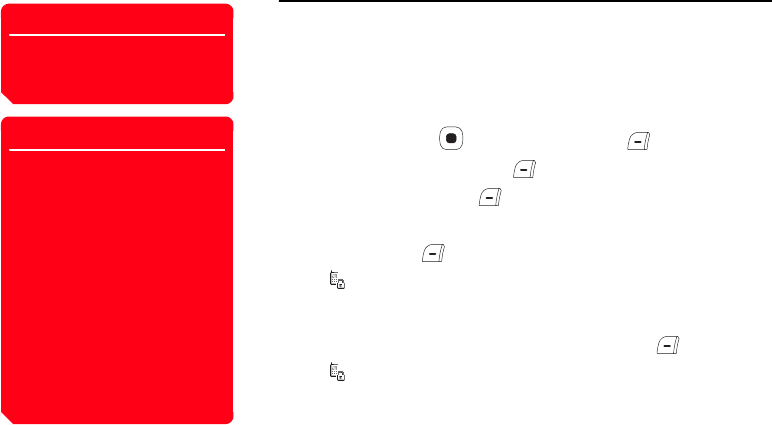
Settings
249
Phone Lock
The phone lock allows you to lock the keys to prevent another person from using your
phone without entering your security code (page 38). When the phone lock is set,
“Phone Lock” appears in standby mode. Until you set the phone lock to Off, the keys
are locked each time the power is turned on.
Setting the Phone Lock
1. In standby mode, press , select Settings and press (Select).
2. Select Security Settings and press (Select).
3. Select Phone Lock and press (Select).
4. Enter your security code (page 38).
5. Select On and press (Select).
The indicator appears on the display.
Cancelling the Phone Lock Temporarily
1. Enter your security code while the phone lock is set and press (OK).
The indicator disappears.
To cancel the phone lock, cancel the lock temporarily and then set it to Off.
Note
When the phone lock is set, the
information prompt (page 22) does
not appear.
Tip
When the phone lock is set, you can
still perform the following operations.
• Turn the power on and off.
• Cancel the phone lock temporarily.
• Make calls to emergency services
(page 27).
• Answer voice calls and video calls.
• Divert calls (page 49).
• Reject calls (page 40).
• Adjust the ringtone volume while a
call is being received (page 40).
• Stop the alarm.
• Pause a Java™ application (page
184) set to run in standby mode.

250
Settings
Fixed Dialling Numbers
You can restrict the making of calls and sending of messages to only phone numbers in
the Fixed Dialling Number list of the SIM card.
Setting Fixed Dialling Numbers
1. In standby mode, press , select Settings and press (Select).
2. Select Security Settings and press (Select).
3. Select Fixed Dialling No. and press (Select).
4. Select Setting and press (Select).
5. Enter your PIN2 code and press (OK).
6. Select On and press (Select).
Note
This function is unavailable for some
SIM cards.
Tip
When Fixed Dialling Numbers is set
to On, you can still make calls to
emergency services (page 27).

Settings
251
Adding Phone Numbers to the Fixed Dialling Number List
You can add up to 40 phone numbers to the Fixed Dialling Number list. The ability to
store the maximum amount of phone numbers will depend on available space in the
SIM card.
1. In standby mode, press , select Settings and press (Select).
2. Select Security Settings and press (Select).
3. Select Fixed Dialling No. and press (Select).
4. Select Edit Dial List and press (Select).
5. Select <Empty> and press (Add).
6. Enter your PIN2 code and press (OK).
7. Select Name or Dial Number and press (Options).
8. Select Edit and press (Select).
9. Enter a name or phone number and press (Options).
10. Select OK and press (Select).
11. Press (Options) after setting the items.
12. Select OK and press (Select).
Note
Before performing this operation, set
the Fixed Dialling Number setting to
On beforehand (page 250).
Tip
To display details, make a call, create
a message or delete/edit a phone
number, select a phone number after
Step 4 and press (Options).

252
Settings
Key Guard
The key guard allows you to disable the keys to prevent unintentional operations while
your phone is in your bag or pocket.
Setting the Key Guard
1. In standby mode, press and hold .
The indicator appears on the display.
Cancelling the Key Guard
1. Press and hold while the key guard is set.
Note
When the key guard is set, the
information prompt (page 22) does
not appear.
Tip
When the key guard is set, you can
still perform the following operations.
• Cancel the key guard.
• Make calls to emergency services
(page 27).
• Answer voice calls and video calls.
Key operation is enabled when
calls are received, but the Any Key
Answer (page 240) function
remains disabled.
• Divert calls (page 49).
• Reject calls (page 40).
• Adjust the ringtone volume while a
call is being received (page 40).
• Stop the alarm.
• Pause a Java™ application (page
184) set to run in standby mode.

Settings
253
Initialising Your Phone
You can delete all saved data such as Contacts list entries, My Items files and
messages, as well as reset all function settings.
1. In standby mode, press , select Settings and press (Select).
2. Select Memory Settings and press (Select).
3. Select Phone Memory and press (Select).
4. Select Clear Memory and press (Select).
5. Enter your security code (page 38).
A confirmation screen appears.
6. Press (Yes).
Your phone is initialised and then automatically turned off and on.
Note
This operation does not reset the
data of the security code (page 38),
SIM card and memory card.
Tip
To view an approximate indication of
the memory status for Emails,
messages, My Items, Contacts list
and Calendar, select Memory
Status after Step 3.
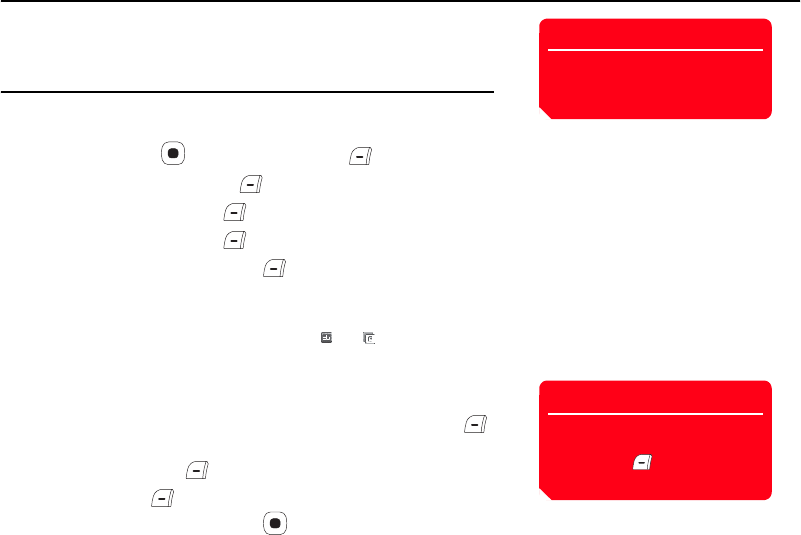
254
Settings
Network & Internet
You can set the network (telecommunications carrier) and system mode to use. You can
also set the network connection information for using the Web and email.
Selecting the Network
You can set the network by selecting an available network in your current area
automatically or selecting a network manually from a list.
1. In standby mode, press , select Settings and press (Select).
2. Select Network&Internet and press (Select).
3. Select Select Network and press (Select).
4. Select Select Network and press (Select).
5. Select the item you want to set and press (Select).
◆Automatic: Selects an available network automatically.
◆Manual: Allows you to select a network from the displayed list and connect to the
network. An available network is indicated by the or indicator.
Adding a Network
You can add up to five new networks.
1. After Step 4 of “Selecting the Network,” select Add New Network and press
(Select).
2. Select <Empty> and press (Options).
3. Select Edit and press (Select).
4. Select the item you want to set and press .
Note
Note that you may no longer be able
to connect to the home network if the
settings are set incorrectly.
Tip
To delete an added network, select
the network you want to delete after
Step 1, press (Options) and
select Delete.

Settings
255
5. Enter the item and press .
6. Press (Options) after the settings the items.
7. Select Save and press (Select).
Preferred Setting
In the Preferred Network list, you can set the priority order for selecting networks. The
Preferred Network list is saved to the SIM card. You can add up to 100 networks to the
list. The ability to store the maximum amount of networks will depend on available
space in the SIM card.
1. After Step 4 of “Selecting the Network” (page 254), select Set Preferred and press
(Select).
2. Press (Options).
3. Select the operation you want to perform and press (Select).
◆Add: Allows you to select the network you want to add from the Network list and
add it to the bottom of the Preferred Network list.
◆Insert: Allows you to select the network you want to add from the Network list
and insert it in a specified place in the Preferred Network list.
◆Move: Allows you to select the network you want to move and change the order
by moving the network in the list.
◆Delete: Deletes the selected network.

256
Settings
Setting the System Mode
You can set the phone to select the system mode from UMTS (3G) or GSM automatically
or set the system mode fixed to UMTS or GSM.
1. In standby mode, press , select Settings and press (Select).
2. Select Network&Internet and press (Select).
3. Select System Mode and press (Select).
4. Select the item you want to set and press (Select).
◆Dual: Allows you to set your phone to select UMTS or GSM automatically. Select
UMTS or GSM and press (Select). To change the GSM preferred area, press
(Yes), select Europe, Asia, etc or America and press (Select).
◆UMTS Only: Sets the system mode to UMTS only.
◆GSM Only: Sets the system mode to GSM only. To change the area, press
(Yes), select Europe, Asia, etc or America and press (Select).
Note
If you select UMTS Only or GSM
Only, you cannot make or receive
any calls including emergency calls
(page 27) when the selected network
is unavailable. Functions that use a
network connection are also
unavailable. In such a case, change
the system mode.
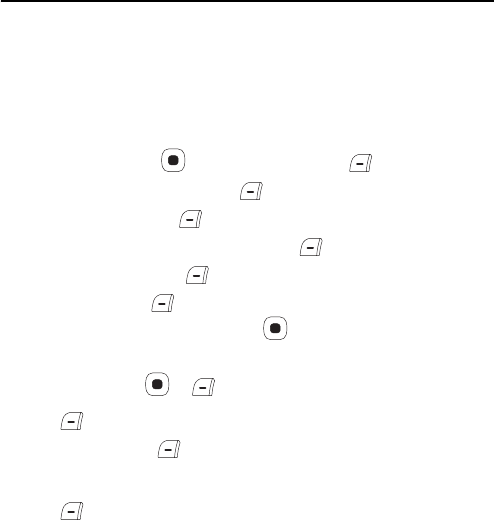
Settings
257
Application Settings
You can set and edit the network connection information for the browser, Email, MMS
and other applications individually.
Setting the Network Connection Information
You can set all the network connection information (network access point, proxy, etc.)
for each application. You can set the information for up to six connections per
application.
1. In standby mode, press , select Settings and press (Select).
2. Select Network&Internet and press (Select).
3. Select Settings and press (Select).
4. Select the application you want to set and press (Select).
5. Select <Empty> and press (Options).
6. Select Edit and press (Select).
7. Select the item you want to set and press .
8. Enter/select information.
For each item, press or (OK) and set the information.
9. Press (Options) after the settings the items.
10. Select Save and press (Select).
A confirmation screen appears.
11. Press (Yes).
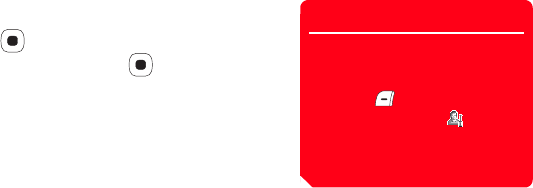
258
Settings
Modifying Application Settings
1. After Step 3 of “Setting the Network Connection Information” (page 257), select the
application you want to set and press .
2. Select the connection information you want to set and press .
Tip
To display, edit, copy or delete
connection information, select
connection information after Step 1
and press (Options). However,
any profile indicated by cannot
be displayed, edited or copied. Also,
a preset factory profile cannot be
deleted.
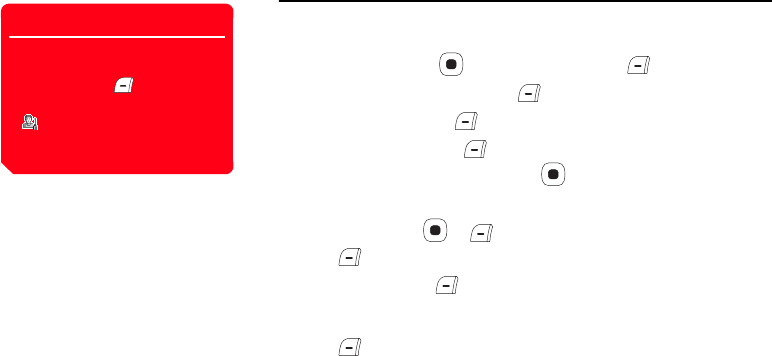
Settings
259
Internet Settings
You can edit the network access point (NAP) information used when modifying
application settings (page 258). You can register information for up to 20 NAP.
1. In standby mode, press , select Settings and press (Select).
2. Select Network&Internet and press (Select).
3. Select Internet and press (Select).
4. Select <Empty> and press (Add).
5. Select the item you want to set and press .
6. Enter/select information.
For each item, press or (OK) and set the information.
7. Press (Options) after the settings the items.
8. Select Save and press (Select).
A confirmation screen appears.
9. Press (Yes).
Tip
To display, copy or delete NAP
information, select information after
Step 3 and press (Options).
However, any profile indicated by
cannot be displayed or copied.
Also, preset factory NAP cannot be
deleted.
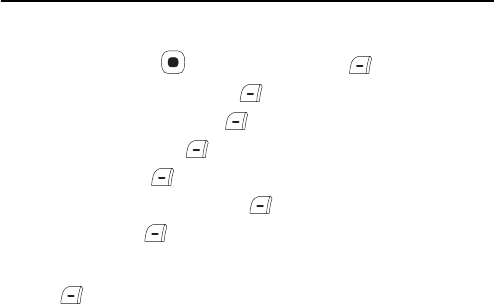
260
Settings
External Device Setting
You can set the access point name (APN) of the network information to write to your
phone in order to perform data communication from an external device such as a PC.
1. In standby mode, press , select Settings and press (Select).
2. Select Network&Internet and press (Select).
3. Select External Device and press (Select).
4. Select <Empty> and press (Options).
5. Select Edit and press (Select).
6. Enter the access point name and press (Options).
7. Select OK and press (Select).
A confirmation screen appears.
8. Press (Yes).

Convenient Functions
Your phone includes various convenient functions.
In This Chapter
❍SIM Tool Kit
❍Calendar
❍Alarms
❍Calculator
❍Converter
❍Voice Recorder
❍Countdown Timer
❍Notepad
❍World Clock
❍Multi Task
❍Barcode
❍Torch

262
Convenient Functions
SIM Tool Kit
The SIM card has preinstalled services available for use on your phone. For details on
the services, contact your service provider.
1. In standby mode, press , select Organiser&Tools and press (Select).
2. Select SIM Tool Kit and press (Select).
A menu appears. Follow the on-screen instructions.
Note
A name other than SIM Tool Kit may
appear depending on the type of SIM
card.
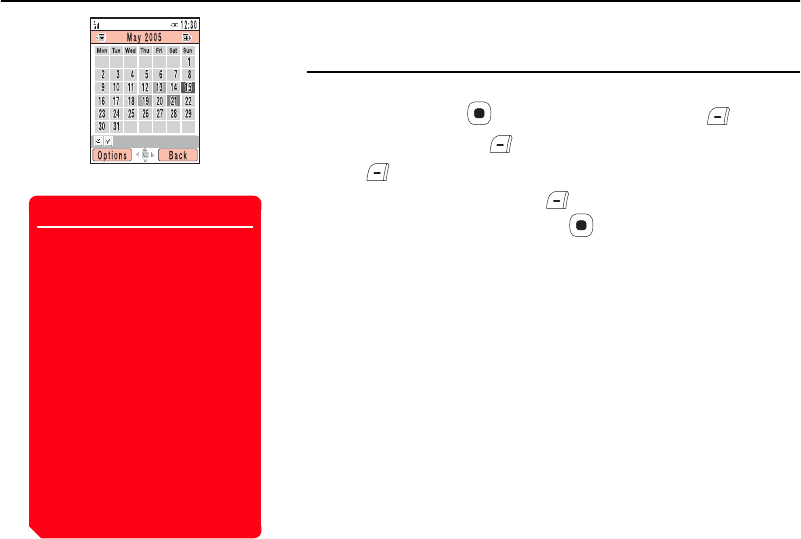
Convenient Functions
263
Calendar
Calendar allows you to save your appointments and use your phone as a scheduler.
Adding a New Appointment
You can save up to 100 appointments.
1. In standby mode, press , select Organiser&Tools and press (Select).
2. Select Calendar and press (Select).
3. Press (Options).
4. Select New Appointment and press (Select).
5. Select the item you want to set and press .
◆Title: Allows you to enter the title (up to 16 characters) of the appointment.
◆Start Date&Time: Allows you to set the start date and time for the appointment.
To set both the date and time, select Date&Time. To select only the date, select
Date only.
◆End Date&Time: Allows you to set the end date and time for the appointment.
◆No Repeat/Daily/Weekly/Monthly/Yearly/End of Month: Allows you to set a
repeat interval and period for the appointment. If you set Monthly for the 29th,
30th or 31st, the repeat is only set for months that include that date. If you set the
start date to the last day of the month, you can set the setting to End of Month.
◆Memo: Allows you to enter the contents (up to 128 characters) of the
appointment.
Month View Screen
Note
• If you change the Home City setting
(page 35) in the clock settings, the
start and end dates and times of
appointments are automatically
changed to those in the time zone
of the city. Also, when DST
(Daylight Saving Time) is set to On,
the start and end dates and times
are automatically changed for
summer time.
• If the power is turned off at the
specified time, it turns on
automatically to start the alarm.
• When the phone profile (page 222)
is set to Silent or Meeting and the
alarm is set to Off, the alarm does
not play.

264
Convenient Functions
◆Alarm: Allows you to set the alarm. Select On and then set the alarm date and
time, alarm tone, alarm volume and vibration. After setting the items, press
(Options) and select Save.
◆Location: Allows you to enter the location information (up to 50 characters).
◆None Category/Meeting/Date/Travel/Holiday/Anniversary/
Miscellaneous: Allows you set the category of the appointment.
6. Press (Options) after setting the items.
7. Select Save and press (Select).
Alarm Date & Time
At the date and time set for an alarm, the alarm plays and “Appointment” appears in the
external display. To stop the alarm, press any key. After the alarm stops, press
(View) to check the appointment details.
Tip
If the time set for an alarm is reached
during an incoming/outgoing voice
call or video call, while taking a
picture or recording a video or during
infrared or other data
communication, the alarm plays after
the call, taking of a picture, recording
of a video or communication ends.

Convenient Functions
265
Checking Appointments
1. In standby mode, press , select Organiser&Tools and press (Select).
2. Select Calendar and press (Select).
The month view screen appears.
Press to switch to the previous month and press to switch to the
next month.
3. Use to select a date and press .
A list of appointments for the selected date appears.
4. Select the appointment you want to check and press .
The details of the appointment appear.
Tip
To switch the view between month,
week, day and all appointments,
press (Options) after Step 2 and
select Calendar View.

266
Convenient Functions
Managing Appointments
You can perform the following operations if you select a date or appointment and press
(Options) from the month, week, day or all appointments view.
◆View: Displays the details of the selected appointment.
◆Day View: Displays a list of appointments set for the selected date.
◆Edit: Allows you to edit the appointment.
◆Delete: Deletes the appointment.
◆Go to Date: Allows you to enter a date and then display the appointments for that
date.
◆Select Multi: Allows you to select multiple appointments in all appointments view
and then delete or export them. To select or unselect appointments, select an
appointment with the cursor and press or press (Options) and select
Mark/Unmark or Mark all/Unmark all.
◆Send vCalendar: Allows you to convert the appointment to vCalendar format and
then save it to My Items or attach it to a message (page 133).
◆Calendar View: Switches the view between month, week, day and all
appointments.
Note
• The items displayed vary
depending on the Calendar view
(page 265).
• To save an edited appointment as a
new appointment without
overwriting the original
appointment, press (Options)
and select Save as.

Convenient Functions
267
Alarms
You can set an alarm to play at a certain time.
1. In standby mode, press , select Organiser&Tools and press (Select).
2. Select Alarms and press (Select).
3. Select the alarm you want to set and press (Select).
4. Select On and press (Select).
The alarm settings screen appears.
5. Select the item you want to set and press .
◆Alarm Time: Allows you to enter an alarm time in accordance with the 24-hour
system. After you enter a time, press (OK).
◆Alarm Tone: Allows you to set the following items. Select an item and press
(Select). After setting the items, press (Options) and select Save.
•Alarm Tone: Allows you to set a sound preinstalled in your phone or a sound
or video saved to My Items as the alarm tone. For details on how to set a
tone, see from Step 5 of “Personalising the Ringtone” (page 224).
•Alarm Volume: Allows you to set the alarm volume.
•Vibration: Allows you to set the alarm vibration.
Note
• If the power is turned off at the
specified time, it turns on
automatically to start the alarm.
• When the phone profile (page 222)
is set to Silent or Meeting and the
alarm is set to Off, the alarm does
not play.

268
Convenient Functions
◆Everyday (default): Allows you to set the alarm to repeat at a specified interval.
Select one of the following items and press .
•Everyday: Starts the alarm everyday.
•Weekdays: Starts the alarm each day from Monday to Friday.
•Select Day: Allows you to specify which days to start the alarm. Press
to add a check mark, press (Options) and select OK.
•Once: Starts the alarm once only on a specified day. To specify a day, press
or .
◆Snooze: Allows you to set the snooze. If the snooze is set to On, the alarm plays
in five minute intervals up to five times.
6. Press (Options) after setting the items.
7. Select Save and press (Select).
The indicator appears in standby mode and the alarm is set.
Alarm Time
At a time set for an alarm, the alarm plays and the time-up screen appears. To stop the
alarm, press any key.
To stop the snooze function, press any key while the alarm is playing and then press
(No).
Tip
If the time set for an alarm is reached
during an incoming/outgoing voice
call or video call, while taking a
picture or recording a video or during
infrared or other data
communication, the alarm plays after
the call, taking of a picture, recording
of a video or communication ends.
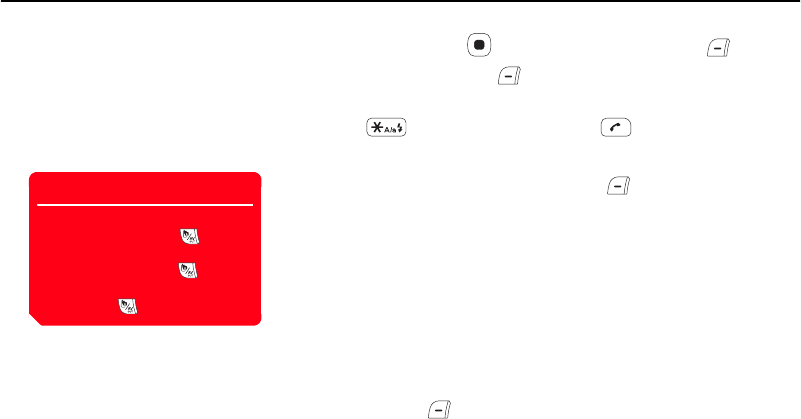
Convenient Functions
269
Calculator
You can use your phone as a calculator.
1. In standby mode, press , select Organiser&Tools and press (Select).
2. Select Calculator and press (Select).
The Calculator screen appears. Follow the onscreen instructions to enter digits.
Press to enter a decimal point and use to switch between + and -.
Calculator Operations
You can perform the following operations if you press (Options) from the Calculator
screen.
◆=: Repeats the last arithmetic operation.
◆Clear All: Deletes the input value and data stored in memory.
◆MS: Saves the input value to memory.
◆M+: Adds the input value to the value stored in memory.
◆MR: Displays the value stored in memory.
◆%: Calculates the percentage.
◆1/X: Calculates the reciprocal.
◆SQRT: Calculates the square root.
◆Set Tax Rate: Allows you to set the tax rate. To change the tax rate, enter a new
rate and press (OK).
Tip
To calculate the tax rate from the
Calculator screen, press . To
display the result of the tax rate
calculation in red, press once.
To display the amount including tax in
green, press again.

270
Convenient Functions
Converter
You can set a currency exchange rate and then perform currency conversion
calculations.
1. In standby mode, press , select Organiser&Tools and press (Select).
2. Select Converter and press (Select).
3. Select the Exchange rate input field and enter the exchange rate.
To enter a decimal point, press .
4. Select the Amount input field and enter the amount you want to convert.
To enter a decimal point, press .
5. Press (Result).
The conversion result appears.
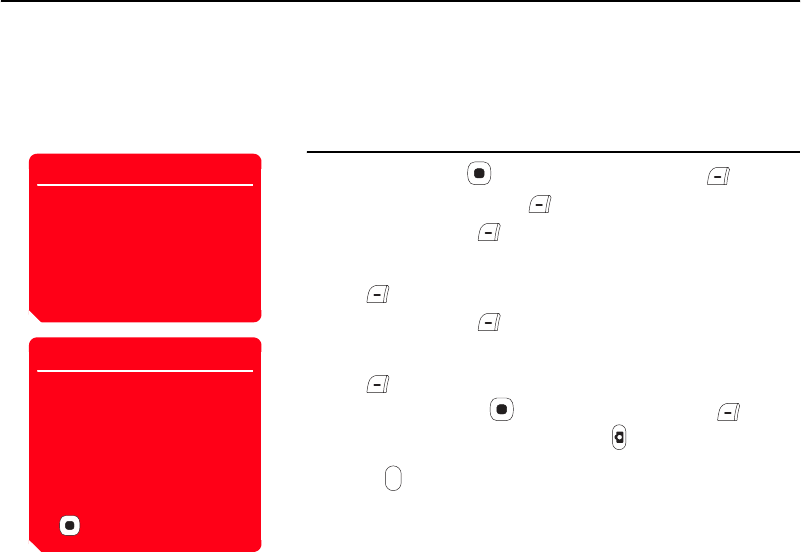
Convenient Functions
271
Voice Recorder
The voice recorder allows you to record sound and then save the recording data to the
Recordings folder in the Sounds&Ringtones folder of My Items. Although the possible
length of recording time depends on the amount of available memory space in My
Items, the maximum recording time is 90 minutes for each recording. Sound is
recorded via the main microphone (mouthpiece).
Recording Sound
1. In standby mode, press , select Organiser&Tools and press (Select).
2. Select Voice Recorder and press (Select).
3. Select Record and press (Select).
The Recording screen appears.
4. Press (Options).
5. Select Record and press (Select).
Recording begins.
6. Press (Pause) to pause recording.
To resume recording, press . To save the recording data, press (Save).
If the phone is in turnover style, use the side key ( ) to start recording or stop
recording and save the recording data automatically. To cancel recording, press the
side key ( ).
Note
If a call is received during recording,
the call takes priority and recording
stops. All recording data is saved
automatically. To prohibit the
reception of calls, messages and
other information during recording,
set offline mode (page 236).
Tip
• The default storage place for
recording data is your phone. To
switch the storage place to the
memory card, select Save sound
to after Step 4 and then select
Memory Card.
• To stop recording and save all
recording data automatically, press
.

272
Convenient Functions
Playing Recordings
1. In standby mode, press , select Organiser&Tools and press (Select).
2. Select Voice Recorder and press (Select).
3. Select Recordings and press (Select).
The contents of the Recordings folder in the Sounds&Ringtones folder of My Items
appear.
4. Select the recording data you want to play and press (Options).
5. Select Play and press (Select).
Tip
To play recording data saved to the
memory card, select Memory Card
after Step 4.
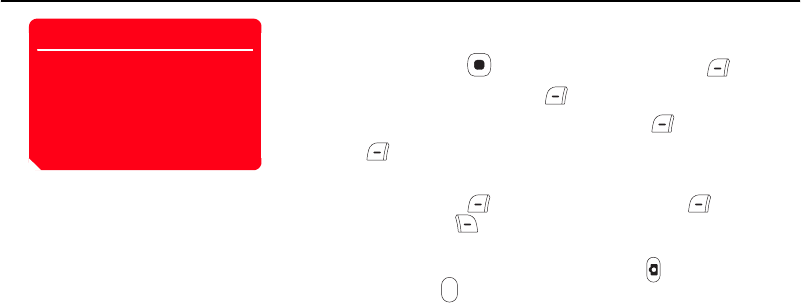
Convenient Functions
273
Countdown Timer
You can set an alarm to notify you when a certain amount of time elapses. The alarm
plays for approximately one minute.
1. In standby mode, press , select Organiser&Tools and press (Select).
2. Select Countdown Timer and press (Select).
3. Enter a start time (10 seconds to 60 minutes) and press (OK).
4. Press (Start).
The timer starts.
To stop the timer, press (Stop). To restart the timer, press (Restart). To
reset the timer, press (Reset) while the timer is stopped.
When your phone is in turnover style, you can also operate the timer with the side
keys. To start/stop/restart the timer, press the side key ( ). To reset the timer,
press the side key ( ) while the timer is stopped.
Note
The level of the alarm volume is that
set for the Multimedia Volume setting
(page 228) of the phone profile
currently set. If the phone profile is
set to Silent, no sound is emitted for
the alarm. Your phone vibrates only.

274
Convenient Functions
Notepad
You can use your phone as a notepad for storing text input. You can also access the
saved data during character input and editing. You can enter up 256 characters for
each memo and store up to 20 memos in the notepad.
1. In standby mode, press , select Organiser&Tools and press (Select).
2. Select Notepad and press (Select).
3. Select the position to which you want to save the memo and press .
4. Enter the contents of the memo and press .
Note
To edit or delete a memo, select the
memo after Step 2 and press
(Options).

Convenient Functions
275
World Clock
World Clock Viewer allows you to check the date and local time in major cities around
the world, as well as the time difference.
1. In standby mode, press , select Organiser&Tools and press (Select).
2. Select World Clock and press (Select).
World Clock Viewer appears.
3. Use to select a city.
The date, local time and time difference for the selected city appear.
A green circle indicates your home city on the map. A red circle indicates the
alternate city.
For details on changing the Home City and Alternate City settings, see “World Clock
Setting” (page 35).
Tip
If you press (DSTon) after Step
3, the time switches to Daylight
Saving Time (DST) and the
indicator appears on the display.

276
Convenient Functions
Multi Task
This feature allows you to run up to three functions (applications) simultaneously and
switch between them.
Starting a New Application
You can start another application without ending the application you are using.
1. Press while an application is in use.
The Multi Task screen appears.
2. Select Main Menu and press (Select).
3. Select the application you want to start and press (Select).
The selected application starts.
Note
• There may be insufficient memory
to start a third application
depending on the applications
running.
• An application may not be able to
be switched to in the Multi Task
screen depending on how the
application was started.
Tip
When three applications are running,
the indicator appears at the top
of the display.

Convenient Functions
277
Switching Applications
1. Press while an application is in use.
The Multi Task screen appears.
2. Select the application to which you want to switch and press .
The application is switched to the selected application.
Ending an Application
1. Select the application you want to end in the Multi Task screen and press
(Options).
2. Select End or End All and press (Select).
◆End: Ends the selected application.
◆End All: Ends all applications.
Tip
• To make a call, press
(Options) after Step 1 and select
Dial Number.
• You can also confirm missed calls,
unread messages and other
information after Step 1.

278
Convenient Functions
Barcode
The external camera allows you to scan barcodes (QR codes). You can connect to a URL
included in the scanned information or create a message to send to an address
included in the scanned information. You can save up to ten scanned data items.
However, this number depends on the amount of available memory space. When a
barcode has been divided into data areas, you can scan up to 16 data areas
consecutively. QR Code
Note
• Some barcodes have save/forward
restrictions and some barcodes
cannot be scanned.
• The camera may not be able to
scan a barcode that is dirty or in a
shadow.
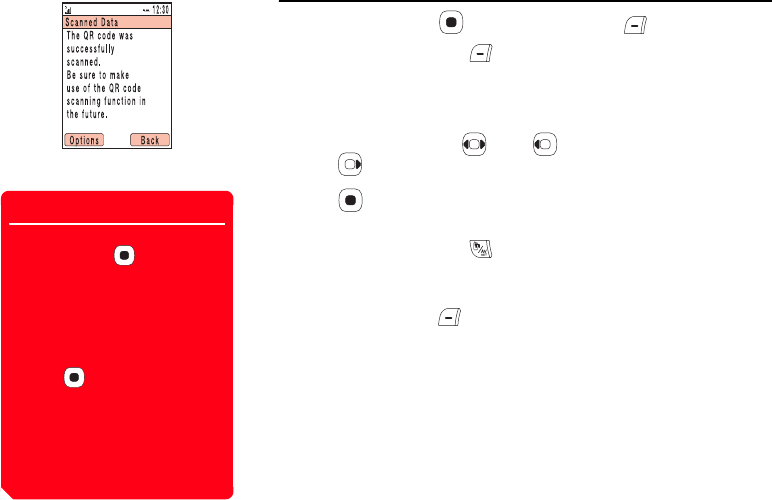
Convenient Functions
279
Scanning a Barcode
1. In standby mode, press , select Camera and press (Select).
2. Select Scan Data and press (Select).
The Scan QR Code screen appears.
3. Align the barcode you want to scan in the guide of the main display.
To adjust the exposure, use . Press to make the barcode darker and
press to make the barcode lighter.
4. Press .
Scanning begins.
To perform auto focus, press .
The scanned data appears in the display. If the barcode has been divided, scan the
other data areas.
To save the data, press (Options) and select Save.
After Scanning Barcode
Tip
• If the scanned data begins with
MAILTO:, press after Step 4 to
create an SMS/MMS message. If it
begins with MEMORY:, you can
save it to the Contacts list (page
64).
• If you select the text of a link
(indicated by a blue underline) and
press , you can make a call,
create a message, save data to the
Contacts list, connect to a URL,
etc. If the scanned data contains
image or sound data, you can
display/play the data, save the data
to My Items, etc.

280
Convenient Functions
Saved Barcodes
1. After Step 2 of “Scanning a Barcode” (page 279), press (Options).
2. Select Scanned Data List and press (Select).
3. Select the scanned data you want to use and press .
The barcode data appears.
For details on the operations you can perform while barcode data is displayed, see
“Scanning a Barcode” (page 279).
Tip
To rename or delete scanned data,
press (Options) after Step 2.
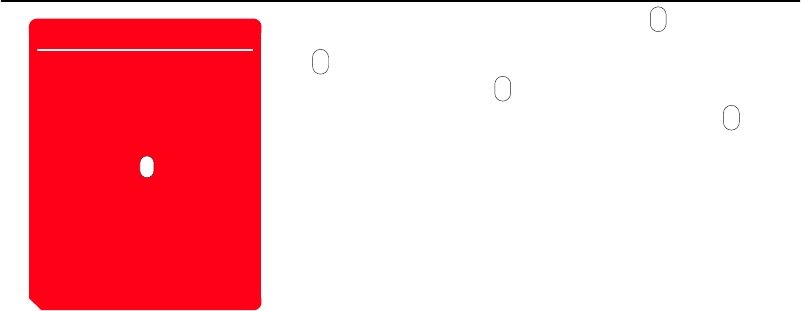
Convenient Functions
281
Torch
When the Torch function has been assigned to the side key ( ) in the shortcut
settings (page 232), you can turn on the mobile light if you press and hold the side key
().
1. Press and hold the side key ( ).
The mobile light turns on and remains lit while you hold the side key ( ).
Note
• Do not turn on the mobile light
while it is close to anyone's eyes as
doing so may damage the person's
eyesight. Also, check the direction
with which light will be emitted
before turning on the mobile light.
• If the side key ( ) is set to
another function (page 232), this
function is unavailable.
• While the phone lock is set (page
249), the key guard is set (page
252) or the countdown timer is
activated (page 273), the mobile
light cannot be turned on.
282
Convenient Functions

File Transfer & Synchronisation
You can use Bluetooth™, infrared, a USB cable or a memory card to transfer data between your
phone and other phones, PCs and other devices. These capabilities allow you to back up data and
manage the same data on multiple devices.
In This Chapter
❍File Transfer
❍File Synchronisation
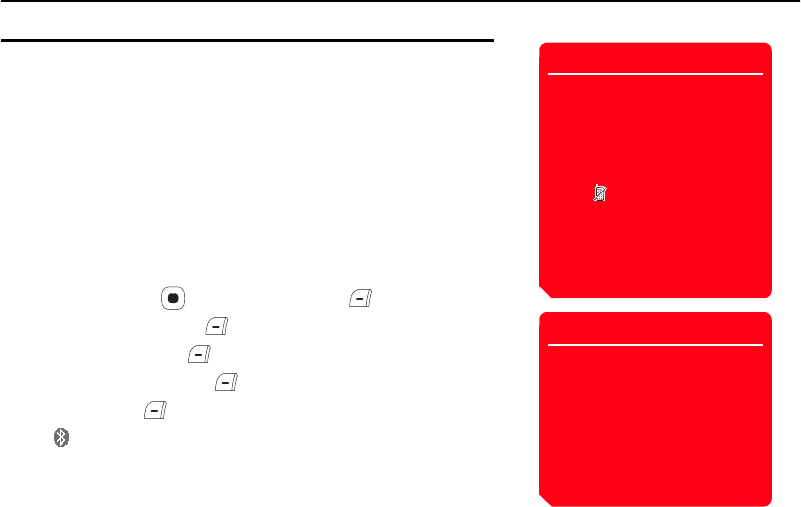
284
File Transfer & Synchronisation
File Transfer
Using Bluetooth™ for Transferring Data
You can transfer the data of the Contacts list, Calendar and My Items between your
phone and Bluetooth™ compatible PCs and phones. Bluetooth™ also allows you to
use a wireless headset or an in-car device for handsfree calls. We recommend using
Bluetooth™ while your phone and the other device are within 10 metres of each other.
For details on the operating procedures of the other device, refer to the instruction
manual for that device.
About Bluetooth™
Bluetooth™ is a technology that facilitates wireless communication between PCs and
devices such as handsfree compatible devices.
Activating Bluetooth™
1. In standby mode, press , select Settings and press (Select).
2. Select Connectivity and press (Select).
3. Select Bluetooth and press (Select).
4. Select Switch On/Off and press (Select).
5. Select On and press (Select).
The indicator appears at the top of the display.
Note
• If a USB cable is connected to your
phone while you are using
Bluetooth™, the Bluetooth™
connection ends.
• When Bluetooth™ is used to send/
receive data, flight mode is set.
The indicator appears at the
top of the display while flight mode
is set, except when a dial-up
connection was established. When
the sending/receiving of data is
complete, flight mode is cancelled.
Tip
To transfer the data of My Items,
perform the transfer operation from
the other Bluetooth™ compatible
device after Step 5 of “Activating
Bluetooth™.” However, files in
Games&More, My Saved Pages and
Templates and copyright protected
files cannot be sent.

File Transfer & Synchronisation
285
Registering a Bluetooth™ Compatible Device
Before establishing a Bluetooth™ connection, you need to perform a search for the
Bluetooth™ compatible device to be connected. You can register up to 20 detected
Bluetooth™ compatible devices.
1. After Step 3 of “Activating Bluetooth™” (page 284), select Paired Devices and
press (Select).
2. Select Search and press (Select).
3. Select a Bluetooth™ compatible device from the detected devices that appear and
press (Select).
4. Enter your PIN code (4 to 16 digits) and press (OK).
Setting a Bluetooth™ Compatible Device as a Trusted Device
If you set a registered Bluetooth™ compatible device as a trusted device, a
confirmation screen is not displayed and a connection is established when a connection
request is received from that device.
1. After Step 3 of “Activating Bluetooth™” (page 284), select Paired Devices and
press (Select).
2. Select the Bluetooth™ compatible device you want to set as the trusted device and
press (Select).
3. Select Trust Device and press (Select).
4. Select On and press (Select).
Tip
If you enter the same PIN code (4 to
16 digits) on both your phone and a
Bluetooth™ compatible device, the
Bluetooth™ compatible device is
registered.
Tip
To cancel this setting for a device you
no longer want to trust, select Off in
Step 4.
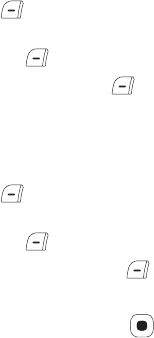
286
File Transfer & Synchronisation
Displaying Details of a Registered Bluetooth™ Compatible
Device
You can display the device name, device address, device class and supported profiles of
a Bluetooth™ compatible device.
1. After Step 3 of “Activating Bluetooth™” (page 284), select Paired Devices and
press (Select).
2. Select the Bluetooth™ compatible device for which you want to display the details
and press (Select).
3. Select Details and press (Select).
Changing the Name of a Registered Bluetooth™ Compatible
Device
1. After Step 3 of “Activating Bluetooth™” (page 284), select Paired Devices and
press (Select).
2. Select the Bluetooth™ compatible device for which you want to change the name
and press (Select).
3. Select Renames and press (Select).
4. Enter your security code (page 38).
5. Change the name and press .

File Transfer & Synchronisation
287
Deleting a Registered Bluetooth™ Compatible Device
1. After Step 3 of “Activating Bluetooth™” (page 284), select Paired Devices and
press (Select).
2. Select the Bluetooth™ compatible device you want to delete and press
(Select).
3. Select Delete and press (Select).
Response to Detection by Other Bluetooth™ Compatible
Devices
1. After Step 3 of “Activating Bluetooth™” (page 284), select My Phone ID and press
(Select).
2. Select Visibility and press (Select).
3. Select Show My Phone or Hide My Phone and press (Select).
◆Show My Phone: Allows your phone to be recognised when it is detected during
a search by a Bluetooth™ compatible device in the vicinity.
◆Hide My Phone: Prevents your phone from being recognised when it is detected
during a search by a Bluetooth™ compatible device in the vicinity.
Tip
You may still receive a connection
request even if Visibility is set to
Hide My Phone.
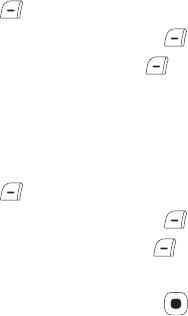
288
File Transfer & Synchronisation
Displaying Details of Your Phone
You can display the device name, device address, device class and supported profiles of
your phone.
1. After Step 3 of “Activating Bluetooth™” (page 284), select My Phone ID and press
(Select).
2. Select My Phone and press (Select).
3. Select Details and press (Select).
Changing the Name of Your Phone
You can change the name displayed on another Bluetooth™ compatible device when
your phone is detected.
1. After Step 3 of “Activating Bluetooth™” (page 284), select My Phone ID and press
(Select).
2. Select My Phone and press (Select).
3. Select Rename and press (Select).
4. Enter your security code (page 38).
5. Change the name and press .

File Transfer & Synchronisation
289
Using Bluetooth™ for Sending Data
You can send the Contacts list, Calendar and files saved to the Picture and Digital
Camera folders of My Items to a Bluetooth™ compatible device.
1. Set up the other Bluetooth™ compatible device to receive data.
2. Select Via Bluetooth from the Options menu of a function and press (Select).
3. Press (OK) to switch to flight mode.
4. Select the destination Bluetooth™ compatible device and press (Select).
Note
Copyright protected files cannot be
sent.
Tip
To send the owner information of the
Contacts list, select Send My vCard
from the Contacts menu (page 63)
and then select Via Bluetooth.

290
File Transfer & Synchronisation
Using Bluetooth™ for Receiving Data
When Bluetooth™ is enabled, you can receive data.
1. Press (Yes) when a confirmation screen appears after a connection request is
received from a Bluetooth™ compatible device in the vicinity.
2. Enter your PIN code (4 to 16 digits) and press (OK).
3. Press (OK) to switch to flight mode.
4. Select Save and press (Select).
If you select Reject, the connection ends if there is only one data item to receive.
However, if there are multiple data items to receive, the confirmation screen for the
next data item appears.
Connecting to a Handsfree Compatible Device
1. After Step 3 of “Activating Bluetooth™” (page 284), select Paired Devices and
press (Select).
2. Select the handsfree compatible device and press (Select).
3. Select Connect and press (Select).
Tip
• The received Contacts list and
Calendar data is saved to the
Contacts list and Calendar.
• When importing a vObject that has
a picture to the Contacts list, the
picture cannot be saved to the
Contacts list if it exceeds W112 ×
H112.
• The save locations of data are
determined by the extensions.
Tip
To perform handsfree
communication, the handsfree
compatible device needs to be
registered. For details, see
“Registering a Bluetooth™
Compatible Device” (page 285).

File Transfer & Synchronisation
291
Performing Handsfree Communication
1. Press ( ) and switch to handsfree communication.
The indicator appears on the display during handsfree communication.
Setting Handsfree
You can set the mode for making and receiving calls while a handsfree compatible
device is connected.
1. After Step 3 of “Activating Bluetooth™” (page 284), select My Phone ID and press
(Select).
2. Select Handsfree Setting and press (Select).
3. Select the mode you want to set and press (Select).
◆Handsfree Mode: Allows you to make and receive handsfree calls from your
phone.
◆Private Mode: Allows you to make and receive regular calls from your phone.
Note
The other party’s voice cannot be
recorded during a handsfree call.
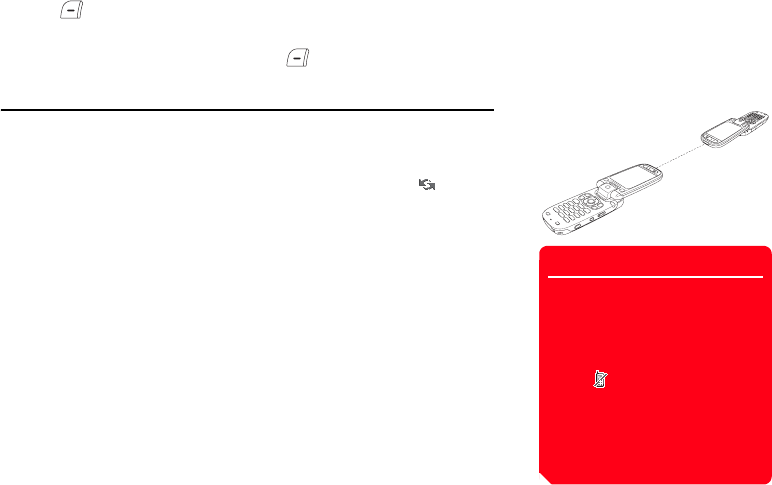
292
File Transfer & Synchronisation
Using Bluetooth™ for Dial-up Connections
When Bluetooth™ is enabled, you can establish a dial-up connection.
1. Press (Yes) when a confirmation screen appears after a connection request is
received from a Bluetooth™ compatible device in the vicinity.
2. Enter your PIN code (4 to 16 digits) and press (OK).
Using Infrared for Transferring Data
You can use infrared to exchange the Calendar data of your phone, Contacts list entries
of your phone, memory card or SIM card, pictures/videos taken or recorded with the
camera and My Items data that can be forwarded with an infrared compatible phone,
PC or other device. You can also restore or backup of My Items data. The indicator
appears at the top of the display during transfer. To transfer data between your phone
and a PC, the supplied PC management software My Mobile needs to be installed on
the PC. The infrared function of your phone complies with IrMC 1.1. As shown in the
illustration on the right, bring your phone and an infrared compatible device to within 30
centimetres of each other and point both infrared ports directly towards each other. Do
not place an object between them. For details on the operating procedures of the other
device, refer to the instruction manual for that device.
Note
• If a USB cable is connected to your
phone while you are using infrared,
the infrared communication ends.
• When infrared is used to send/
receive data, flight mode is set.
The indicator appears at the
top of the display while flight mode
is set, except when a dial-up
connection was established. When
the sending/receiving of data is
complete, flight mode is cancelled.

File Transfer & Synchronisation
293
Using Infrared for Sending Data
1. Set up the other infrared compatible device to receive data.
2. Select Via Infrared from the Options menu of a function and press (Select).
3. Press (OK) to switch to flight mode.
Using Infrared for Receiving Data
1. In standby mode, press , select Settings and press (Select).
2. Select Connectivity and press (Select).
3. Select Infrared and press (Select).
4. Select Incoming Data and press (Select).
5. Enter your security code (page 38).
6. Press (OK) to switch to flight mode.
7. Select Save and press (Select).
If you select Reject, the connection ends if there is only one data item to receive.
However, if there are multiple data items to receive, the confirmation screen for the
next data item appears.
Note
The following files cannot be sent.
• Files in Games&More, My Saved
Pages and Templates of My Items
• Copyright protected files
Tip
The save locations of data are
determined by the extensions.
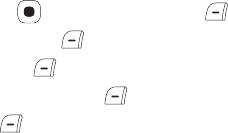
294
File Transfer & Synchronisation
Using Infrared for Backing Up Data
You can back up files and folders in Pictures, Videos, Sounds&Ringtones and Other
Documents of My Items to a PC. Copyright protected files cannot be backed up.
1. After Step 6 of “Using Infrared for Receiving Data” (page 293), follow the
instructions on the PC to back up data from your phone to the PC.
Using Infrared for Restoring Data
You can restore Pictures, Videos, Sounds&Ringtones and Other Documents of My Items
saved on a PC to your phone.
1. After Step 6 of “Using Infrared for Receiving Data” (page 293), follow the
instructions on the PC to restore data from the PC to your phone.
Using Infrared for Dial-up Connections
1. In standby mode, press , select Settings and press (Select).
2. Select Connectivity and press (Select).
3. Select Infrared and press (Select).
4. Select Dial-up Connection and press (Select).
5. Select On and press (Select).
Infrared Remote Controller Function
You can use your phone as a remote controller for TVs and other electric home appliances.
◆This function requires a separate Java™ application (page 181) compatible with
the infrared function.
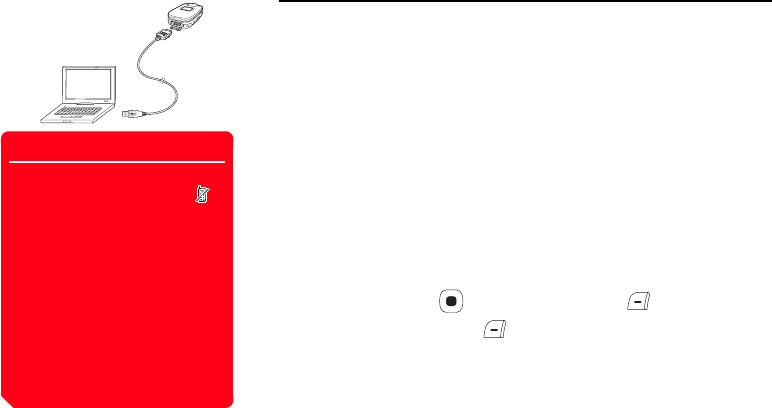
File Transfer & Synchronisation
295
◆Bring the infrared port (page 292) of your phone to within approximately 5 metres
of the TV or other electric home appliance. Do not place an object between them.
◆Your phone may not work properly as a remote controller in direct sunlight,
directly under fluorescent lighting or near other infrared devices.
◆A dirty infrared port may cause an operation failure. Gently remove any dirt with a
soft cloth while making sure not to scratch the port.
Using a USB Cable for Transferring Data
As shown in the illustration on the left, you can use a USB cable to connect your phone
to a PC and then transfer Contacts list, Calendar and My Items data. Before you connect
the USB cable, the USB host driver and PC management software My Mobile included
on the CD-ROM supplied with your phone need to be installed on the PC. This function
supports USB 1.1 and USB 2.0. For details on the PC operating environment required to
use this function, refer to My Mobile.
Using a USB Cable for Sending Data
You can send the data of the Contacts list, Calendar and My Items.
1. Follow the procedure below to connect your phone and a PC with a USB cable.
1) Open the external connector cover of your phone.
2) Insert the plug of the USB cable into the external connector.
3) Connect the USB cable to the USB port of the PC.
2. In standby mode, press , select Settings and press (Select).
3. Select Connectivity and press (Select).
Note
• When you send/receive data, flight
mode is set automatically. The
indicator appears at the top of the
display while flight mode is set,
except when a dial-up connection
was established. When the
sending/receiving of data is
complete, flight mode is cancelled.
• The following files cannot be sent.
• Files in Games&More, My Saved
Pages and Templates of My
Items
• Copyright protected files

296
File Transfer & Synchronisation
4. Select USB and press (Select).
5. Select Data Transfer and press (Select).
6. Press (OK) to switch to flight mode.
7. Follow the instructions on the PC to receive data from your phone to the PC.
Using a USB Cable for Receiving Data
You can receive data to the Contacts list, Calendar and My Items.
1. After Step 6 of “Using a USB Cable for Sending Data” (page 295), follow the
instructions on the PC to send data from the PC to your phone.
Using a USB Cable for Backing Up Data
You can back up files and folders in Pictures, Videos, Sounds&Ringtones and Other
Documents of My Items.
1. After Step 6 of “Using a USB Cable for Sending Data” (page 295), follow the
instructions on the PC to back up data from your phone to the PC.
2. Enter your security code (page 38).
Note
When you receive all vObjects (page
203), any of the previous vObjects in
your phone that are the same as the
received vObjects are deleted.
Note
Files that cannot be transferred are
not backed up.

File Transfer & Synchronisation
297
Using a USB Cable for Restoring Data
You can restore Pictures, Videos, Sounds&Ringtones and Other Documents of My Items
saved on a PC to your phone.
1. After Step 6 of “Using a USB Cable for Sending Data” (page 295), follow the
instructions on the PC to restore data from the PC to your phone.
2. Enter your security code (page 38).
Using a USB Cable for Dial-up Connections
You can use a USB cable to connect your phone to a PC and then access the Internet,
etc. For details on the configuration/operation of the PC modem, refer to the instruction
manual for the PC.
Using a USB Cable for Charging
1. After Step 4 of “Using a USB Cable for Sending Data” (page 295), select Battery
Charge and press (Select).
2. Select On and press (Select).
Using the Memory Card for Transferring Data
You can transfer Contacts list and Calendar data between your phone and memory
card. We recommend using the memory card for backing up personal data. The
memory card needs to be formatted before it is used for the first time. For details on
formatting, see “Formatting the Memory Card” (page 206).
Note
• All the data may not be able to be
restored from some backup files.
• All the data of the restore
destination is overwritten.
Note
• Charging is not possible while your
phone is turned off.
• Charging may not be possible
depending on the connection
settings of the PC.
Note
When you back up/restore data, flight
mode is set. The indicator
appears at the top of the display
while flight mode is set. When the
backing up/restoring of data is
complete, flight mode is cancelled.

298
File Transfer & Synchronisation
Backing Up Data to the Memory Card
1. Insert the memory card in the slot of your phone.
2. In standby mode, press , select Organiser&Tools and press (Select).
3. Select Backup and press (Select).
4. Select Backup and press (Select).
5. Select the data you want to back up and press .
A check mark is added to the check box.
◆Contacts List: Backs up the Contacts list.
◆Calendar: Backs up the Calendar.
6. Press (Options).
7. Select Backup and press (Select).
8. Enter your security code (page 38).
A confirmation screen appears.
9. Press (Yes).
A confirmation screen appears.
10. Press (Yes) or (No) in accordance with the confirmation screen.
Press (Yes) to include pictures or press (No) to not include pictures when
backing up the Contacts list and press (Yes) to include past appointments or
press (No) to not include past appointments when backing up the Calendar.
11. Press (OK) to switch to flight mode.
A backup file is created in the memory card.
Tip
After Step 6, select Unmark to
remove the check mark from the
select data and select Unmark All to
remove all check marks.
Note
It is recommended that you do not
use a PC or other device to view or
edit a backup file in the memory card
because doing so may result in the
file being damaged.
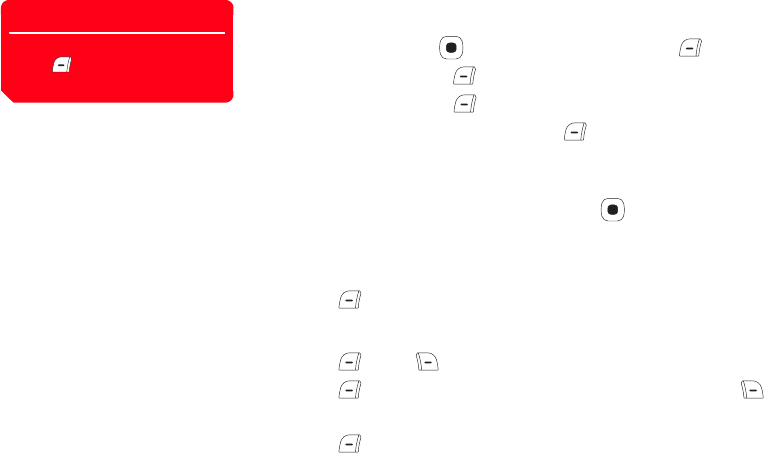
File Transfer & Synchronisation
299
Restoring Data from the Memory Card
1. Insert the memory card in the slot of your phone.
2. In standby mode, press , select Organiser&Tools and press (Select).
3. Select Backup and press (Select).
4. Select Restore and press (Select).
5. Select the data you want to restore and press (Select).
◆Contacts List: Displays a list of Contacts list backup files.
◆Calendar: Displays a list of Calendar backup files.
6. Select the backup file you want to restore and press .
7. Enter your security code (page 38).
A confirmation screen appears.
8. Press (Yes).
A confirmation screen appears.
9. Press (Yes) or (No) in accordance with the confirmation screen.
Press (Yes) to overwrite all the data in the restore destination and press
(No) to add the data.
10. Press (OK) to switch to flight mode.
Tip
To delete one or all backup files,
press (Options) after Step 5 and
select Delete or Delete All.
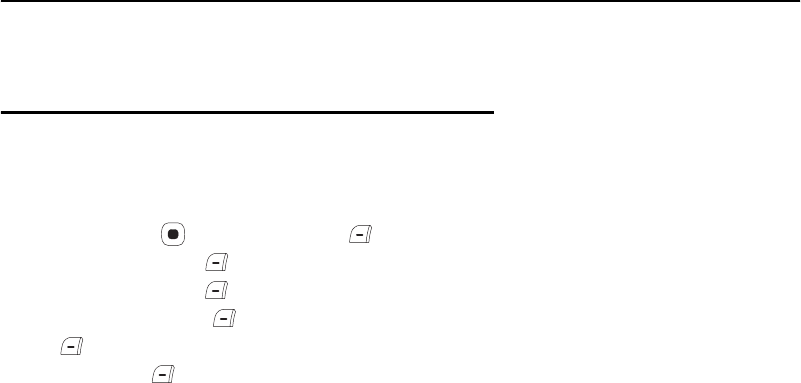
300
File Transfer & Synchronisation
File Synchronisation
You can use the network of a service provider, infrared or USB cable to synchronise the
data on a network server or PC with the Contacts list and Calendar of your phone. The
supplied data management software My Mobile needs to be installed.
Using a Network for Synchronisation
You can register a server on your phone to synchronise the Contacts list via the network
of a service provider.
Creating a Server Profile
You can create up to five server profiles.
1. In standby mode, press , select Settings and press (Select).
2. Select Connectivity and press (Select).
3. Select Synchronise and press (Select).
4. Select Server Profile and press (Select).
5. Press (Options).
6. Select Add and press (Select).
A server profile is created.

File Transfer & Synchronisation
301
7. Select a server profile and press (Options).
8. Select Edit and press (Select).
9. Select the item you want to set and press .
◆Rename: Allows you to change the name of the selected server.
◆Username: Allows you to set the user name for the server.
◆Password: Allows you to set a password.
◆URL: Allows you to set the server URL.
◆Sync. Mode: Allows you to select Manual or Automatic for synchronisation. If
you set Sync. Mode to Automatic, the data is synchronised at regular intervals
automatically.
◆Sync. Type: Allows you to set the synchronisation direction for data.
•Normal: Updates both the data on your phone and the data on the server so
as both sets of data of match. Your phone and the server send to each other
any data that has been updated since the last synchronisation.
•Client Update: Updates the data on the server. Your phone sends to the
server any data that has been updated on your phone since the last
synchronisation.
•Server Update: Updates the data on your phone. The server sends to your
phone any data that has been updated on the server since the last
synchronisation.
•Backup: Backs up the Contacts list on your phone to the server.
•Restore: Restores the data on the server to the Contacts list of your phone.
Tip
• To display the Edit screen for your
phone name, select Phone Name
after Step 3.
• You can perform the following
operations after Step 7.
•Synchronise: Synchronises the
Contacts list using the selected
server profile.
•View: Displays the details of the
selected server profile.
•Add: Allows you to add a server
profile.
•Delete: Deletes the selected
server profile.
•Copy: Creates a copy of the
selected server profile.
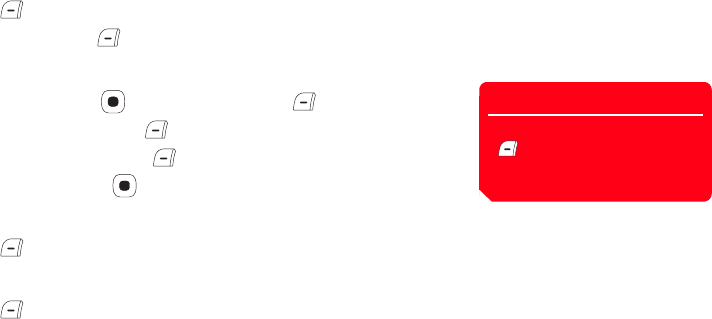
302
File Transfer & Synchronisation
◆Confirmation: Allows you to set whether a confirmation screen is displayed each
time synchronisation starts.
◆Database Settings: Allows you to set the database of the selected server.
•Location: Allows you to set the location for saving data on the server.
•User ID: Allows you to set the User ID for the database.
•Password: Allows you to set the login password for the database.
•Synchronisation: Allows you to set Enable or Disable.
◆Network Settings: Allows you to set the network connection information
(network access point, proxy) of the selected network.
10. Press (Options).
11. Select Save and press (Select).
Synchronising the Contacts List
1. In standby mode, press , select Contacts and press (Select).
2. Select Synchronise and press (Select).
3. Select Server Profile and press (Select).
4. Select a server and press .
A confirmation screen appears.
5. Press (Yes).
A confirmation screen appears.
6. Press (OK).
Tip
You can register a server if you press
(Options) after Step 3 and then
proceed from Step 6 of “Creating a
Server Profile” (page 300).
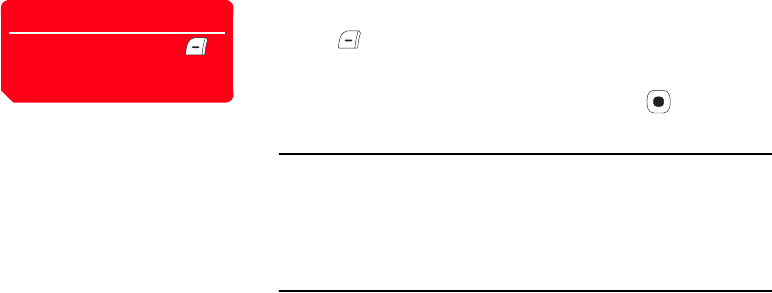
File Transfer & Synchronisation
303
Checking Synchronisation Logs
1. After Step 2 of “Synchronising the Contacts List” (page 302), select Sync. Log and
press (Select).
Logs for the last five synchronisations performed using a network appear.
2. Select the log for which you want to check details and press .
Using Infrared for Synchronisation
You can use infrared to synchronise data on a PC with the Contacts list and Calendar of
your phone.
1. After Step 6 of “Using Infrared for Receiving Data” (page 293), follow the
instructions on the PC to synchronise data from the PC.
Using a USB Cable for Synchronisation
You can use a USB cable to synchronise data on a PC with the Contacts list and
Calendar of your phone.
1. After Step 6 of “Using a USB Cable for Sending Data” (page 295), follow the
instructions on the PC to synchronise data from the PC.
Tip
To delete one or all logs, press
(Options) and select Delete or
Delete All after Step 1.
304
File Transfer & Synchronisation

Appendix
In This Chapter
❍Troubleshooting
❍Specifications & Accessories
❍EU Warranty
❍Index
❍Glossary
❍Health and Safety Information
❍Menu Structure
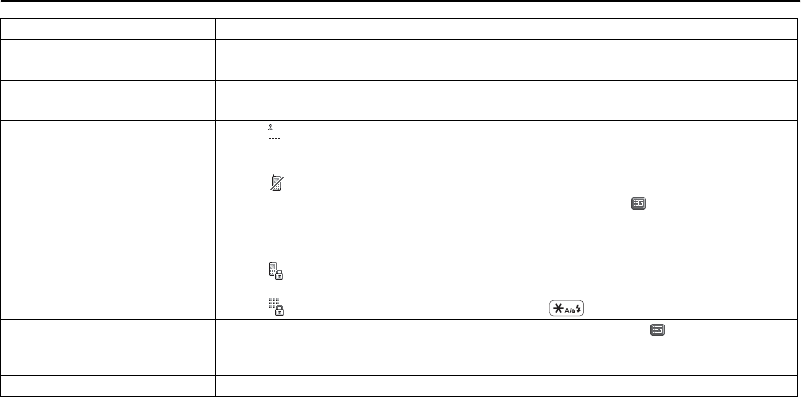
306
Appendix
Troubleshooting
Problem Possible Causes and Remedies
Cannot turn the power on. • Make sure the battery pack is inserted correctly (page 28).
• Make sure the battery is charged (page 29).
Cannot charge the battery. • Make sure the battery pack is inserted correctly (page 28).
• Make sure the connectors or contacts of the AC adapter and battery pack are not dirty (page 29).
Cannot make voice and video calls. • If the indicator appears on the display, a call cannot be made because you are in a location where a
signal cannot reach your phone or that is out of the service area. Move to a location where a signal can
reach your phone or that is in the service area.
• If the indicator appears on the display, cancel flight mode (page 236).
• A video call can only be made in an area with 3G coverage. Make sure the indicator for indicating you
are in an area with 3G coverage appears on the display in standby mode.
• If a PIN code is incorrectly entered three times in a row, the PIN lock is set and a call cannot be made
because access to the SIM card is blocked. Enter the PUK code to cancel the PIN lock (page 26).
• If the
indicator appears on the display, enter your security code (page 38) to cancel the phone lock (page
249).
• If the indicator appears on the display, press and hold to cancel the key guard (page 252).
Cannot receive voice and video calls. • A video call can only be received in an area with 3G coverage. Make sure the indicator for indicating
you are in an area with 3G coverage appears on the display in standby mode.
• Make sure your phone is not set to reject calls (page 243) or divert calls (page 49).
Cannot hear the other party. • Check the volume level of the earpiece/speaker (pages 42, 87) and/or move to a quiet location.

Appendix
307
Problem Possible Causes and Remedies
Cannot use the Web. • If the indicator appears on the display, cancel flight mode (page 236).
• Check your subscription status. Contact your service provider.
• The network settings may be incorrect. Check the network settings (page 257). For details on the network
settings, contact your service provider.
Cannot use SMS and MMS. • If the indicator appears on the display, cancel flight mode (page 236).
• If the indicator appears on the display, a message cannot be received because memory is full. Delete
messages no longer required (page 151).
• Check your subscription status. Contact your service provider.
• Make sure the service centre number (page 149) is correct. For details on the service centre number,
contact your service provider.

308
Appendix
Specifications & Accessories
Specifications
TS 921
Accessories
◆Battery Pack (TSBS01EU)
◆AC Adapter (TSCS01EU/TSCS01UK)
◆Desk Top Cradle (TSES01EU)
◆Cigarette Lighter Charger (TSJS01EU)
◆USB Cable for PC Connection (TSFD01EU)
Frequency Range
Within 3G (UMTS) 2100 1920 - 2170 MHz
Within GSM 900 880 - 960 MHz
Within DCS 1800 1710 - 1880 MHz
Within PCS 1900 1850 - 1990 MHz
Continuous Talk Time
Within 3G (UMTS) area Approx. 180 min.
Video Call Approx. 100 min.
Within GSM area Approx. 320 min.
Continuous Standby Time
Within 3G (UMTS) area Approx. 350 hrs.
Within GSM area Approx. 270 hrs.
Charging Time Approx. 140 min.
Dimensions (W × H × D) Approx. 50 × 111 × 25 mm
Maximum Output
Within 3G (UMTS) 2100 Class 3 0.25 W
Within GSM 900 Class 4 2 W
Within DCS 1800 Class 1 1 W
Within PCS 1900 Class 1 1 W
Weight Approx. 148 g
AC Adapter
Input Voltage 100 to 240 VAC 50/60 Hz
Charging Temperature Range 5 to 35°C

Appendix
309
EU Warranty
Your Toshiba mobile telephone contains no user serviceable parts.
For further information on service please contact your retailer or
service provider.

310
Appendix
Index
Numbers
3G/UMTS 32, 256, 314
AAccessories 308
Alarms 267
Alternate city 35, 275
Any key answer 240
Audio files 188
Auto answer 237
For video calls 92
Auto Launch 180
BBacking up data 294, 296, 298
Backlight 94, 219
Barcode 278
Battery 28
Alarm 228
Charging 29
Inserting & removing 28
Bluetooth™ 284
Transferring data 284
Bookmarks 175
Browser settings 180
CCalculator 269
Calendar 263
Adding a new appointment 263
Managing appointments 266
Call Answering a call 40
Answering a video call 86
Any key answer 240
Auto answer 237
Auto answering for video calls 92
Making a call 39
Making a video call 85
Making an international call 39
Open to answer 240
Call barring service 52
Changing your call barring service
code 53
Call costs 44, 57
Call costs service 57
Call diverting service 49
Call logs 43
Dialled numbers 43
Missed calls 43
Received calls 43
Call time 44
Call waiting service 54
Caller ID service 57
Camera 98
Car, phone profiles 222
Cell information display 220
Certification 180
Character input modes 58
Multi tap mode 59
Numeric input mode 60
Symbol input mode 60
T9 mode 59, 62
Charging, battery 29
Using a USB cable 297
Clearing memory 253
Codes 38
PIN/PIN2 26, 246, 247
PUK/PUK2 26, 247
Connecting
Using a USB cable 295
Via Bluetooth™ 284
Via infrared port 292
Contacts 63
Adding an entry 64
Editing 78
Searching for an entry 74
Setting groups 70
Contrast 221
Converter 270
Countdown timer 273
A
ppen
di
x
Appendix
311
DData transfer volume 46
Date & time 34
Dialled numbers 43
Dial-up connection 292, 294, 297
Display language 33, 230
Downloading 179, 183
Drafts 155
DST 36, 275
DTMF tones 39
EEarpiece volume 42, 87, 239
Email 157
Checking 159
Creating & sending 157
Email accounts 163
Receiving 157
Emergency calls 27, 317
External devices 260
External light settings 234
FFixed dialling number 250
Flight mode 236
Formatting memory card 206
GGMT offset 36
GPRS 314
GSM 32, 256
HHandsfree 84, 241, 291
Headset call 242
Home city 35, 275
IInbox 138, 147, 151, 159
Incoming display 215
Incoming external light 67, 235
Incoming voice calls during data
communication 238
Indicators
Camera 99
External display 20
Main display 17
Video camera 100
Video telephony 84
Information prompt 22
Infrared 292, 303
Transferring data 292
Input language 62
Input modes 58
Internet settings 259
JJava™ application 181
Downloading 183
Resetting settings 185
Settings 185
KKey guard 252
LLanguage 33, 62, 230
live! Studio 169
Locks
Key guard 252
Phone lock 249
PIN/PIN2 lock 26, 314
MMain menu 37
Media player 187
Meeting, phone profiles 222
Memory card 30, 206, 297
Displaying the memory status 207
Formatting 206
Inserting & removing 30
Memory manager 180
Menu structure 320
Message menu 132
Messaging 131
Missed calls 43
MMS 133
Attachment 133
Creating & sending 133
Receiving & checking 138
Settings 141
Multi task 276
Multiparty call service 56
Muting 41, 88, 238
312
Appendix
My items 196
Display the memory status 196
Files storable in my items 197
Structure 196
NNavigation key 23, 233
Shortcut settings 233
Network 254
Application settings 257
Notepad 274
Notification external light 234
OOne-touch calling 242
Open style 24
Open to answer 240
Owner information 81
PPassword
Call barring service code 38, 52
Centre access code 38
Security code 38, 248
Phone lock 249
Phone Profiles 222
Personalising 223
Resetting 229
PIN/PIN2 26, 246, 247
Changing PIN codes 247
Setting PIN code request 246
Playlist 190
Postcard 165
Power saving 218
PUK/PUK2 26, 247
QQR code 278
RReceived calls 43
Reception restriction 245
Recording videos 98, 116
Rejecting incoming calls 243
Rejection list 243, 245
Restoring data 294, 297, 299
Ringtone 67, 224
Ringtone volume 67, 223
SScreensaver 184
Self-portrait style 24
Sent messages 140, 149, 153, 161
Shortcut keys 16, 232
Navigation keys 15, 23, 233
Side shortcut keys 16, 232, 281
Shortcut menu 231
Silent, phone profiles 222
SIM card 25, 208
Inserting & removing 25
SIM tool kit 262
SMS 144
Creating & sending 144
Receiving & checking 147
Settings 149
Snooze (Alarm) 268
Soft key 23
Speaker volume 87, 239
Speed calling 76
Stereo handsfree headset 12, 237, 241
One-touch calling 242
Streaming 193
Synchronising 300
System mode 32, 256
TTaking pictures 98, 102
Templates 132, 136, 146, 196
Text editing functions 60
Troubleshooting 306
Turnover style 24
TV display 101, 201, 202
UUMTS 32, 256, 314
Unsent messages 132, 156
USB 295
Cable 203, 295, 300
Transferring data 295
VVibration 67, 225
Video cable 12, 202
Video call 84
Appearance check 85, 95
Auto answering 92
Appendix
313
Video camera 116
vObject 203
Vodafone live! 172
Accessing Vodafone live! 172
Vodafone live! menu 173
Voice recorder 271
During a call 42
Recording 271
Voicemail 47
WWallpaper 214
WAP push 147, 148
Warranty 309
World clock 35, 216, 275

314
Appendix
Glossary
3G/UMTS
Universal Mobile Telecommunications System. A third generation (3G)
mobile communication system.
DTMF Tone
Dial Tone Multi Frequency tones. The touch tones used for dialling. You
can use DTMF tones to operate digital phone systems such as answering
machines.
GPRS
General Packet Radio Service. A data transmission technique used for
GSM mobile phone networks. It allows you to send and receive data in
packets.
GSM
Global System for Mobile Communication. A wireless system for digital
mobile phones. GSM is the predominant system in Europe and Asia, and
is used in over 160 countries around the world.
MMS
Multimedia Message Service. This service allows messages containing
data such as text, sounds, pictures and videos to be exchanged between
mobile phones.
PIN
Personal Identification Number. A number used for SIM card security. The
number is provided by your service provider. If the PIN code is incorrectly
entered three times in a row, the PIN code lock is set.
PIN2
Personal Identification Number. A number used for modifying Fixed
Dialling Numbers and other data saved to the SIM card. The number is
provided by your service provider. If the PIN2 code is incorrectly entered
three times in a row, the PIN2 code lock is set.
PUK/PUK2
Personal Unblocking Key. A number used to cancel the PIN/PIN2 lock. The
number is provided by your service provider. If the PUK/PUK2 code is
incorrectly entered ten times in a row, the PUK/PUK2 code lock is set. The
PUK/PUK2 lock cannot be cancelled without assistance. For details on
cancelling the lock, contact your service provider.
A
ppen
di
x
Appendix
315
Roaming
A service that allows you to use a network provided by another
telecommunications carrier when you are out of the service area of your
home network.
Security Code
A number required for using the functions of your phone. The initial
security code is “0000” or the four-digit number you selected when
you concluded your contract.
Service Provider
A company that provides services for mobile phone users.
SIM
Subscriber Identity Module. A smart card that stores subscriber
information. Use your phone with the card inserted. The SIM card is
provided by your service provider.
SMS
Short Message Service. This service allows short text messages to be
exchanged.

316
Appendix
Health and Safety Information
Safety Guidelines
Follow the guidelines below to use your phone in a safe and legal
manner.
General
• Use your phone in the intended manner (holding it to your ear).
Incorrect usage may affect its performance. Only qualified service
personnel should install or repair the phone and its accessories.
• Use only compatible batteries and accessories. Using incompatible
items may permanently damage the phone.
• Do not connect the phone to any other device without reading the
provided documentation. The other device may be incompatible.
• When making emergency calls from your phone, ensure that the
phone is switched on and in service.
• Interference may affect your phone’s performance. Once you
move away from the source of the interference, the phone should
operate as usual.
• When the phone is used for extended periods of time, especially in
high temperature conditions, the phone surface could become hot.
Please use caution when touching the phone under such
conditions.
Operating environment
• Do not use a hand-held phone while driving or otherwise operating
machinery. If using a hand-held phone, park the vehicle before
conversing. If using an integrated handsfree device, make sure the
phone is securely in its holder.
• Switch your phone off if you are entering a hospital or other such
institution. Medical equipment may be affected by the phone so
you should observe any building regulation governing phone
usage.
• Switch your phone off when on an aircraft. The aircraft’s systems
may be affected by the phone signal. You are legally obliged to
comply with this recommendation.
• Switch your phone off in any facility where posted notices so
require.
• Do not use your phone when refuelling. You should keep your
phone away from fuel and chemicals.
• Switch your phone off when blasting is in progress. Observe any
provided guidelines or regulations.
• Switch your phone off when in an area with a potentially explosive
atmosphere (for example fuel storage areas, spray paint facilities etc.).
• Only qualified personnel should install the device in a vehicle.
Faulty installation or service may be dangerous and may invalidate
any warranty. For more information, check with the manufacturer
or its representative of your vehicle.
Electronic devices
• If you wear a pacemaker, or are in the company of someone who
does, you should be aware that there is small risk of your phone
interfering with the operation of the pacemaker. Only certain types
of pacemaker are affected and only if the mobile phone is placed
next to it. You should contact your doctor or the manufacturer of
the pacemaker for more information.
Appendix
317
• Your phone may interfere with some hearing aids. If this happens
you should contact your service provider or doctor.
• Your phone may interfere with the functionality of inadequately
shielded medical devices. Consult a physician or the manufacturer
of the device to ensure safe procedure.
• Your phone may interfere with the functionality of any inadequately
shielded electronic system in a motor vehicle. Examples of this
type of system include air-bags and fuel injection. You should
contact the manufacturer of the vehicle to ensure that it is properly
shielded.
Battery safety
Your device is powered by a rechargeable battery. The full
performance of a new battery is achieved only after two or three
complete charge and discharge cycles. The battery can be charged
and discharged hundreds of times but it will eventually wear out.
When the talk and standby times are noticeably shorter than normal,
buy a new battery.
• A new battery or one that has not been used for a long time could
have reduced capacity the first few times it is used. The battery
can only be charged in temperatures between +5°C (+41°F) and
+35°C (+95°F).
• Only use batteries approved by Toshiba and only recharge the
battery with the recommended charger supplied by Toshiba.
• When the charger is not in use disconnect it from the power
source.
• Do not leave the battery connect to the charger and power source
for longer then necessary as overcharging it will shorten its life.
• Do not short-circuit the battery. Accidental short-circulating can
occur when a metallic object causes a direct connection between
the + and - terminals of the battery.
• Do not leave the battery in a cold (for example, a fridge) or hot
place (for example, in a car exposed to direct sunlight) as this will
effect its performance.
• Do not dispose of the battery in a fire.
• Do not dispose of the battery in an ordinary bin. The battery
contains toxic chemicals and must be disposed of in the correct
manner. Contact your local authority for more information.
Emergency Calls
Calls cannot be made to emergency services (page 27) while the key
guard is set (page 252) or data communication is being performed
within a GSM area. If the system mode (page 256) is set to UMTS
Only or GSM Only, calls cannot be made to emergency services if
the selected network is unavailable. Also, calls may not be able to be
made to emergency services depending on the network services of
some service providers.
You can still make calls to emergency services when the SIM card is
not inserted, the SIM card is locked, the phone lock is set, Fixed
Dialling Numbers is set, flight mode is set or call barring service is
set.
However, there is no guarantee that a connection can be established
in all countries and areas because operation of your phone differs
depending on the wireless network, wireless signal and your phone’s
setting status. Do not rely on just your mobile phone when you need
to make important calls such as calls to emergency services.
318
Appendix
FCC RF Exposure Information
Your handset is a radio transmitter and receiver. It is designed and
manufactured not to exceed the emission limits for exposure to radio
frequency (RF) energy set by the Federal Communications
Commission of the U.S. Government.
The guidelines are based on standards that were developed by
independent scientific organisations through periodic and thorough
evaluation of scientific studies. The standards include a substantial
safety margin designed to assure the safety of all persons, regardless
of age and health.
The exposure standard for wireless handsets employs a unit of
measurement known as the Specific Absorption Rate, or SAR. The
SAR limit set by the FCC is 1.6W/kg.
The tests are performed in positions and locations (e.g., at the ear
and worn on the body) as required by the FCC for each model. The
highest SAR value for this model handset when tested for use at the
ear is 0.197W/kg and when worn on the body, as described in this
user guide, is 0.652W/kg. Body-worn Operation; This device was
tested for typical body-worn operations with the back of the handset
kept 1.5cm from the body. To maintain compliance with FCC RF
exposure requirements, use accessories that maintain a 1.5cm
separation distance between the user's body and the back of the
handset. The use of beltclips, holsters and similar accessories should
not contain metallic components in its assembly.
The use of accessories that do not satisfy these requirements may
not comply with FCC RF exposure requirements, and should be
avoided.
The FCC has granted an Equipment Authorisation for this model
handset with all reported SAR levels evaluated as in compliance with
the FCC RF emission guidelines. SAR information on this model
handset is on file with the FCC and can be found under the Display
Grant section of http://www.fcc.gov/oet/fccid after searching on FCC
ID SP2-CC4-E01.
Additional information on Specific Absorption Rates (SAR) can be
found on the Cellular Telecommunications & Internet Association
(CTIA) website at http://www.phonefacts.net.
Appendix
319
European RF Exposure Information
Your handset has been designed, manufactured and tested so as not
to exceed the limits for exposure to electromagnetic fields
recommended by the Council of the European Union. These limits are
part of comprehensive guidelines developed by independent scientific
organisations. The guidelines include a substantial safety margin
designed to assure the safety of the handset user and others and to
take into account variations in age and health, individual sensitivities
and environmental conditions. European standards provide for the
amount of radio frequency electromagnetic energy absorbed by the
body when using a handset to be measured by reference to the
Specific Absorption Rate (SAR). The SAR limit for the general public is
currently 2W/kg averaged over 10g of body tissue. Your handset SAR
value is 0.419W/kg.
This has been tested to ensure that this limit is not exceeded even
when the handset is operating at its highest certified power. In use
however your handset may operate at less than full power because it
is designed to use only sufficient power to communicate with the
network.

320
Appendix
Menu Structure
1. Games & More
Applications
Screensavers
Settings
Java Information
2. Vodafone live!
Vodafone live!
Enter URL
Bookmarks
What’s New
Games
Ringtones
Pictures
News
Sport
History
Browser Settings
3. Media Player
My Sounds
My Videos
Playlist
Favourites
History
Enter URL
Settings
4. Messaging
Create Message
Inbox
Drafts
Sent Messages
Unsent Messages
Email
live! Studio
Templates
Settings
5. Camera
Take Picture
Record Video
Scan Data
Settings
Memory Status
6. My Items
Pictures
Videos
Sounds & Ringtones
Games & More
My Saved Pages
live! Studio
Templates
Other Documents
Memory Status
7. Organiser & Tools
SIM Tool Kit
Calendar
Alarms
Calculator
Converter
Voice Recorder
Countdown Timer
Notepad
World Clock
Backup
8. Contacts
Contacts List
Create Contact
Call Log
Manage Category
Manage Group
Send My vCard
Synchronise
My Details
Settings
Memory Status
9. Settings
Phone Profiles
Display Settings
Phone Settings
Call Settings
Security Settings
Memory Settings
Network & Internet
Connectivity

Purchase Record
For your future reference, we recommend that you fill in your purchase details in the form below.
* The serial number is printed on the bottom of the battery compartment.
Serial Number*
Dealer Name
Purchase Date
05/05